














Docking and maneuvering your boat in high winds has never been so easy. Let the Joy Stick do it for you.
GPS position hold and heading hold is included.
8hp

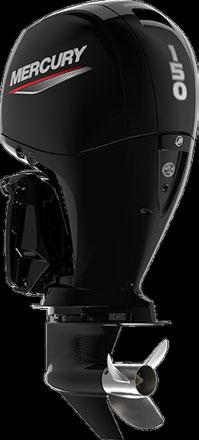
Call




















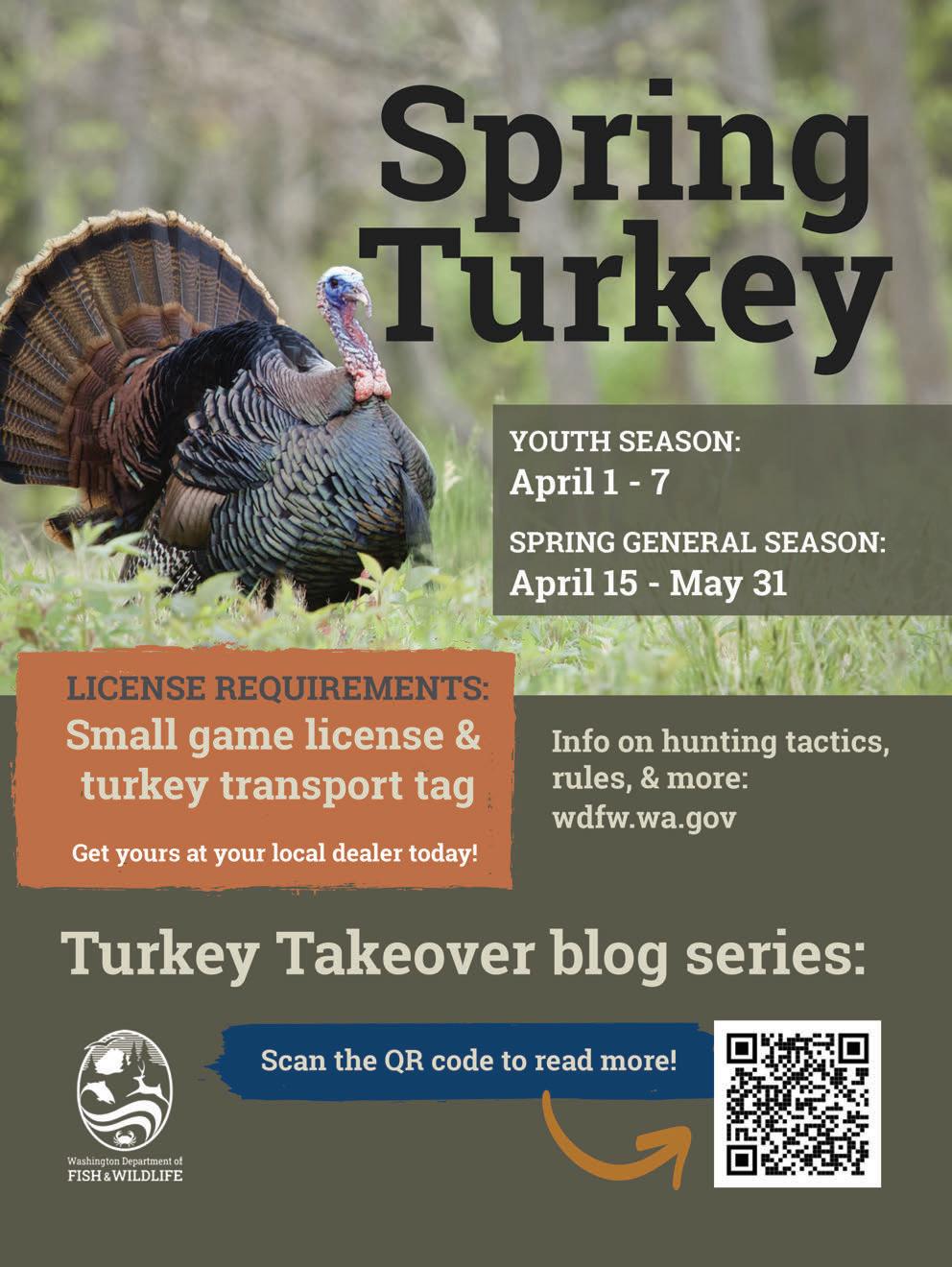



Volume 16 • Issue 8
PUBLISHER
James R. Baker
EDITOR
Andy “Fill in the blank” Walgamott
THIS ISSUE’S CONTRIBUTORS
Dave Anderson, Jason Brooks, Scott Haugen, Jeff Holmes, MD Johnson, Randy King, Sara Potter, Buzz Ramsey, Dave Workman, Mark Yuasa
GENERAL MANAGER
John Rusnak
SALES MANAGER
Paul Yarnold
ACCOUNT EXECUTIVES
Tawna Lucero, Tom St. Clair
DESIGNERS
Gabrielle Pangilinan, Lesley-Anne Slisko-Cooper
PRODUCTION ASSISTANT
Emily Baker
OFFICE MANAGER/COPY EDITOR
Katie Aumann
INFORMATION SYSTEMS MANAGER
Lois Sanborn
WEBMASTER/DIGITAL STRATEGIST
Jon Hines
ADVERTISING INQUIRIES ads@nwsportsmanmag.com


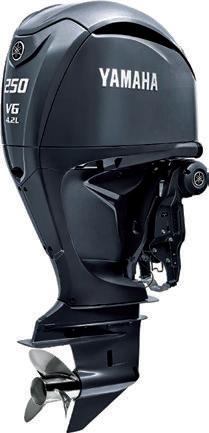
CORRESPONDENCE
Email letters, articles/queries, photos, etc., to awalgamott@media-inc.com, or to the mailing address below.
ON THE COVER
Jeff Flatt shows off a nice spring Chinook he caught late last May. (KNIFE PHOTO CONTEST)
DEPARTMENT OF SOCIAL SERVICES
Like us on Facebook, follow us on X, and get daily updates at nwsportsmanmag.com.


MEDIA INDEX PUBLISHING GROUP 941 Powell Ave SW, Suite 120 Renton, WA 98057
(206) 382-9220 • (800) 332-1736
Fax (206) 382-9437 media@media-inc.com mediaindexpublishing.com


65
With no limit and runsizes in the millions, American shad represent an opportunity to put a lot of fish on a stringer in a hurry in late spring and early summer. Mark Yuasa gets you ready for 2024’s return up the Columbia and Willamette Rivers.
71 CHECKING IN ON THE NORTHERN PIKEMINNOW PROGRAM
Northwest Sportsman’s very own “Pikeminnow Millionaire Hopeful” MD Johnson takes a look at the program that’s paid anglers for helping to protect salmon and steelhead in the Columbia and Snake Rivers since the early 1990s in a Q&A with manager Eric Winther –who details right where he’d start the May 1-September 30 moneyminnow season!
97 TALKIN’ OCEAN HALIBUT
It’s go time for flatties off the Oregon and Washington Coasts, and managers at ODFW and WDFW share their thoughts on 2024’s fishery expectations, the new six-fish limit for Evergreen State anglers, and more!
116 CONFLUENCE OF OPS
The vast region where the Snake and Clearwater Rivers meet is Jeff Holmes’ playground in spring. Our far-traveling sportsman details the opportunities for spring Chinook and bass fishing and turkey and morel hunting in one of his favorite places to stay and play in the West!
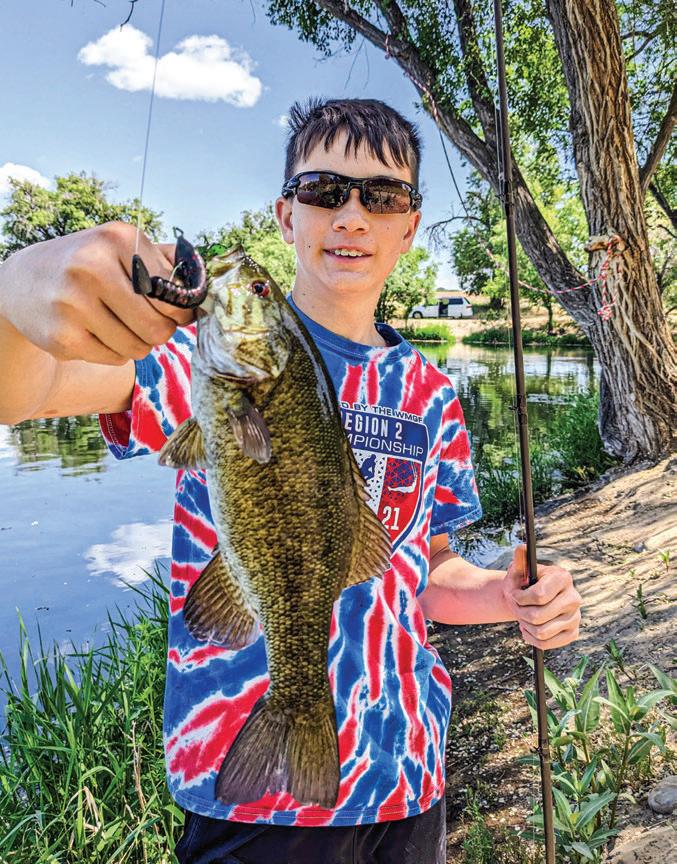
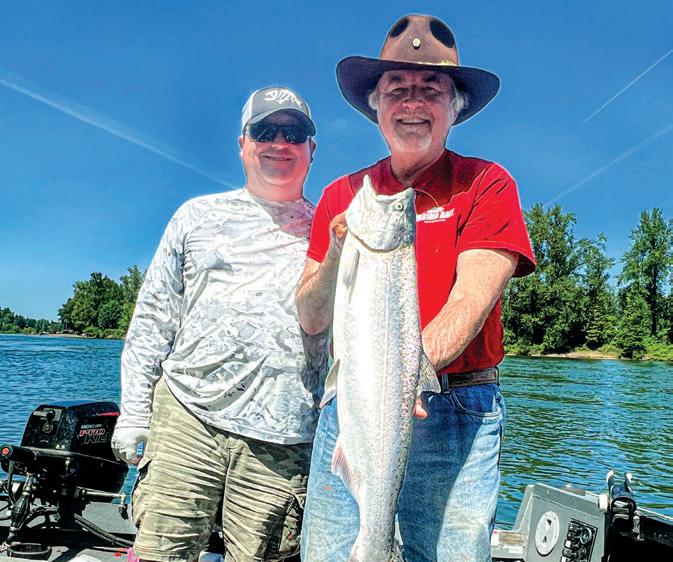
78 NORTHWEST PURSUITS
Small Stream Success
As winter releases its grip on mountain streams throughout the Northwest, Jason whips up a primer for how flyrodders can take advantage of Skwala hatches to cast for rainbow, cutthroat, brook and other trout.
89 FOR THE LOVE OF THE TUG
Don’t Blink
True, Buzz has his own boat, but he spent a lot of time last May hitching rides with some of the top springer guides in the Northwest. He reports back on what he learned about catching Chinook in the Willamette and Sandy Rivers and Drano Lake.
(BUZZ RAMSEY)
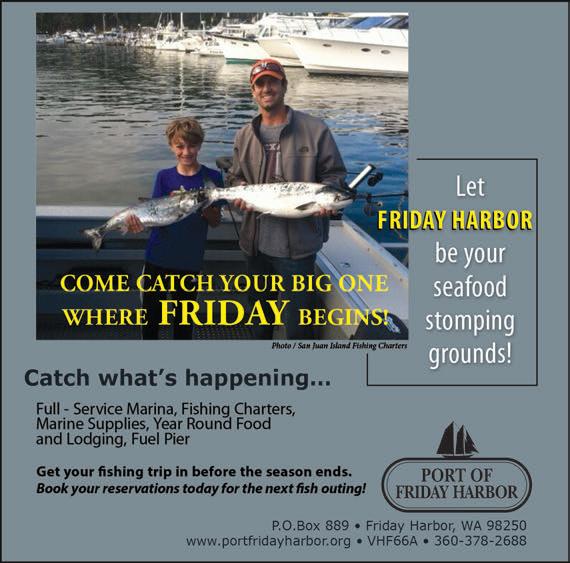
My, how time flies! It was a decade ago that Sara began fishing her Southern Oregon river with kiddos Nate and Ava, and she shares a look back at how they’ve all grown tremendously as anglers and a family across the years.
133 ON TARGET
Late-season Toms, New Leverguns, And Firearms For Self-defense
With turkey season running through the end of the month, Dave W. has some tips on where to find gobblers. He’s also got details on some new Marlin lever-actions, and with warmer weather finally here, shares advice on the best handguns to carry while fishing, foraging, hiking or otherwise being outdoors in critter country.
143 CHEF IN THE WILD
Use Your Noodle(s) To Cut Backpack Hunting Weight
Backcountry bear hunting in spring is Chef Randy’s thing, but keeping his backpack light is tough. While he won’t be scrimping on sleeping gear, he’s figured out another way to cut pounds and ounces – and still eat deliciously while prowling for bruins.
149 GUN DOG
The Hunt For White Sheds
Scott shares how dog trainer Donn Walgamuth’s German wirehaired pointers track down weather-bleached big game antlers by smell.
152 BECOMING A HUNTER
Playing Nice: The Unwritten Rules Of Hunting Public Land
Spend enough time in national forests or state wildlife areas and you’re likely to come across somebody who thinks they own the whole damn place. What do you as a new hunter do when that happens? Dave A. has some ideas.





As more and more walleye stream past Lower Granite Dam, a new joint-agency work group with a goal of reducing nonnative predation on Snake and Columbia salmon and steelhead smolts has been formed, putting a spotlight on the species’ future management.
25 THE EDITOR’S NOTE
Skykomish hatchery Chinook closure
47 READER PHOTOS
Winter blackmouth and steelhead, spring turkeys and Chinook, and more!
47 PHOTO CONTEST WINNER
Monthly Coast and Kershaw prize-winning pic
51 THE DISHONOR ROLL
Man charged with running down John Day city deer; Case update –Former JOTM sentenced for animal cruelty; Kudos; Jackass of the Month
53 OUTDOOR CALENDAR
Upcoming fishing and hunting openers, events, deadlines, more


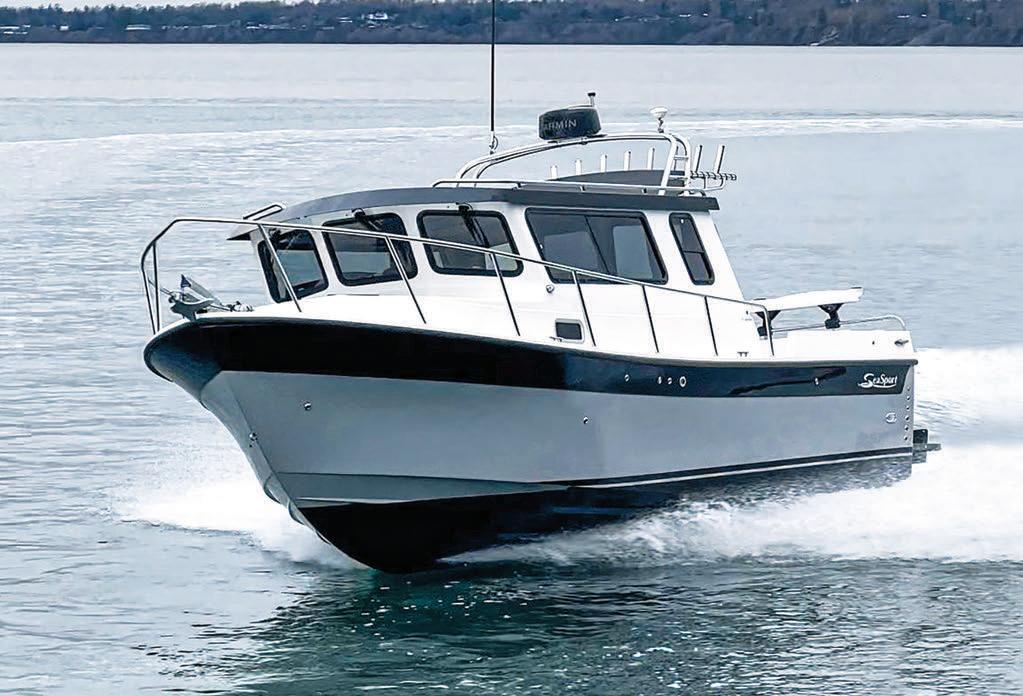
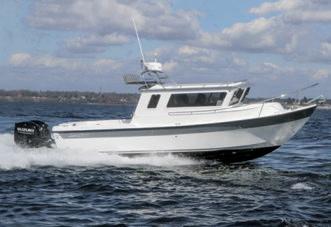






My apologies for talking about the same damn things here year in and year out, but such is the circular lifecycle of fishing and hunting seasons, the game and fish that power them, and the overarching management processes.
In this space exactly 12 months ago, I bemoaned the news out of 2023’s North of Falcon salmon-season-setting process that Puget Sound’s popular Skykomish River hatchery summer Chinook fishery would only open for three days in late May. It was a bitter pill for the system I cut my salmon and steelhead angling teeth on, but I thought it would probably be the low point.
Well, somehow we’ve reached a new low: There won’t even be a season this year. The extraordinarily frustrating – albeit not entirely unexpected – official news came right at press deadline for this issue and means Skykomish anglers won’t be able to tap into 8,400 clipped kings.
“Frustrating to say the least!” confirmed Mark Spada, a longtime local angler and member of the Snohomish Sportsmen’s Club. “Especially when you consider that there is no data that shows there is any Snoqualmie Chinook in the Sky.”
WHAT’S THE DEAL? As Spada alluded, the closure is due to very low numbers of wild fall Chinook returning to the Skykomish’s neighbor, the Snoqualmie. After Alaska, British Columbia, Washington Coast and Puget Sound fisheries take their expected whacks (incidental and otherwise) out of them this season, Snoqualmie kings are modeled to fall below what’s known in 2022’s Puget Sound management plan for the Endangered Species Act-listed population as the “lower bound threshold.” It essentially requires heavy fishery restrictions on the overall system, which I warned about in an early March blog. (Wild Skykomish summer Chinook aren’t doing great either.)
Sky anglers will bear the greatest loss of opportunity, but the Washington Department of Fish and Wildlife also trimmed 10 percent off of last year’s hatchery Chinook quotas for Marine Area 5, 9 and 10’s fisheries this summer. Those areas account for the three highest saltwater impacts to the stock in WDFW-controlled seas.
Now, state salmon managers made clear from the get-go of NOF 2024 that initial modeling showed these particular fish would likely be among this year’s most constraining stocks. Still, early on WDFW posted a glimmer of hope: “The initial number of fishing days in the Skykomish River is uncertain but is currently modeled at 22 days for summer hatchery Chinook.” In hindsight, that was preposterous to even put out there – it would have required massive restrictions in saltwater, highly unlikely due to likely strong marine angler pushback.
AT THE END of the day, Spada termed managing wild Chinook in the Skykomish and Snoqualmie as an aggregate stock instead of individual rivers as “moronic, at best.” He was especially embittered that thousands of hatchery kings will go unharvested, and prophesied the base situation isn’t going to go away and could even get worse.
The problems wild Chinook in the Snoqualmie and Skykomish face include scouring fall and winter floods suffocating redds; low summer flows, habitat alterations and less shading that reduce refugia for baby fish; bank armoring that warms water temperatures; ocean conditions, marine mammal predation, fisheries interception, etc.
The problems Skykomish hatchery Chinook anglers face are less well known: River anglers outside of the Columbia have never really been a strong force at North of Falcon, but after two years now of getting stiffed, maybe that will change in 2025. –Andy Walgamott

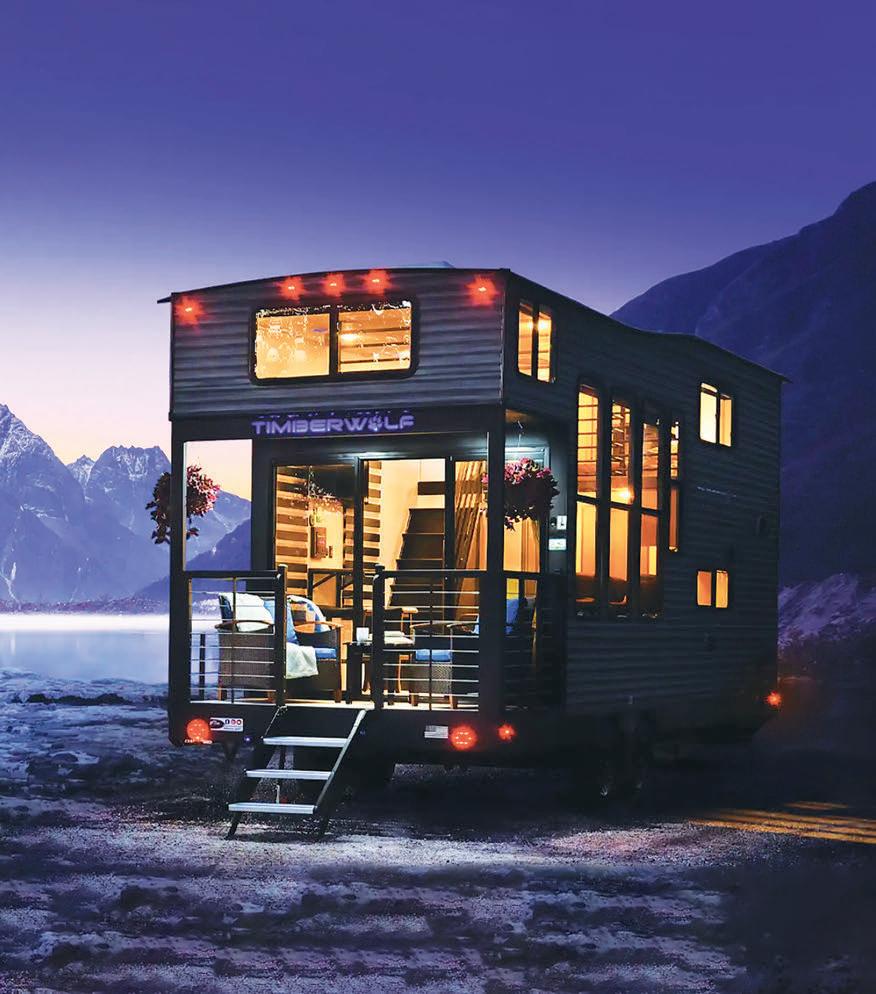


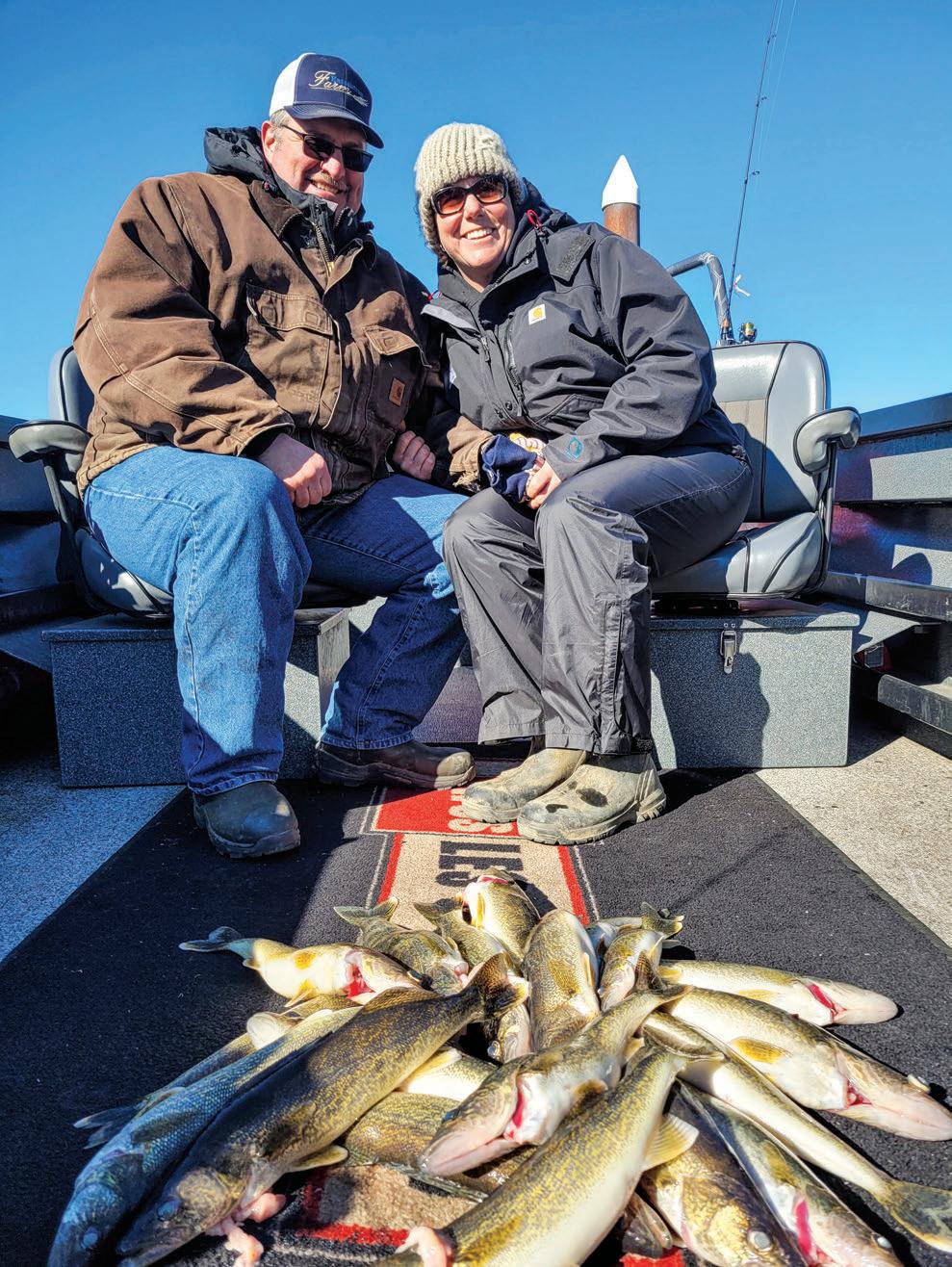 (SHEILA HASSELSTROM)
(SHEILA HASSELSTROM)
Idaho Panhandle cattle and sheep ranchers Eric and Sheila Hasselstrom smile over a nice pile of walleye. The couple’s plans to hold a “Walleye Jackpot: Farmers for Salmon” catch-and-kill event on Washington’s Snake River this past March drew “extreme pushback” and had Sheila wondering if salmon and steelhead anglers and guides had given up on the native species in favor of this introduced one.
As more and more of the fish stream past Lower Granite Dam, a new joint-agency work group with a goal of reducing nonnative predation of Snake and Columbia salmon and steelhead has been formed, leading to questions about the species’ future management.
By Andy WalgamottAnother clear warning about walleye expansion up the Snake River was issued in late winter by Idaho salmon and steelhead biologists, who also unveiled a new multiagency focus on addressing the nonnatives there and in the rest of the Columbia Basin.
Not only are far more walleye moving past Lower Granite Dam than previously believed, but they’re overlapping more and more Endangered Species Act-listed fall Chinook rearing habitat and have been caught at the mouths of the Clearwater, Grande Ronde and other rivers, out of which swim listed wild and hatchery spring Chinook and summer steelhead smolts.
And stomach sampling last year found salmonids make up a larger part of walleye diet than native northern pikeminnow –which are being actively suppressed for just that reason – as well as introduced smallmouth bass in almost all cases in the lower Snake.
While there are still many questions around Snake River walleye out there – are they moving past Lower Granite to feed or have they now established a breeding population above there, and if so, where do they spawn and how many are there? Did bucket biologists give this popular Midwest fish a helping hand? – a new state-tribal-federal work group has also been formed to address the species and several others in the Columbia Basin.
That’s the nut of a mid-March
presentation to the Northwest Power and Conservation Council by Marika Dobos, a fisheries biologist with the Idaho Department of Fish and Game. It follows on the increasingly alarming updates in recent years from IDFG and echoes what I’ve been reporting at nwsportsmanmag.com the past two years about growing incidental catches of walleye at Lower Granite Dam’s Boyer Park by Northern Pikeminnow SportReward Fishery participants – 2,085 last year, which was nearly twice as many as 2022, which itself was 12 times 2021’s tally.
And it all should signal that there appears to be an increasing urgency around the issue, given the ongoing struggles of salmon and steelhead and the billions of dollars that have been spent on recovering them, and now the renewed focus toward that end, including possibly breaching the lower Snake dams, by the Biden Administration and the “six sovereigns” via the Columbia Basin Restoration Initiative.
Dobos said the new Walleye/NonNative Piscivore Work Group is made up of representatives from IDFG and the Washington and Oregon Departments of Fish and Wildlife, the Umatilla and Nez Perce Tribes, the U.S. Geological Survey and the National Marine Fisheries Service’s Northwest Fisheries Science Center. It has a mission statement of “Implement research and management actions with a goal to reduce, minimize, and prevent piscine predation-related mortality from introduced nonnative fishes on anadromous species within the Columbia River basin.”
SO HOW DID we get here? Since walleye were released into Banks Lake near Grand Coulee Dam, perhaps as far back as the 1940s, they have inexorably spread down the Columbia River system, but it wasn’t until the late 1990s that they apparently first entered the Snake.
Dobos told members of the Northwest Power and Conservation Council, which balances hydropower generation in the Columbia Basin with mitigating its impacts on fish and wildlife, that red flags about potential impacts to Idaho’s young salmon and steelhead really began to go up in 2016 when the first two walleye were observed at the fish trap at Lower Granite, the fourth dam on the Snake above the Columbia. Trap numbers have risen nearly every year since then, and 2023’s 154 was more than twice as many as both 2021 and 2022, 75 and 73, respectively.
She said that the walleye being seen there have already grown to a size where their diet has switched over to fish, and their arrival in the trap in recent years has also moved earlier, from mid-August in 2020 and 2021, to July 1 in 2022 and early June in 2023, timing that puts them more in the window of smolt outmigration.
But the trap count only reflects a percentage of passage – and much less than previously known. It had been assumed that 20 percent of all species were caught in the trap, a sampling facility not meant to capture all fish passing by, but the situation with walleye showed that that’s not necessarily the case.
Dobos explained that while the Army Corps of Engineers isn’t contracted to count walleye and other “nontarget species” at the dam, they did agree to provide window counts for April-October 2021.
“And they counted nearly 2,000 walleye,” she said. “And what’s alarming is that we only caught 3 percent of those in the trap, and so that disparity was not something we expected. Because the trap rate runs on average 20 percent, we were expecting that 75 was 20 percent of the walleye in the ladder, and that’s not the case.”
That led to a test with last year’s 154 trapped walleye. Instead of being killed like all of those that turned up in the trap in 2020, 2021 and 2022, these fish were given passive integrated transponders, or PIT tags, like salmon smolts receive and then released back below Lower Granite to see how they moved through the dam, which is well equipped with sonar arrays to read the signals of passing tagged fish – except through the barging locks. Almost half the walleye entered the ladder again, Dobos reported.
The data did suggest some ways to somewhat mitigate passage, if managers could agree on approaches, she stated.
In response to her presentation, Ed Schriever, an NWPCC member representing Idaho, favored a “hit ’em hard and hit ’em fast and don’t take your foot off the gas” approach applied where there could be less collateral damage from gillnetting, electroshocking or poisoning to the multiple native species that managers are trying to recover. He said the first priority is to determine if walleye are already spawning above Lower Granite.
“If we’re just recruiting new animals through the lock or the ladder, it seems like the most urgent thing we can look at is, how do you make changes to the ladder? Walleye aren’t the strongest swimmers in the world. Can we sort them out by making it harder to get through the ladder and still allow those fish we want to get through the ladder, get through the ladder?” Schriever asked.
He also acknowledged it may be too late for that, but advised Dobos to figure


out how to stop the flood.
“I’m looking at your counts; they’re ready to go ballistic, and they may already be. It’s quite possible there’s enough fish that have expanded their range (that) if they are successfully reproducing, that horse has left the barn. I hope that’s not the case, but I would really encourage you to be thinking about significantly slowing down the rate in which these fish are crossing Lower Granite,” Schriever urged.
EVIDENCE THE HORSE has indeed left the barn – or at least is trotting that way –comes from angler catches. IDFG has been putting out the word in recent years asking fishermen to keep walleye and report their landings to the nearest office. In 2023, they heard about 16 different walleye caught in the region – four times as many as all previous years combined.
“This was a big number and it was pretty concerning,” Dobos told the council. “What was even more concerning was where these fish were caught.”
A map she shared showed walleye catches at the mouths of the Clearwater, Asotin Creek, Grande Ronde and Salmon, as well as 40 miles above the Salmon on the mainstem Snake in the heart of Hells Canyon and as far up the Salmon as Riggins.
In a story about Dobos’ presentation by KC Mehaffey in Clearing Up, a hydropowerworld news outlet, WDFW Region 1 Fish Program Manager Chris Donley added that walleye are beginning to be seen in fish traps on the Tucannon River, which is well downstream of Lower Granite, and he speculated they might also be above the dam in the Ronde and Oregon’s Imnaha.
Walleye have been in the Snake off the mouth of the Tucannon much longer than those two Hells Canyon tributaries, but it is emblematic of where the danger really is for fish that did not evolve with and learn to fear walleye.
“We’re starting to get much more overlap in these juveniles that are trying to make it out to the ocean, so they’re spending some time in these large rivers (with walleye) until they make it out to the ocean,” IDFG’s



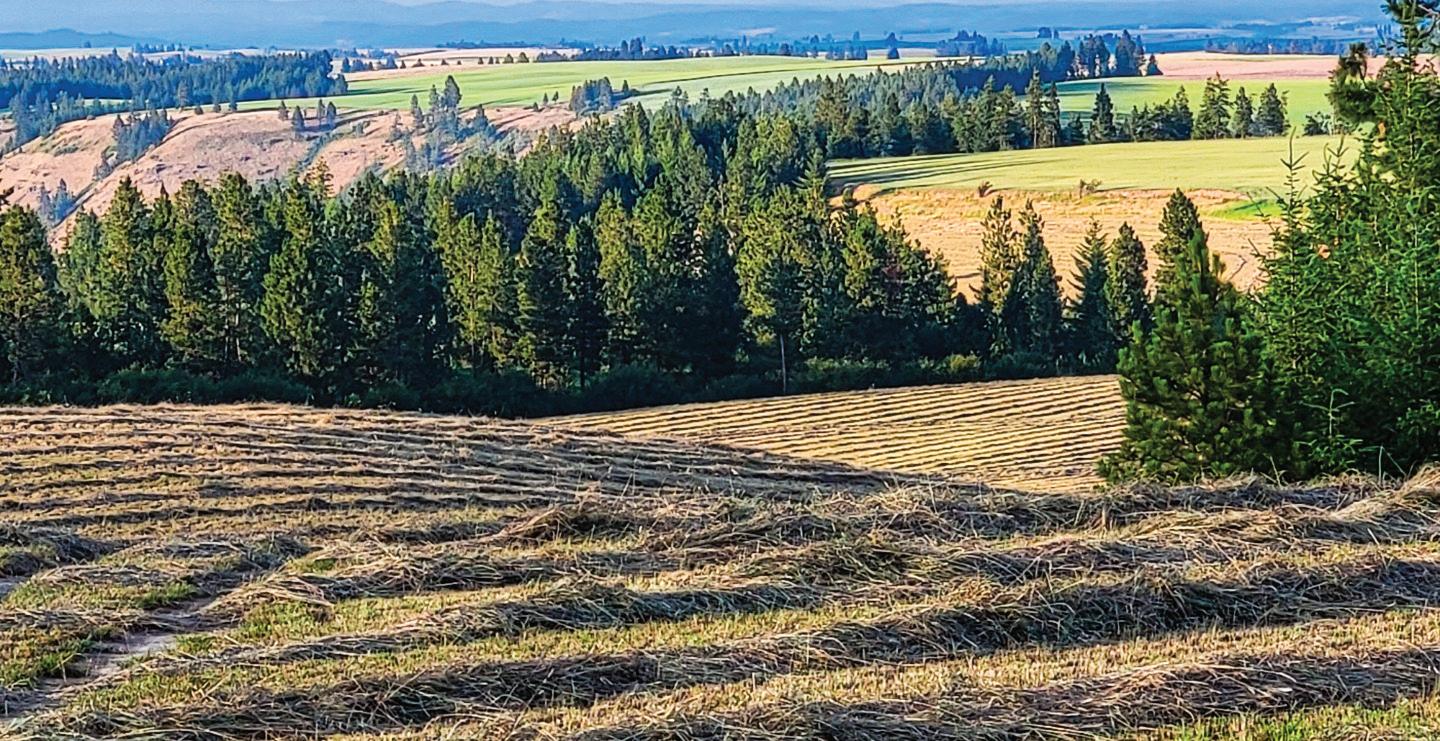
Dobos said. “It’s also overlapping some of our hatchery releases for these very important mitigation programs.”
She specifically pointed to Idaho fall Chinook, which are mainstem spawners.
“The juveniles are actually rearing a lot longer in some of these lower rivers,” Dobos said.
The triumphant rebuilding of that federally listed stock, led by the Nez Perce Tribe, allowed for the resumption of tribal and state fisheries in 2009 after a 35-year pause. Harvest rates up and down the Snake and Columbia are still constrained by the Snake River wild, or SRW, component of the overall fall run, but WDFW catch stats for 2021-22, the most recent season available, show 1,178 clipped and unclipped adult fall kings were retained in the Snake that year – 1.3 percent of all Chinook landed in freshwater in Washington for the season.
“Fall Chinook nearly blinked into extinction in the Snake River, and a lot of folks have worked really hard to build that program up over the years, and have done a really good job, and it’s one of our few success stories in the Clearwater,” Dobos stated. “And if walleye continue to colonize and establish in more numbers in these reaches, that could spell a different story for
this program in a very short amount of time.”
WDFW’s Donley told Clearing Up that when walleye begin spawning in the same tributaries as wild salmon and steelhead rear, the impact “goes through the roof.”
Dobos touched on how that occurs.
“We have steelhead in the Clearwater that will occupy the mainstem Clearwater and Selway and Lochsa River for multiple years before they go out to the ocean. So what’s happening is you’re expanding the amount of time that these fish are overlapping with these predator fish, and there’s a higher risk that walleye are just going to capitalize on this food source in the future. So it’s really concerning,” she said.
And as walleye establish themselves in lower portions of Snake tributaries, pilot fish will continue to expand the population into the higher rearing areas for the basin’s spring-summer Chinook and summer steelhead, Dobos warned.
SHE ALSO SHARED 2023 electrofishing data from ODFW, part of an every-threeyears effort to track relative abundance of northern pikeminnow, smallmouth bass and walleye and their diets in the Snake. Last year, crews shocked up walleye for the first time in the Lower Granite Pool, finding
them above Clarkston, she said, and they saw a “significant” spike in relative walleye numbers in the tailraces of Ice Harbor, Lower Monumental and Little Goose Dams.
ODFW also pumped stomachs of the fish, she reported.
“Salmon and steelhead … made up a large portion of walleye diet. That’s not surprising; what’s surprising is that when you compare it to northern pikeminnow and smallmouth bass, walleye had the highest proportion in most cases,” Dobos said.
It will have been a point-in-time estimate and likely collected when you would expect smolts to be available in some numbers and on the move downstream, but salmonids represented 50 percent of walleye diet at Lower Granite, 47 percent at Ice Harbor, 30 percent at Little Goose and 14 percent at Lower Monumental, according to the ODFW data Dobos shared.
Little Goose was the only place where either of the other two species outconsumed walleye, and just barely – salmonids made up 33 percent of the northern pikeminnow diet there.
More details on ODFW’s electrofishing efforts should be spelled out in the forthcoming 2023 annual pikeminnow program report, but Dobos also compared

and contrasted past and more recent salmonid consumption rates. In the early 1990s, at the beginning of walleye colonization of the Lower Columbia and at a time of relatively suppressed salmon populations, they ate on average less than half a smolt a day at peak outmigration, she said. In the McNary Pool in May and June 2016, a time of more robust hatchery salmon mitigation programs and with an established walleye population, the fish ate an average of 2.52 young salmonids a day.
“So you have higher consumption and you have a lot more mouths to feed. And I can tell that you most of these (smolts) are fall Chinook ... from the upper Columbia bright program,” Dobos said. “If the prey are available, these fish capitalize on it and they do a pretty good job of adapting to the situation.”
INDEED, WALLEYE ARE just doing what walleye do. They “aren’t bad fish,” IDFG has stated. Given access to new waters with naïve and abundant feed, of course they’re naturally going to colonize them. It’s a story as old as mankind and the Earth itself.
But the size of both the Snake and Columbia Rivers, the multitude of managers involved and the strong yearround overlap between anadromous species and walleye makes managing them a “logistical nightmare” at this point, Dobos acknowledged to the council. Even in waters not connected to the sea, walleye suppression efforts “have been met with a lot of difficulties,” she added.
She said that one of the biggest challenges managers face – and one not often talked about – is the angler support seen for walleye in the Inland Northwest.
The delicious eater-sized fish and the “big girls” – those egg-stuffed trophies that just might get your name in the state or, heck, world record book if you catch one in late winter – are revered by some. And with a lower stigma around keeping them than with bass, Stizostedion vitreum represents a reliable bridge fishery between salmon runs, helping to put filets in fishermen’s frying pans and greenbacks in guides’ wallets.

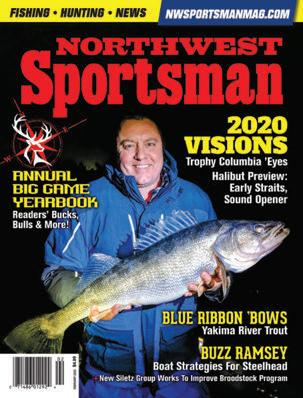


“There’s a community out there that is very supportive of having walleye everywhere,” Dobos said. “These folks are very boisterous, they’re a very strong group, and if pushed to the suggestion of managing walleye, they do get organized and they will be something to – a difficulty to try and mitigate through.”
Sheila Hasselstrom can tell you that better than many. She’s the president of the Clearwater-Lewis County chapter of the Idaho Farm Bureau and she and her husband Eric raise cattle and sheep on 3,000 acres on the Nez Perce Reservation just north of Winchester.
When they can break away from the farm, the Hasselstroms enjoy taking trips to catch walleye, as well as bass and steelhead. It was while talking with guides about growing numbers of walleye at the Snake-Clearwater River confluence that an idea was born in Sheila’s head.
“(Walleye) are predator fish that are eating our salmon, and they are migrating right upstream to our salmon hatcheries. The truth of the matter is that a high percentage of salmon smolts are being eaten by predators like walleye and birds on their journey to the ocean and a high percentage of adult salmon are being

The formation of a state-tribal-federal work group around nonnative fish in the Columbia Basin suggests changes might be coming to the management of walleye, but is the species’ expansion up the Snake already a foregone conclusion? This one was caught last year at the mouth of Rush Creek, an Oregon-side tributary of the Snake that flows into Hells Canyon 40 miles above the mouth of the Salmon, 60 miles above the Ronde and 121 miles above Lower Granite Dam. (IDFG)
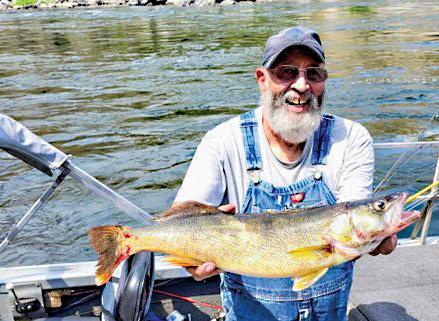
eaten by nonnative sea lions and seals on their trek back up the Columbia to spawn, but not much at all is being done about that,” Hasselstrom told me.
After pitching her county board on hosting what became the “Farmers for Salmon: Walleye Jackpot” out of Lyons Ferry on the Snake, Hasselstrom said they contacted WDFW to go over the nuts and bolts. She recalled she was advised to call it a jackpot and not offer payouts like a traditional competition. Fish are largely released alive at walleye and bass tournaments, but this was to be a catch-and-kill event with prizes awarded via a ticket drawing.
“As farmers, we care about salmon recovery, and we just want to draw attention to the predator problems in the river system,” Hasselstrom said. “This event was to be a fun way to engage the agricultural community in a sideline problem to salmon recovery.”
Soon, the statewide Farm Bureau board offered money to help with funding, she said, and it took off from there, with guides contacted to hold boats open and IDFG asking to collect biological samples to research Snake River walleye movements.
However, as word about the Walleye Jackpot spread further, including on my blog, Hasselstrom faced “extreme pushback,” and so she decided to cancel.
It all left her puzzled.
“We understand that sportsmen and guides are protecting their walleye and bass populations to preserve their businesses,” Hasselstrom said, “but walleye and bass are both nonnative species that feed on salmon and steelhead smolts as they flush to the ocean. Washington Fish and Wildlife currently have no limits on walleye, but what we have seen is that the guides are throwing back the big trophy mommas and limiting their customers to 12 to 15 fish per day.”
“This begs the question,” she stated, “have sportsmen and guides given up on salmon and steelhead?”
TOUGH QUESTION. I know for one I haven’t at all, which is why I’ve spent so much damn time reporting on this growing danger of building walleye numbers in the Snake (along with shad, northern pike and walleye in Lake Washington, pike everywhere else, smallmouth in the Coquille, etc.).
But I can also see how Chinook, summerruns, coho and sockeye might not be for all anglers, especially those who’ve come here from Minnesota, Wisconsin or elsewhere in the native range of walleye. Given the widespread belief in conserving the resource in anglerdom, I can understand why some limit their take and release the spawners so
as to perpetuate the species ad infinitum.
And lord knows that decades of doomand-gloom stories about salmon and steelhead runs with few bright spots will have folks trying to make the most of a fishery that looks to have legs and ain’t ever gonna be kiboshed by poor ocean conditions, or commercial fishing on the North Pacific or mid-Columbia, or pinniped predation, or managers’ allocations, or ESA restrictions, or any of the myriad other things impacting salmonid returns and making for less and less stable fisheries. I mean, when the hell was the last time you ever saw walleye angling closed by an emergency rule change notice?!
When I brought up the Walleye Jackpot with a deeply invested salmon fishing world source I respect a lot, I was gobsmacked to essentially hear a “meh” out of them. But their argument was that removing invasive fish hasn’t been shown to be effective in bringing back native ones, so why upset walleye anglers’ apple cart?
Furthermore, biologically, the growing walleye population is emblematic of the Snake’s altered state, they asserted. Nonnatives and even native ones like northern pikeminnows are just going to do a lot better in modified habitats than Chinook, steelhead and coho. A better plan, they argued, is to restore what salmonids need, including focusing on reducing water temperatures through streamside habitat improvements and buffers. Cooler flows might help offset the advantage walleye will receive as climate change continues to warm rivers.
Sheila Hasselstrom and I will find ourselves on very different sides of breaching Snake dams – they’re critical to her region for transporting wheat and other products to market; for me, removing them is likely to sharply improve spring Chinook smolt survival and potentially reclaim lost fall Chinook spawning grounds – but I do very much applaud her for the Natural Resources Conservation Service programs she said she and her husband have implemented on their farm.
“They range from changing our tillage program to a no-till practice (to reduce tillage erosion) to fencing off our streams from livestock access, and implementing riparian waterway planting to absorb nutrient loss
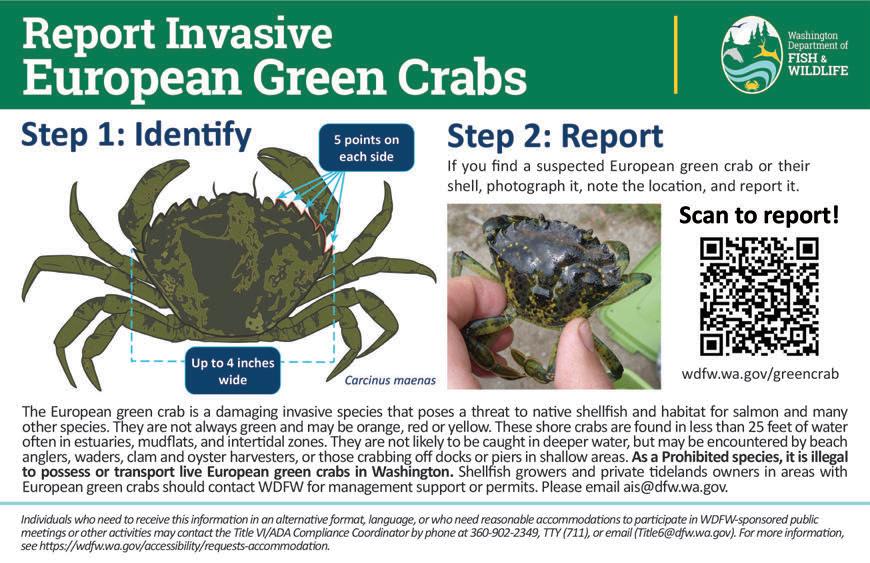
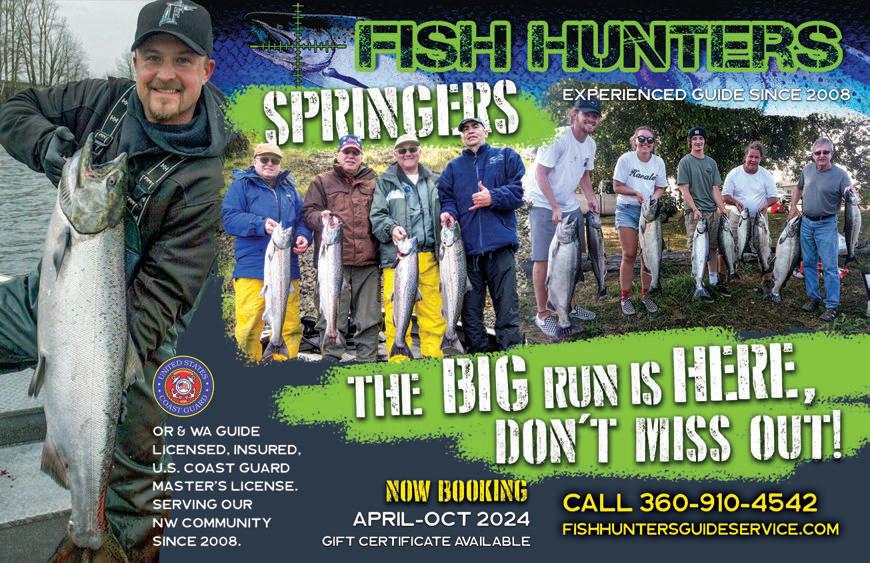
from our farm ground,” she told me.
Hasselstrom added that her county’s forestry and agricultural communities also look to how best they can protect streams and reduce erosion and runoff.
“This protection improves water quality and salmon populations. In Clearwater County, the Clearwater River brings a large amount of revenue in the form of tourism to the town of Orofino with salmon and steelhead fishing,” she stated.
While the Walleye Jackpot was canceled, she, fellow farmers and a few guests did fish out of Lyons Ferry anyway in mid-March and kept a reported 69. It was a trip I was invited on but couldn’t make because of last issue’s deadline.
IF HASSELSTROM SHIED away from public backlash over killing walleye, not so for one of her veritable neighbors. Eric Barker, outdoor reporter for the Lewiston
Tribune, wrote that it was unfortunate that the jackpot was canceled, and while he acknowledged that without a pikeminnowlike bounty on their heads it was unlikely anglers themselves would ever knock down the walleye population, he still felt a civic calling straight out of the LC Valley.
“The idea that the more of them I eat, the more I’m helping native salmonids is pleasing to me,” he wrote.
Having chronicled the entry of another toothsome predator into this same countryside, Barker offered some modified bumper-sticker slogans for the cause: “Save a Salmon, Wack a Walleye”; “Walleye: Smoke a Stringer a Day”; “Walleye CCC: Cast, Cook and Consume.”
The rise of walleye numbers at both Lower Granite and the Snake-Clearwater confluence was predicted as far back as 2017 by a purported top-20 pikeminnow program angler based on rising catches and reports they saw, but it’s taken off far faster than even they imagined. When 2022’s reward fishery wrapped
up, I emailed WDFW’s Donley about the increasing numbers of walleye being incidentally caught by participants at the dam’s Boyer Park, even though no money is offered for them. I asked whether those pikeminnow anglers might be first and foremost salmon and steelhead fishermen concerned about walleye predation, and so they were doing something about it.
“I’d like to think that our consistent message that walleye are bad for salmon and steelhead would get people on board with killing them,” Donley replied. “However, after 27 years I’ve learned that many anglers don’t believe us and some simply won’t agree out of politics of identity or spite. Who knows, maybe pikeminnow anglers are more enlightened about salmon and steelhead conservation. We’ve been consistent in our message, so maybe someone is listening.”
THIS IS ANOTHER issue that tears me up; I can see both sides on the Snake.
As a native Northwest salmon and



steelhead angler, I’ve banged the drums about controlling piscivorous fish, birds and marine mammals, I’m invested in continued hatchery production for river and ocean fisheries and conservation purposes and I advocate for restoring habitat for the extended instream life phase of young wild fish, so it’s hard not to see this walleye invasion into perhaps the last best coolwater spawning and rearing grounds in the Snake as anything but an existential threat that must be met head on.
Yet as a regional hook-and-bullet magazine editor, it’s hard to ignore the rise of a new fishery, one that’s created its own tackle lines, one that attracts anglers from as far away as the Midwest and one that I’ve put on my cover many, many times, and more than likely will again, so it’s hard not to be a bit protective of that too.
Obviously, I’m conflicted, but I do know that there are hundreds upon hundreds of
river and reservoir miles in the Columbia Basin where walleye can already be targeted and never ever will be eradicated, even if Glacial Lake Missoula blows out again, the radioactive Hanford Plume reaches the mainstem, the Chief Joseph Dike Swarm fires up and bleeds basalt all the hell over the place. And so I wonder if, given the still relatively early colonization of walleye above Lower Granite, the new all-of-government approach to salmon restoration and the importance of this region for native fish –as well as their unparalleled cultural weight throughout the Northwest – an argument might be made to designate this part of Washington’s, Oregon’s and Idaho’s Snake River as a walleye control zone. Declare it a place where they are not tolerated, like, say, sea lions at Bonneville and Willamette Falls during salmon runs, cormorants on Oregon Coast bays during smolt outmigration, smallmouth on the Coquille.
Admittedly, it’s kind of a have-your-cakeand-eat-it-too compromise, but it seems more viable than doing nothing about a growing problem or going totally nuclear.

THE ACTUAL APPROACH, however, is going to come out of that state-tribal-federal Walleye/Non-Native Piscivore Work Group that I mentioned in the first few paragraphs of this novella.
As word gets out about the group, there’s the potential for a firestorm, so I think they need to create a website that lays out who they are, the area they’re looking at, the scope of their aims and mission statement, the authority they wield to put those into motion or how they propose to, etc., etc., etc.
And I think they should also consider bringing anglers onboard the panel –salmon, steelhead, walleye, bass, channel catfish fishermen, guides, tournament directors, marina operators, pikeminnow program participants. Reps could serve as sounding boards, provide feedback and be messengers back to organizations and forums deeply invested in the topic about the increasingly critical need to act.
The time to do something was a few years ago now, but there’s no time like the present either. NS
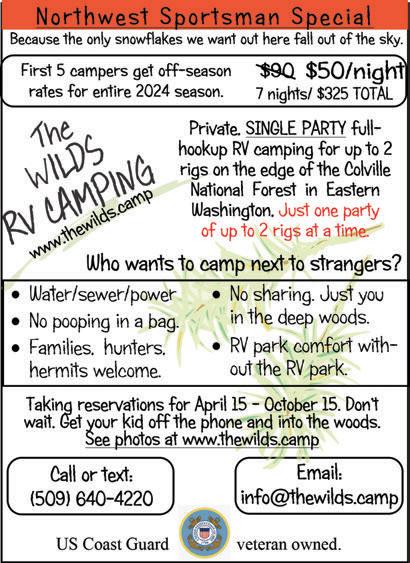



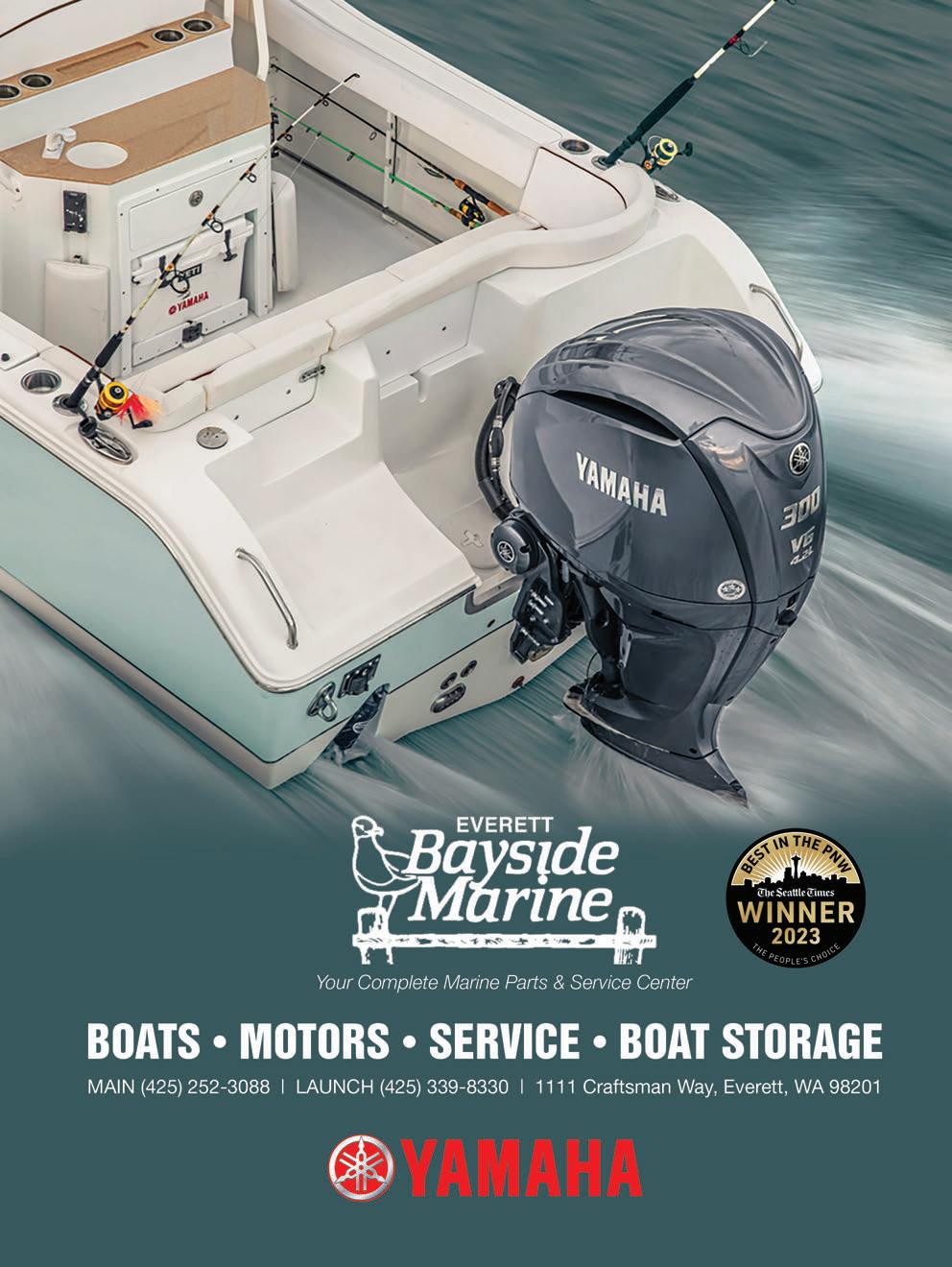
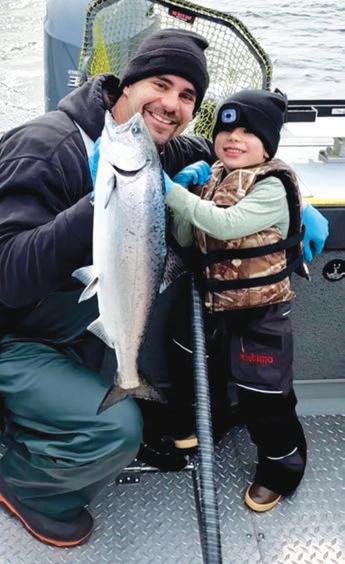
What a welcome to Washington! Brad Dailey has been making treks from his native Ohio to fish the Evergreen State since his 2010 honeymoon on the OlyPen, but this past winter the family finally moved out here for good. One of the first waters they hit was Marine Area 10, where Brad, wife Jamie and their son Filson limited on blackmouth while trolling a Tomic. “Filson did a great job reeling in this fish!” he reports. (KNIFE PHOTO CONTEST)
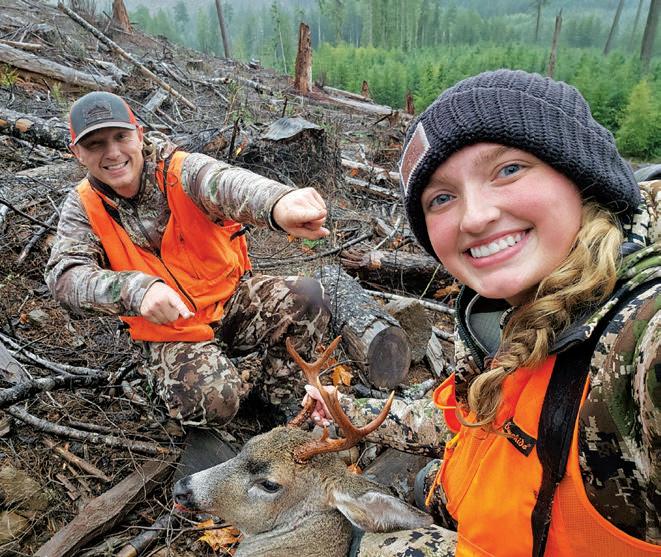
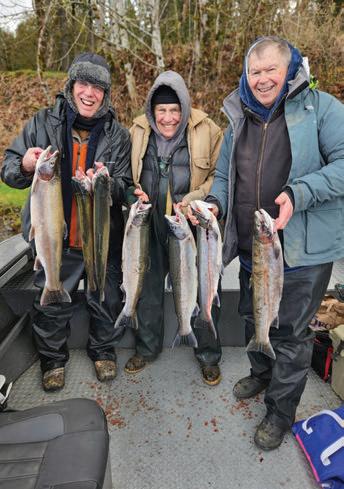
They have a few more runs under their belts than most Northwest steelheaders, but Rick Schafer, Tony Kavalok and Frank Urabeck got it done on the Cowlitz River in late winter while bobber doggin’ with guide Dylan Houfsk. (KNIFE PHOTO CONTEST)
Ashley Masters bagged this Southwest Washington buck on the last week of fall 2023’s general rifle season. “Ashley comes home every year to hunt blacktails for a week with her dad,” reports pa Skylar, who adds it’s one of her favorite adventures with him. (KNIFE PHOTO CONTEST)

Springers aren’t the only species worth fishing for on sunny early-spring days – smallies bite too, as Jeff Flatt can attest. Buddy Buzz Ramsey forwarded the pic. (KNIFE PHOTO CONTEST)
PHOTO CONTEST MONTHLY Winner!
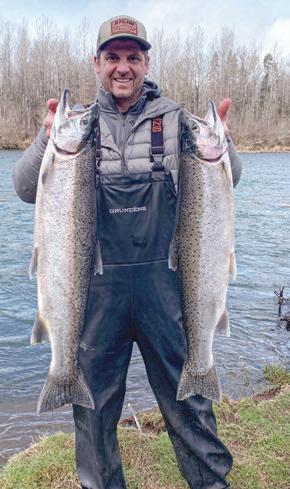
including this pair for Chad Smith. (KNIFE PHOTO CONTEST)
For your shot at winning great fishing and hunting knives from Coast and Kershaw in our Knife Photo Contest, send
details – who’s in the pic; when and where they were; what they caught their fish on/weapon they used
the merrier!) – to awalgamott@media-inc.com or Northwest Sportsman, 941 Powell
the right to distribute them for use in our print and Internet publications.
For Jerry Han, the photography might be as fun as the fishing. Here’s one of a series of great shots he took while ice fishing for yellow perch at Curlew Lake this past winter. (KNIFE PHOTO CONTEST)
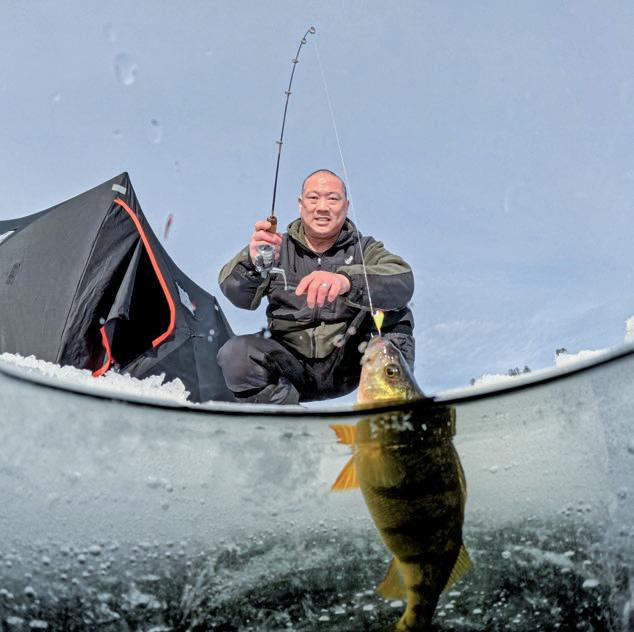

Cash Craig doubled up on turkeys during Washington’s weeklong youth season last month. The 13-year-old used his youth model 20-gauge to down these gobblers after his dad Nathan’s buddy Mike Bolt called them in. (KNIFE PHOTO CONTEST)

It doesn’t get too much chromier than this Sauk wild winter steelhead caught by Adam Perez on the North Cascades river this past season.
(KNIFE PHOTO CONTEST)
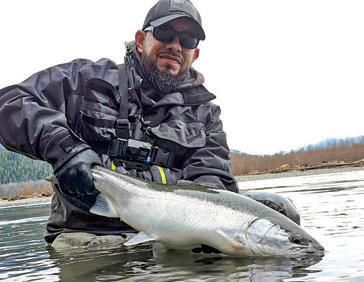
Rebecca Jones landed what could be a world-record 4.8-pound monkeyface prickleback off the Barview Jetty early last month. The eel-like fish is more common to nearshore Southern Oregon waters, but more and more are being caught on the Central and North Coast. The mostly self-taught angler is submitting her catch to IGFA. ODFW reported she found her first-ever MFPB to be “very tasty.” Fun fact: The species can live out of water 35 hours! (VIA ODFW)

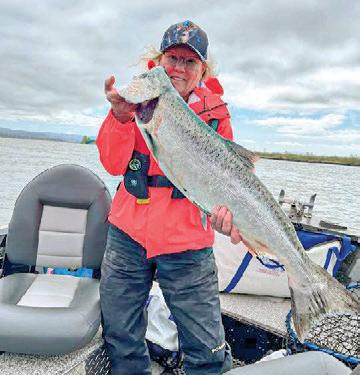
The “Pink lady” – Jamie McLeod – got her 2024 salmon season off to a great start with this 15-pound Lower Columbia spring Chinook last month. No doubt there’ll be plenty more kings and coho this year for Jamie and her 11-foot pink rod! (KNIFE PHOTO CONTEST)









Oregon fish and wildlife troopers were applauded by the John Day community after they charged a man who used his pickup to chase down several deer, including a buck that had to be euthanized due to severe injuries it sustained from being hit.
The incident occurred in February in a field next to the Grant County fairgrounds, where a witness observed a white Ford diesel spinning donuts and hitting three deer. When the witness tried to get closer to identify the driver, they took off.
A locally based OSP Fish and Wildlife Division sergeant interviewed the witness and collected evidence at the scene, then asked local law enforcement to keep an eye out for a pickup matching the description and missing grill parts.
Later that day, a similar truck was observed at a local gas station. Closer inspection by the sergeant showed that not only were pieces of the grill broken, but there was deer hair on the front of the rig. The driver claimed he had hit a deer on the road the night before, but when the officer confronted him with the evidence, he allegedly admitted to hitting the buck.
The driver was charged with harassing wildlife, unlawful take of a buck, wastage and criminal mischief.
“The reporting person and local community were very upset about the incident and thanked OSP for their perseverance in solving the case,” the agency reported in its February newsletter.
An Everett man who pled guilty to two counts of first-degree animal cruelty and a single count of malicious mischief following charges of shooting songbirds and other urban wildlife and then nailing them to his shed or attaching them for display in more public places was sentenced in late March to receive three years of mental health treatment. Blayne M. Perez, who was featured in the April 2023 Dishonor Roll, must also pay restitution of $9,174 to the owners of a kitten that he shot in the eye with a pellet gun and $1,700 in fines, and was banned from ever owning or living with an animal for the rest of his life.
No wolf – let alone any animal – ever deserves the cruel and unethical treatment that a Wyoming man inflicted upon a yearling female in late winter.
In a shocking story that made national news, Cody Roberts, 42, of Daniel ran the wolf down on his snowmobile – distasteful but legal in his state’s “predatory zone” – but then kept it alive. He took the wolf home and reportedly posed for a picture with it, duct tape wrapped around its muzzle as he smiles and holds a beer while kneeling by it. Then he brought the wolf to a local bar to apparently show off for a while before finally putting it down out back.
Brief videos shot in the bar before the wolf’s death show it lying listlessly on its side on the floor and wearing what appears to be a shock collar and a loose black muzzle while tied to a nearby wall. Patrons make comments. Roberts was fined just $250 for misdemeanor possession of a live wolf by game wardens, the extent of their statutory authority. However, the Sublette County sheriff and prosecutor’s offices are investigating possible further charges. Intentionally prolonging the wolf’s death for pleasure is sick and depraved and should be punished accordingly.
By Andy Walgamott

Idaho Conservation Officer Spencer Wesche was recently named her state’s 2023 ShikarSafari Club International Wildlife Officer of the Year. “Officer Wesche detects more crime than most officers. She takes on cases that are detail oriented and time-consuming and sees them through to completion. She continually gathers intelligence and information to establish work priorities and increase efficiency and effectiveness,” noted the state Department of Fish and Game about the Southeast Idahobased officer. Wesche was also lauded for her willingness to help and mentor others, and her dedication to natural resources. The ShikarSafari Club annually recognizes a game warden from each US state and Canadian province. Kudos, CO Wesche!




1 2024 Northern Pikeminnow Sport-Reward Fishery begins on Columbia and Snake Rivers – info: pikeminnow.org; Washington Marine Areas 5-11 and 13 lingcod opener; Proposed Oregon Central Coast seven-day-a-week all-depth spring and Southern Oregon subarea seven-day-a-week halibut openers –info: myodfw.com/pacific-halibut-sport-regulations
2 Tentative Area 1/Columbia River Subarea all-depth halibut opener (Thursday, Sunday and Tuesday fishing through May 26); Tentative Area 2 halibut opener (Thursday, Sunday and Tuesday fishing through May 23, plus May 28 and 30); Tentative Areas 3-4 halibut opener (Thursday-Saturday fishing through May 18, plus May 24, 26, 30 and 31) – info: wdfw.wa.gov/fishing/regulations/halibut
4 ODFW Free Family Fishing Events at St. Louis and Vernonia Ponds –info: myodfw.com/articles/take-family-fishing; Fly Casting Fair, Ballinger Park, Mountlake Terrace, Washington – info: flyfishersinternational.org; WDFW I’m Hooked Free Family Fishing Event, Steel Lake (Federal Way; registration) – info: wdfw.wa.gov/fishing/contests/youth
6 Tentative Area 1/Columbia River Subarea nearshore halibut opener (Monday-Wednesday fishing through September 30 or quota filled)
6-12 Tentative razor clam digs scheduled on select Washington Coast beaches, dependent on marine toxin levels – info: wdfw.wa.gov
8 ODFW Intro To Hunting In Oregon ($, registration), Hood River – info: myodfw.com/workshops-and-events
9 ODFW Intro To Hunting In Oregon ($, registration), Newport – info above
10-11 Long Beach Razor Clam Festival – info: longbeachrazorclamfestival.com
11 WDFW Clear Lake (Spokane) Kids Fishing Event ($, registration) and Columbus Park (Olympia) Family Fishing Event (free/$, registration) – info above
15 Oregon fall controlled big game permit purchase application deadline; Deadline to apply for Washington special hunting permits
16 Puget Sound spot shrimp opener on Areas 4-11 (except Discovery Bay Shrimp District; hours, open days vary); Oregon South Coast (Humbug Mountain to California border) Chinook opener
16-18 Anacortes Boat & Yacht Show, Cap Sante Marina, Anacortes – info: anacortesboatandyachtshow.com
17 Spot shrimp opener on Puget Sound’s Discovery Bay and Hood Canal Shrimp Districts (hours, open days vary)
22 Fishing or harvest opener on numerous Oregon streams
23 ODFW Intro To Hunting In Oregon ($, registration), Tualatin – info above
25 Fishing opens on numerous Washington streams; Last day to hunt turkeys in Idaho; Fishing or harvest opener on numerous Idaho streams
26 ODFW Access & Habitat program Big Game Raffle Hunts application deadline (10 a.m.) – info: tinyurl.com/4wevpusk
28 ODFW Access & Habitat program Big Game Raffle Hunts drawing – info above
31 Last day of Oregon and Washington spring turkey seasons; Last day of Oregon spring bear season
1-2 Oregon Free Fishing Weekend, with planned angling events at Alton Baker Park (Eugene), Henry Hagg Lake and Commonwealth Lake Park (Portland) – info above; Tentative Areas 3-4 halibut reopener (Thursday-Sunday fishing through June 30) – info above
2 Area 1/Columbia River Subarea halibut reopener (Sunday, Tuesday and Thursday fishing through June 30) – info above
5 Area 11 hatchery Chinook opener (Wednesday-Saturday fishing through June 30)
8 Idaho Free Fishing Day
8-9 Washington Free Fishing Weekend; Washington State Archery Association 3D Championship, Silver Arrow Bowmen, Mount Vernon – info: wsaa.wildapricot .org; Walleye Willie Shootout Memorial Benefit tournament, Bonneville and The Dalles Pools – info: mcmc.net/foundation/events/walleye-willie-shootout
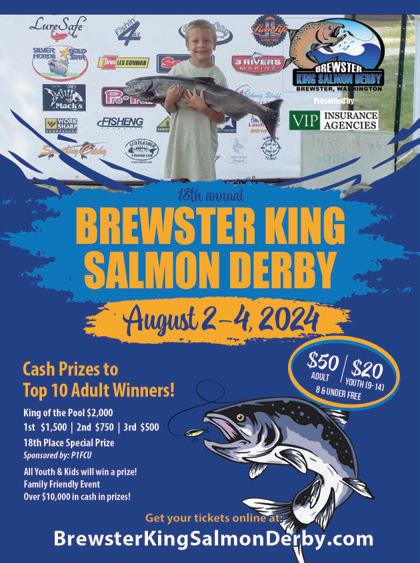

Salmon Spoons, Salmon Wobblers and 4/0, 5/0 Salmon Squid Rigs w/3.5 Willow blade great for trolling or on anchor


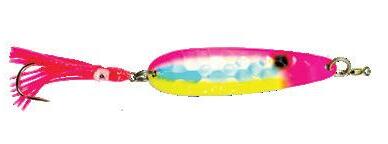




Our fisherman’s favorite 3 1/4” & 4” Salmon Spoons w/Hoochies are a must for Salmon Fishermen on the West Coast & Alaska

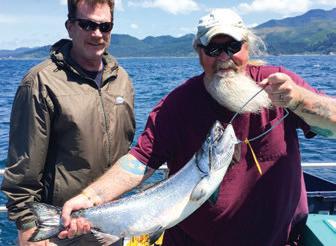

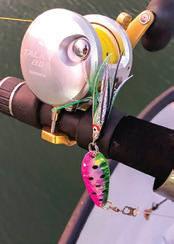

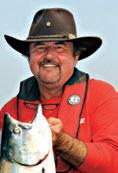
It’s always a treat when one of my friends (who happens to be a fishing guide) invites me to go fishing, especially when it’s for spring Chinook. Sure, I have a boat and often find success on my own, but going along with a fishing guide can be a fun learning experience, as they are far more tuned in to where the salmon are located and what they are biting on than most anglers. Not only are they on the water each and every day, but they’re often in communication with their professional peers about the movements of the fish.
IN EARLY MAY last year, Tony Amato of Salmon Trout Steelheader fame, Ben Walczak, the district biologist for the Oregon Department of Fish and Wildlife’s North Willamette region, and I got an invitation to chase spring Chinook on the Sandy River with fishing guide Jack Glass (503260-2315). Glass has been guiding clients to fishing success on the Sandy and other rivers for over 40 years.
Ours was an early-season trip, as most spring Chinook return to the Sandy during late May and June. As Glass and Walczak explained, the run is doing pretty well thanks to the removal of Marmot Dam in July 2007, the extensive habitat work done on the upper river and the development of an angler-caught broodstock hatchery program.
For example, the 2022 return of springers to the Sandy consisted of 6,000 wild Chinook and another 4,000 hatchery springers. As Walczak explained, wild fish numbers are now large enough that the


fish are beginning to show off their diversity: Their return timing is spreading out over a longer period, which might explain the two we caught and released while back-bouncing bait in the deeper holes of the lower river during our trip.
IT WAS ON May 4 of last year that fishing guide Chris Turvey (509-571-6198) extended an invitation to join him and friends to chase spring Chinook at Drano Lake. This fishery revolves around the return of salmon headed to the Little White Salmon National Fish Hatchery, located just above the lake on the Little White Salmon River. It and other hatcheries funded by the federal government through the Mitchell Act were built to mitigate the fish lost due to the construction of the dams on the Co-
lumbia River beginning in the late 1930s.
Make no mistake, this is a crowded fishery, as the sportfishing season for spring Chinook on the mainstem Columbia is mostly closed or restricted for much of the season in order to protect Endangered Species Act-listed fish bound for the Snake River system.
I consider Turvey to be one of the top guides at Drano Lake, which was evident by the five of us boating nine Chinook on our trip; we just couldn’t find number 10. And while every boat we saw was trolling small 3.5 spinners tipped with a shrimp on a 32- to 34-inch leader in combination with a ProTroll flasher, Turvey seemed to have the magic, as we had two doubles and – believe it or not – a triple until one of the three got away.
The preseason forecast for spring Chi-
nook returning to Drano this year is 5,300 fish, which is down compared to 2023. As such, the Washington Department of Fish and Wildlife has announced a reduction of the daily limit to no more than one finclipped adult hatchery Chinook per day this season. According to WDFW, managers will monitor the number of salmon returning to the facility and may make further adjustments as the season progresses.
If you’re a bank-bound angler, you can find success at Drano or the mouth of the Wind River not too far to the west by casting and retrieving diving plugs from shore. Realize too that while the Columbia is closed to boat fishing for spring Chinook from Bonneville Dam to the Tower Island power lines below The Dalles Dam, this section of the big river is open to bank fishing. This means hatchery salmon moving upstream through the Bonneville Pool are available to those working plugs and/or fishing bait from shore via hand-cast lines only.
THEN, IT WAS on May 11 that friend and fishing guide David Johnson (503-2014292) invited me to join him and a couple of his clients to fish on the Willamette at Oregon City. We met just after daylight at the Sportcraft Landing boat ramp by the I-205 bridge and proceeded upstream, where we found plenty of other boaters back-trolling and sitting on anchor in an attempt to catch a springer.
While Johnson and I back-bounced bait in combination with a size 8 Spin-NGlo, the guide had his clients back-trolling egg clusters rigged 60 to 70 inches behind jumbo Jet Divers. To keep his egg clusters from hanging bottom behind the divers, he rigged two large black Lil’ Corky Drifters 20 inches up the leader from the baits.
It wasn’t long before Stu Carr and Lance Maxfield had landed three fat salmon. As the bite began to fade there, Johnson moved downstream to try back-trolling the area across from where the Clackamas River enters the Willamette. While he held the boat steady in the current, he instructed Carr and Maxfield to let their jumbo Jet Divers out 100 feet behind the boat while I began to back-bounce an egg cluster rigged on a leader 48 inches behind a 4-ounce sinker. I hadn’t made more than three bounces when I felt the tug of

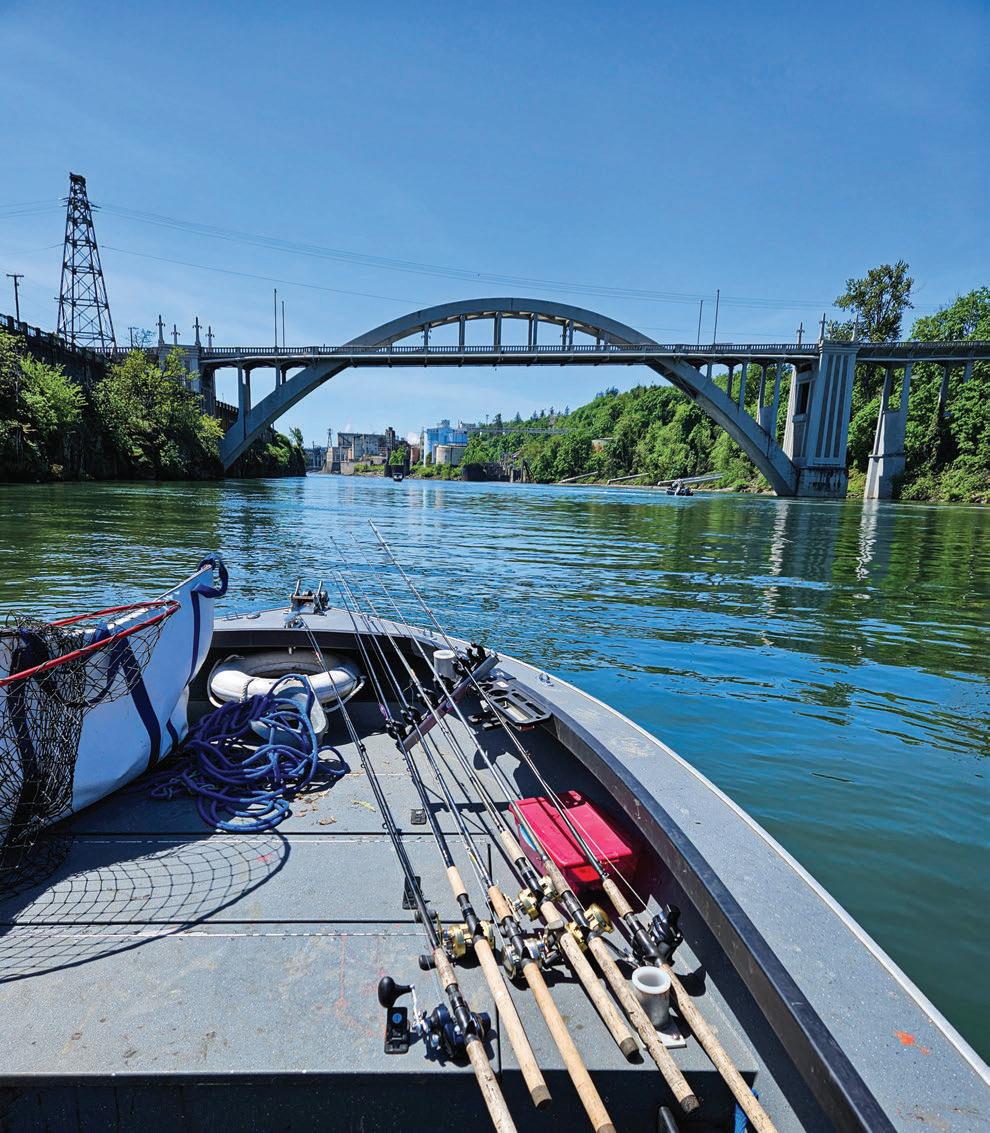
a salmon and set the hook, which pretty much surprised us all.
I should note that while sea lions were a huge problem for anglers trying to land a springer from the Willamette in the Oregon City area in past years, that threat has mostly been eliminated. As an example, we didn’t see a single sea lion the day we fished, though others reported spotting them in the
days before and after closer to the falls.
And while Johnson had his clients fishing Jet Divers in combination with bait while he and I back-bounced salmon egg clusters, many of the anglers and guides fishing the Oregon City area back-troll a combination of Mag Lip plugs and diverand-bait rigs. What works for many boaters is to back-troll 4.0 or 4.5 Mag Lip plugs
from their bow rods, with 40 to 60 feet of line let out, and jumbo Jet Divers rigged in combination with various baits from the back two rods and 90 to 100 feet of line out. The different let-out distances keeps lines from tangling and offers the fish two different presentations.
The baits that might work when rigged behind divers include: cured salmon eggs,

Along with back-bouncing baits and back-trolling egg clusters, Willamette River anglers jig for springers in the waters below the Arch Bridge in Oregon City. (ANDY WALGAMOTT)




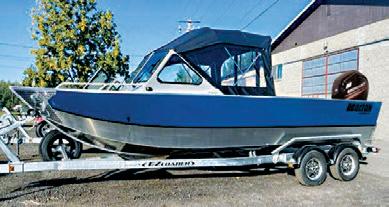








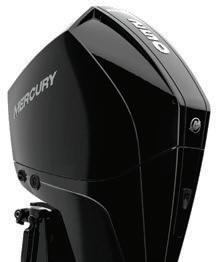




Stu Carr, Lance Maxfield and Buzz Ramsey show off the four spring Chinook they caught last May while fishing near Oregon City with friend and fishing guide David Johnson. (BUZZ RAMSEY)
sand shrimp, prawns, and occasionally a red-label herring plug cut to spin. To reduce the possibility of the baits trailing behind your divers from hanging bottom, try (as Johnson did) rigging a couple of the large Corky Drifters (again in black) halfway down your leader above a swivel.
KEEP IN MIND that the Oregon City area isn’t the only place you can catch spring Chinook from the Willamette, as the entire river and its slough (the Multnomah Channel) can produce salmon action. Some of the more popular trolling areas include from Oregon City to the Sellwood Bridge, the lower river from the St. Johns Bridge to the head of the channel (or HOC, as it’s also known) and the lower end of the channel, which is accessible from Scappoose Bay. NS
Editor’s note: Buzz Ramsey is regarded as a sportfishing authority, outdoor writer and proficient lure and fishing rod designer. As such, Ramsey has teamed up with fishing rod manufacturer Douglas Outdoors as a member of their ambassador pro staff.




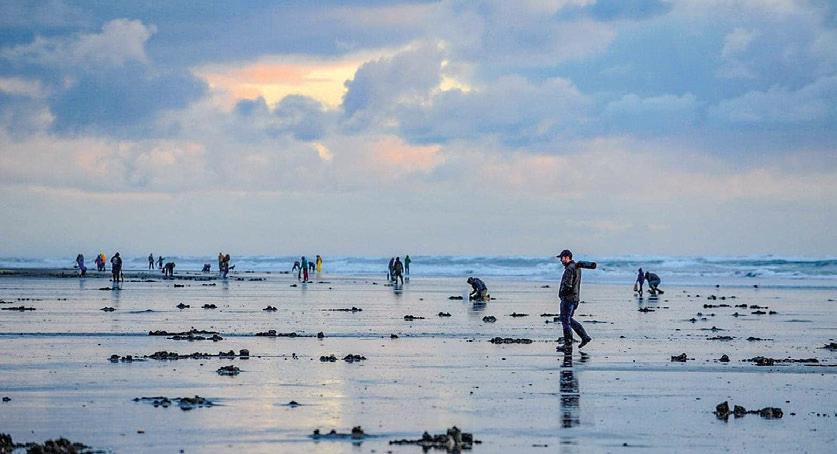

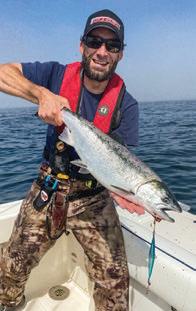
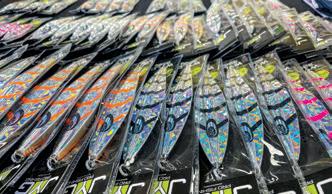

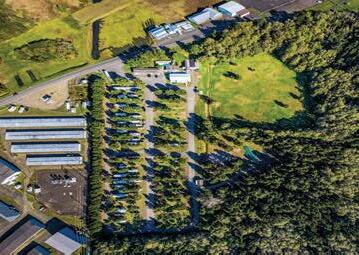
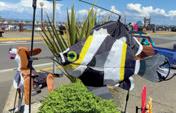
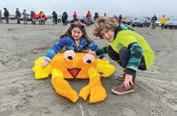
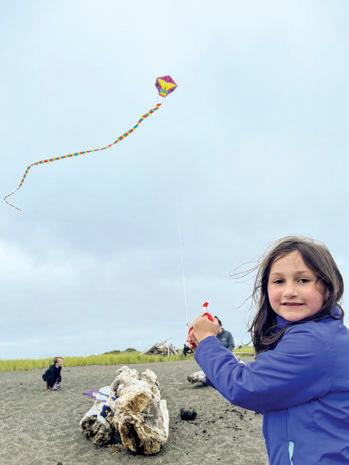

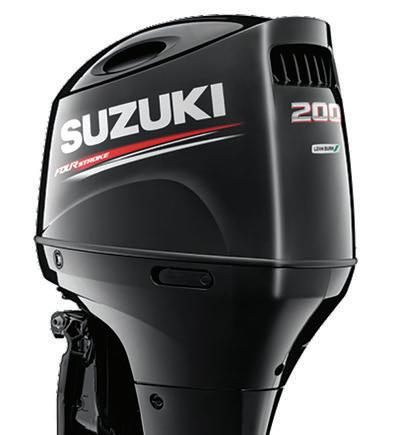

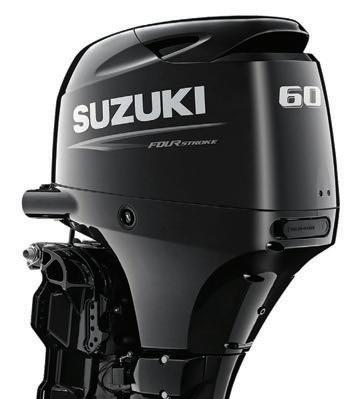



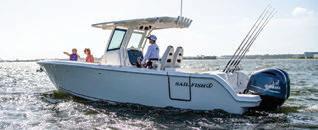





If your fad is fishing for Columbia River shad, then you’ll be glad to know we’ve got some exciting news happening in the months ahead.
The shad migration up the Columbia each spring and early summer over the past decade has turned into one of the most consistent and easily accessible sport fisheries that anglers can find on Northwest waterways.
While Washington and Oregon fishery managers don’t provide a yearly shad forecast, the outlook for 2024 calls for another robust return. Rewind to 2023 when the Columbia run was at least 4.5 million shad strong, with an escapement of 4.4 million migrating above Bonneville Dam. Those numbers don’t include shad that spawned downstream of the dam or below Willamette Falls on the Oregon side of the Columbia.
Since the late 1970s, the big river’s shad runs have easily met or exceeded 1 million fish annually. Through the 2000s, the 10-year average shad return size increased by around 1 million fish each successive decade, with a peak of more than 6 million fish in 2005.
Then from 2010 through 2019,
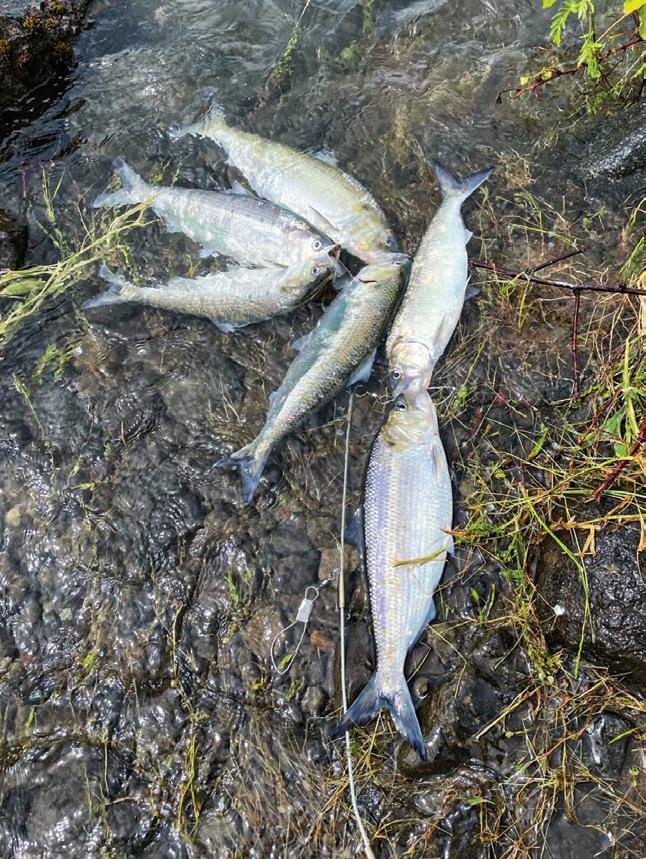
the shad run ranged from more than 1 million in 2011 to a record high return of 7.7 million in 2019. The shad return of 6.4 million in 2022 was the second largest on record.
In 2023, the Lower Columbia and Willamette recreational catch was a generous 193,300 shad, up from 184,500 in 2022. An additional 3,100 fish were harvested in a mainstem Columbia commercial fishery near Beacon Rock (up from 1,600 fish in 2022).
The combined 2023 recreational and commercial catch of 196,400 fell below the recent five-year average of 223,900 fish and represented 4.3 percent of the total return.
RECREATIONAL FISHING FOR Columbia River shad peaked in the early 1990s with more than 20,000 angler trips per year
recorded by the Washington and Oregon Departments of Fish and Wildlife.
Run timing extends from midMay through early August at Bonneville, with peak daily counts occurring in the June timeframe. Since the run overlaps with upriver Chinook, sockeye and steelhead, shad fishing opportunities are regulated to minimize impacts on Endangered Species Act-listed salmon stocks.
Shad runs are comprised of 3- to 5-year-old age classes and the fish are known to spawn multiple times. While many young shad migrate out into the ocean, others spend up to two years in the freshwater environment.
They’re known to reach up to 30 inches long and weigh up to 12 pounds, but most measure 16 to 20 inches long and average 2 to 3
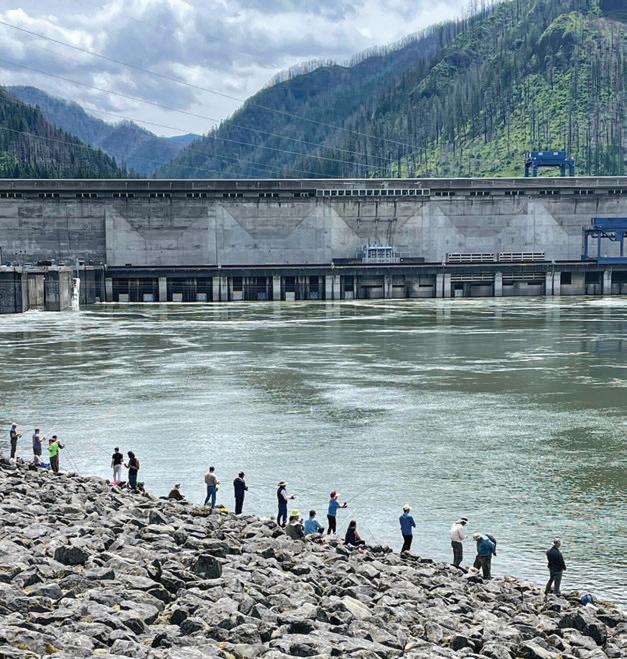
pounds. Female shad tend to be larger than their male counterparts.
While shad can grow large in Washington waterways, you might be surprised to know that the official state record weighed 3.85 pounds and was caught by Tom Magnuson on the Columbia in Clark County way back on June 21, 2005.
AS FOR WHERE to catch shad, the Columbia’s shoreline below Bonneville Dam and Beacon Rock in the western Columbia Gorge area are the two main hotspots, although you can find fish congregating farther downstream in the Camas Slough and from Washougal downstream to Kalama, as well as in the Willamette immediately above and below the I-205 bridge.
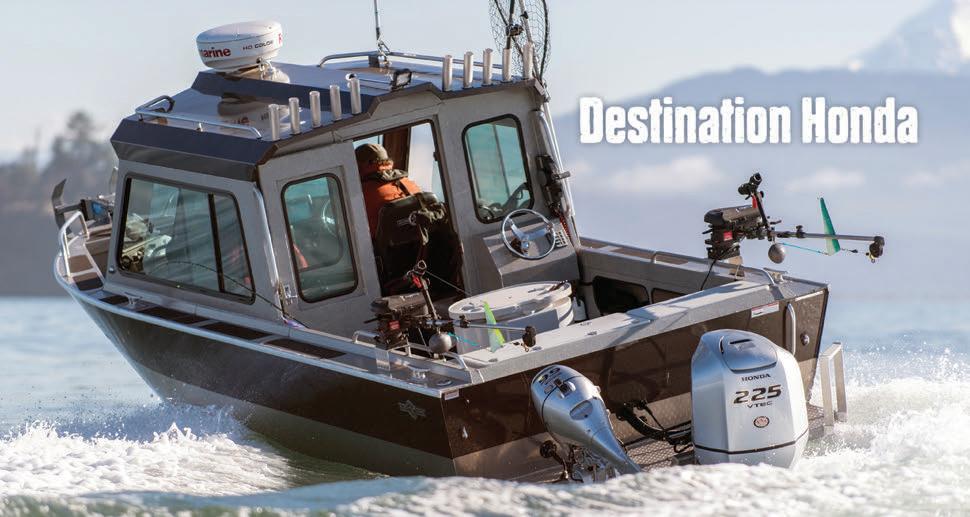
The 3
The most popular shad fishing area is located along the riprap right below Bonneville. Heading east on Highway 14 from Camas, take a right-hand turn near the transmission towers about 2 miles past the town of North Bonneville. This access road allows anglers to easily fish along roughly 3 miles of prime shoreline on the northern banks below the second powerhouse dam, the transmission towers and above and below the Hamilton Island boat launch.
Further upstream, the area below John Day Dam has bank fishing access at Maryhill State Park, from near the Sam Hill Memorial Bridge (Highway 97) upstream to the dam itself.
SHAD PREFER TO hug the bottom of fast-running current and it’s not unusual to catch the bulk of them as close as 25 to 30 feet from the shoreline in water as shallow as 6 to 20 feet, depending on the flow. Casting your presentation any farther will likely result in fewer hookups with fish.
Shad darts are the most popular lure choice, but red-and-white-colored flies with a small hook, colored beads in red or metallic silver or gold, and small crappie-like jigs, along with small wobbler spoons will also land their decent share of shad.





OREGON
CULVER
Culver Marine (541) 546-3354 www.culvermarine.com
FLORENCE
Y Marina (541) 590-3313 www.ymarinaboats.com
PORTLAND Sportcraft Marina, Inc. (503) 656-6484
www.sportcraftmarina.com
CHINOOK
Chinook Marine Repair, Inc. (800) 457-9459 (360) 777-8361 www.chinookmarinerepair.com
MOUNT VERNON
Tom-n-Jerry’s Boat Center, Inc. (360) 466-9955 www.tomnjerrys.net
TACOMA
Tacoma Boat Sales & Service (253) 301-4013
www.tacomaboatsales.com
American shad are an introduced species brought to the West Coast from Pennsylvania in the late 19th century and 10,000 were planted in the Sacramento River in 1871.
Five years later, anglers reported harvesting shad in the Columbia River and in 1880 confirmed a shad invasion. A specimen was sent to the Smithsonian Institution, where it is preserved to this day.
Shad are an anadromous fish, spending three to four years at sea before returning to spawn. Since the extensive development of hydroelectric projects on the mainstem Columbia, the Washington Department of Fish and Wildlife reports shad returns have increased markedly in abundance and have extended their range into the Upper Columbia and Hells Canyon of the Snake River, where they’re also known to grow much larger in size.
In 2021, hundreds of shad began to show up in another unexpected location – right in the backyard of Seattle, in Lake Washington. Their numbers nearly doubled by 2023, per the annual springtime predatory fish abundance surveys conducted by the WDFW and Muckleshoot Tribe. Prior to that, their numbers were minimal in the huge lake.
Other places where shad have been spotted include Grays Harbor, other locations of Puget Sound and Hood Canal and as far north as British Columbia and southern Alaska.
The effects of their distribution into new waterways are unknown, but state and tribal fishery managers are closely monitoring this to see if there could be any ramifications to native fish populations. –MY
Shad fishing has been extending further and further up the Columbia in recent years. (KNIFE PHOTO CONTEST)
Most anglers use a lightweight, 8- to 9-foot salmon-style rod with a spinning or levelwind reel loaded with 8- to 10-pound-test mainline to an 8-pound-test leader. Be sure to bring along a long-handled net, and be careful while standing along the rocky, swiftly moving river. There is no daily catch limit for shad, but don’t be overly greedy and keep only what you can make good use of.
While very abundant, shad are fished mainly for the pleasure of the
sport or used as crab or sturgeon bait and not necessarily to eat. Let it be known that shad are bony; they can be fileted, and if you choose to eat them, most prefer to pickle, smoke or cook them in a pressure cooker. Shad roe, however, is considered a delicacy. NS
Editor’s note: Mark Yuasa is a Washington Department of Fish and Wildlife communications manager and longtime local fishing and outdoor writer.








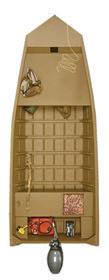


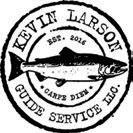




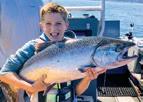
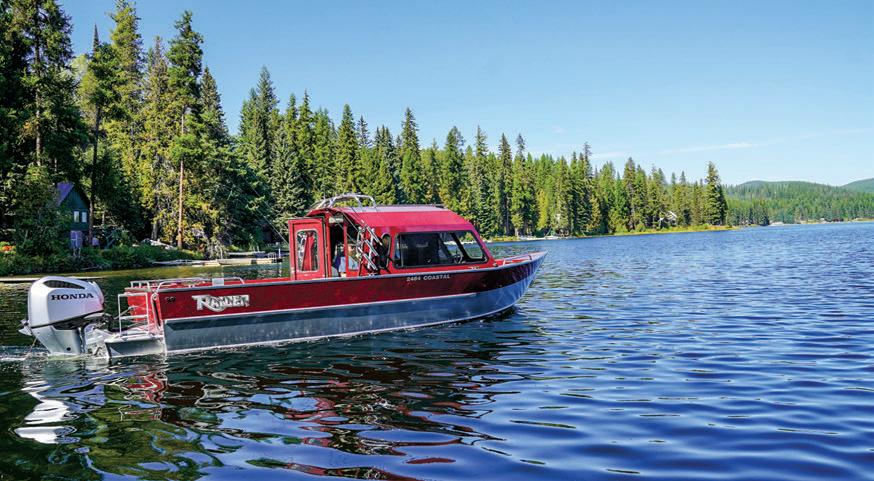



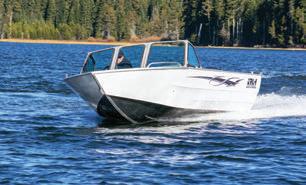

A look at the program that’s paid anglers for helping to protect Columbia and Snake salmon, steelhead since the early 1990s.By MD Johnson
It’s not often the Regular Joe gets paid to fish. Nah, I’m not talking about go-fast bass boats, multi-million dollar sponsorships, cheering crowds and tournament wins measured in pounds and ounces. Too much stress involved in those sorts of things.
I’m talking, instead, about throwing out a baited hook, relaxing in a $1 garage sale lawn chair and waiting for that legal tender to come swimming by. Or, if I’m looking to get all fancy about it, I’m at the tiller of an ’85 Evinrude 9.9 pushing a 14-foot Sears Deep-V, eyeballing my old-school Lowrance fishfinder and searching for that next big payoff. And what the heck am I talking about?
I speak, my fellow anglers, of Washington and Oregon’s now familiar (or at least it should be familiar) Northern Pikeminnow Sport-Reward Fishery. In a nutshell, this bounty-esque program, which dates back to 1991, rewards anglers financially for catching and turning in northern pikeminnow legally taken from the waters of the Columbia and Snake Rivers.
But let’s back up a minute and do an NPSRF overview, shall we? It’s the brainchild and funding endeavor of the Bonneville Power Administration, for two primary reasons. One, north-
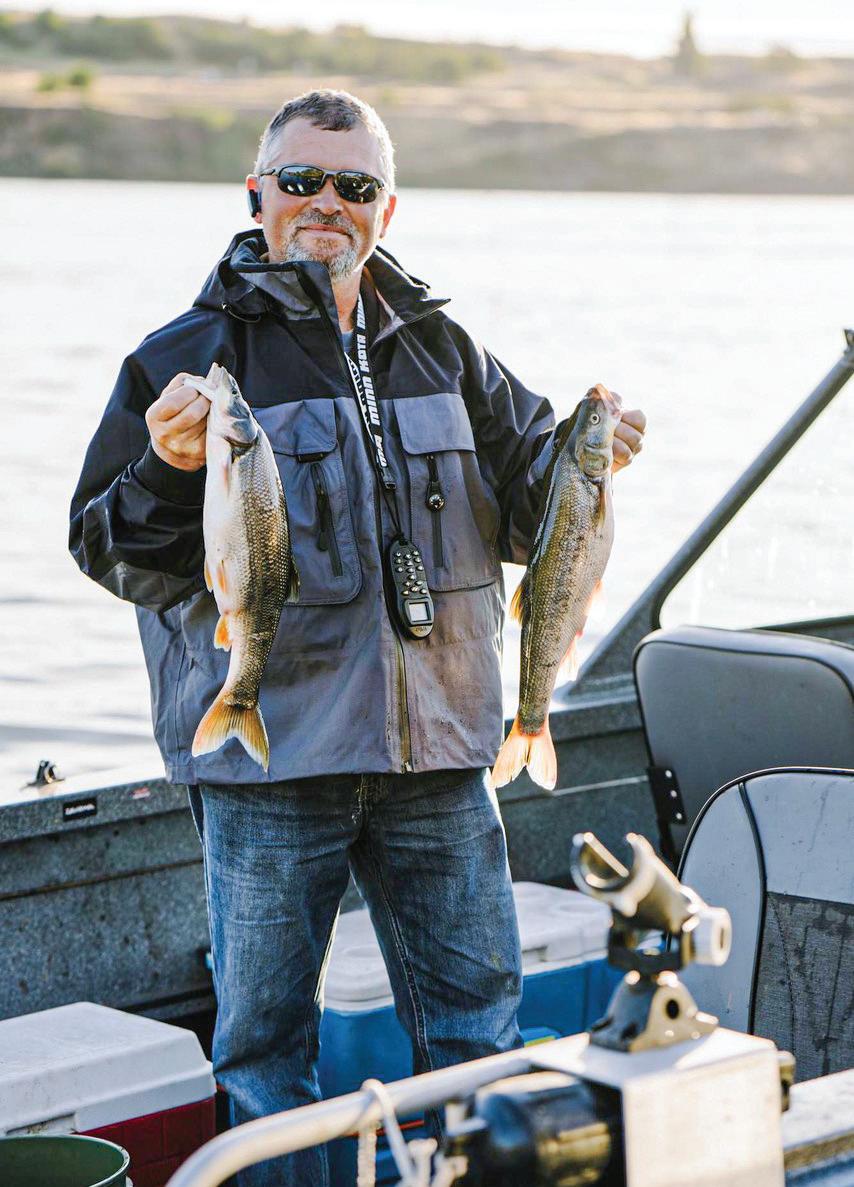
A successful Northern Pikeminnow Sport-Reward
money
Anglers
paid $6 to $10 per pikeminnow, depending on how many they’ve already registered with the program. Season kicks off May 1 on much of Washington and Oregon’s Columbia and Snake Rivers and 400 feet up their tributaries. (WDFW)
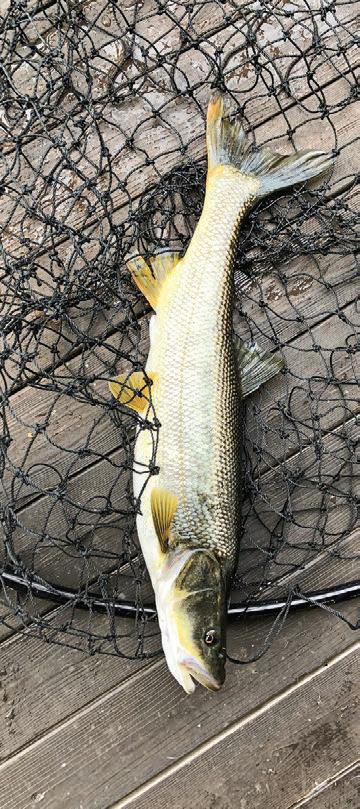
While these fish are a native species, they’ve become more effective predators of juvenile salmon and steelhead due to the damming of the rivers, requiring their culling. Last year’s top angler caught 10,755 pikeminnows, earning them $107,800. (WDFW)
ern pikeminnow, a species native to the waters of the Pacific Northwest, eat a ton – actually, and if the truth were known, it’s more likely and quite literally several tons – of baby salmon and steelhead annually. So it’s then thought that every big pikeminnow not in the river systems is one that’s not eating smolts that potentially could grow to adults. Simple enough. And two, the reward money is BPA’s way of partially mitigating the interruption their facilities, e.g., Bonneville Dam, have played in the lifecycle of many native fish species, includ-
ing Chinook and coho. It’s their way of saying “this for that,” I reckon. But BPA isn’t the only agency involved in the program. True, BPA controls the purse strings; however, the program as a whole is overseen by the Pacific States Marine Fisheries Commission in cooperation with BPA, the Washington and Oregon Departments of Fish and Wildlife and a handful of Northwest tribes.
THE SPORT-REWARD FISHERY is pretty darn simple, and is explained quite well on the comprehensive website dedicated to the program – pikeminnow .org. As for the rules and regulations, the Reader’s Digest Condensed Books version reads thusly:
• This year’s season runs from May 1 through September 30;
• Legal boundaries for the program are from Cathlamet on the Lower Columbia upstream to the river’s confluence with the Snake; from there, the program continues on the Columbia to Priest Rapids Dam, and to Hells Canyon Dam on the Snake, as well as sloughs thereof and 400 feet up all tributaries;
• Anglers are required to register daily in-person at a check station (list on website) or with a new app available online. Legal fish must be checked at the same station where registration occurred and on the same calendar day (see details online). A valid fishing license (if required) and photo identification must be presented to register;
• Pikeminnow must be 9 inches or longer to qualify. Fish must be alive or in fresh condition; previously frozen fish will not be accepted;
• The first 25 fish checked are worth $6 each. Numbers 26 to 200 are worth $8 and fish over 201 are worth $10 each. Tagged fish net the angler $500, while “verified tag loss fish” (see explanation below) are $200 each.
There’s more, but all in all, it’s easy to understand and comply. Get a fishing license, register daily, catch fish using legal methods, fish within the imposed boundaries, get your 9-plus-inchers checked and collect your voucher. Vouchers are then mailed to the “re-
ward payment address,” where a check magically appears.
TO GET THE complete 4-1-1 on everything pikeminnow, Northwest Sportsman tracked down Eric Winther, Pikeminnow Program project leader for WDFW, and asked him a few questions about the state of the fishery, what it’s accomplished and where it might be headed.
Northwest Sportsman Have you been in charge of the program, Eric, since its inception in 1991?
Eric Winther Not in this role. I actually started out as a field technician on the same (pikeminnow) project back in ’91. I moved to a supervising biologist position, and then became the project leader in 2001.
NWS So the program began in ’91. Has it changed much since then?
EW It depends on how you look at it. In a lot of ways, it’s changed tremendously in some ways, and yet the base program – the concept of paying recreational anglers to catch pikeminnow that are predator-size – that part hasn’t changed. We’ve had a number of modifications over the years, which generally were targeted toward spurring or retaining angler effort. We’re totally dependent on participation in order to achieve program goals. When the program first came out, there was the novelty aspect there. Everybody loved the idea of being paid to fish, but after a few years, it became old news a bit. Then we had to do additional things to keep the level of participation up where you need it.
NWS I’m in Cathlamet and the fishing doesn’t get good until late June or early July, but at Columbia Park upriver, it’s the first week of May. Why so long after the opener on May 1 in Cathlamet? What’s the secret there?
EW The reason, probably, is water temperature. (The water) gets warmer a bit earlier (upriver), and with the combination of warm air and water, the fish are more active. And smolts


The lightest 200-hp four stroke on the market
2.8L displacement and Variable Camshaft
Timing give it the best power-to-weight ratio of any 200-hp four stroke
Nearly 120 pounds lighter than our four-stroke V6 F200
Nearly 120 pounds lighter than our four-stroke V6 F200
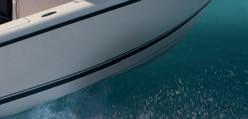
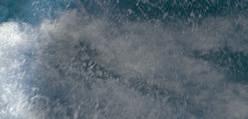

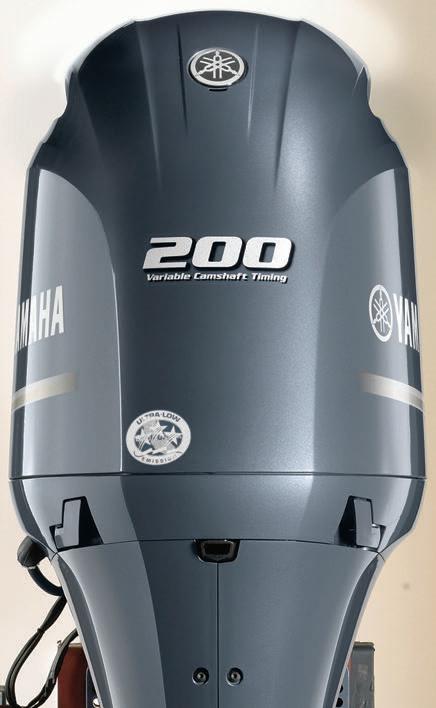

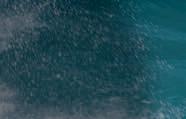

Show the water who’s boss with the F200 In-Line Four. Incredibly light, responsive and fuel efficient, it serves up plenty of muscle to handily propel a variety of boats. On top of that, its 50-amp alternator offers the power to add a range of electronics, and its 26-inch mounting centers and compatibility with either mechanical or digital controls give you the flexibility to easily upgrade your outboard or rigging. Experience legendary Yamaha reliability and the freedom of forward thinking, with the F200 In-Line Four. THE F200 IN-LINE FOUR.

Show the water who’s boss with the F200 In-Line Four. Incredibly light, responsive and fuel efficient, it serves up plenty of muscle to handily propel a variety of boats. On top of that, its 50-amp alternator offers the power to add a range of electronics, and its 26-inch mounting centers and compatibility with either mechanical or digital controls give you the flexibility to easily upgrade your outboard or rigging. Experience legendary Yamaha reliability and the freedom of forward thinking, with the F200 In-Line Four.
COOS BAY
Y Marina (541) 888-5501 www.ymarinaboats.com
MADRAS
Madras Marine (541) 475-2476 www.madrasmarine.com
CHINOOK
Chinook Marine Repair, Inc. (800) 457-9459 www.chinookmarinerepair.com
EDMONDS
Jacobsen’s Marine (206) 789-7474 www.jacobsensmarine.com

EVERETT
Everett Bayside Marine (425) 252-3088 www.baysidemarine.com
MOUNT VERNON
Master Marine Boat Center, Inc. (360) 336-2176 www.mastermarine.com
MOUNT VERNON
Tom-n-Jerry’s Boat Center, Inc. (360) 466-9955 www.tomnjerrys.net
OLYMPIA US Marine Sales & Service (800) 455-0818 www.usmarinesales.com
SHELTON Verle’s Sports Center (877) 426-0933 www.verles.com
The Dalles Dam tailrace is typically good right out of the gate when pikeminnow season opens and would be where reward program manager Eric Winther would fish. Maps at pikeminnow.org help anglers dial in where to go, but note that Columbia and Snake flows are highest in spring due to mountain snowpack runoff, so take care while boating here and elsewhere. (ARMY CORPS OF ENGINEERS, FLICKR, CC BY 2 0 DEED; PIKEMINNOW.ORG)

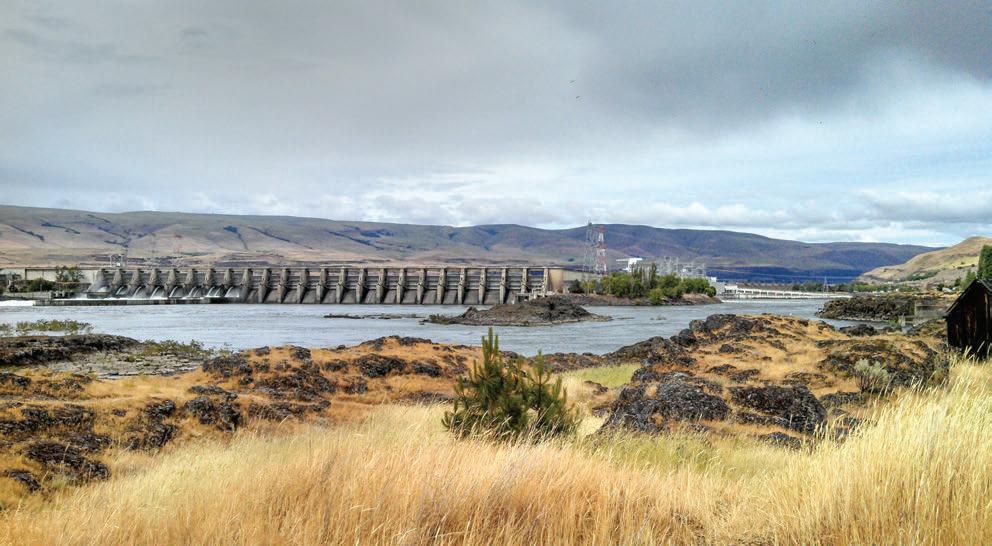
start moving downstream roughly in mid-March. We often see this also at The Dalles. The Dalles (check) station is one of those where fishing is traditionally red-hot right off the bat.
From a fishing point of view, if I were to go anywhere on May 1, I’d be at The Dalles. Historically, there are fish there and the conditions are such that (an angler) could have good success right off the bat.
NWS In recent years, Eric, have you seen more angler participation? Less?
EW There are ebbs and flows. We had the initial high (in ’91) when the program started, and then it started to peter out. Then we went to a tiered reward system and (participation) spiked back up. That kept us going for a number of years, but then that began petering out, as well. Then we started raising rewards. It’s a series of peaks and valleys.
Author’s note: Winther went on to explain that in its earliest days, the program “had no tier system, but it was a straight $3 per
fish.” Then, he continued, the pay scale, per se, changed to where the first 100 pikeminnow of sufficient size got one reward, with an increase coming only after fish No. 101. And it wasn’t until fish No. 401 that an angler moved into the next reward category. “We’ve modified those tiers,” he said, “based on the participation we’ve seen over the years. We’re trying to hit that ‘sweet spot.’ It’s like a lot of fisheries where 10 percent of the anglers catch 80 percent of the fish, so we’re looking for ways to keep those ‘good’ anglers engaged, and at the same time provide a level of appeal that reaches out to folks new to the program. I mean, I wish they’d had this program when I was a kid. I would have loved doing this a lot better than bucking hay or mowing grass.”
NWS Define the phrase “verified tag loss fish” as it’s stated on the pikeminnow.org website.
EW So the Oregon Department of Fish and Wildlife is one of the cooperating agencies (in the program). Their responsibility is the biological evaluation of the program. The idea there is we’re taking out all these pikeminnow, and
we want to make sure we’re not getting near eradicating a native fish, and likewise making sure other fish aren’t filling the niche (left by the harvested pikeminnow). One of the ways we do that is by tagging pikeminnow.
Originally in the early ’90s, we’d put external tags in them, and like all external tags, a certain number of those get lost over time. In about 2000, we started putting in a “secondary” tag, which is an internal tag under the skin called a PIT (passive integrated transponder) tag. So a “tag loss fish” is a fish that had an external tag but still retains the PIT tag. It (PIT tag) doesn’t give us as much information, so that’s why there’s payout difference. We give $200 for the internal (PIT) tag, and $500 for the external tag.
NWS The program numbers, per se, on pikeminnow.org, Eric, read 5.4 million fish harvested and an up to 40 percent reduction in juvenile salmon and steelhead predation. Mighty impressive to me, but are you pleased with the results to date?

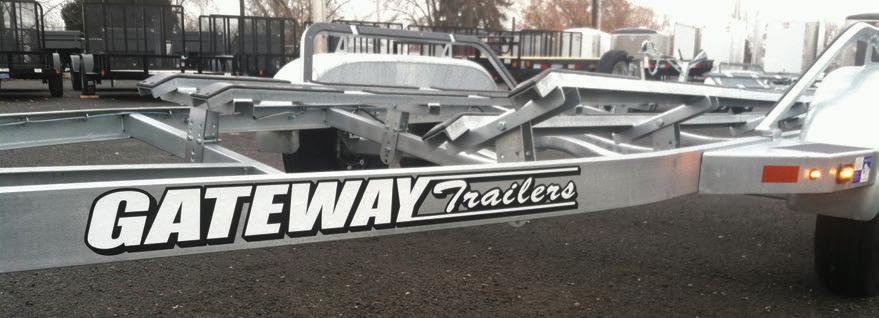





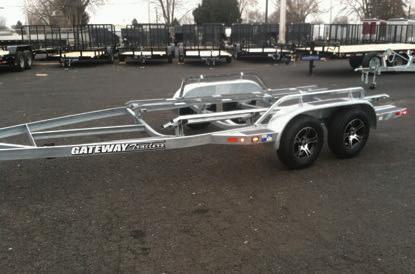
EW Yeah. If you go back to 1991, we’re averaging roughly 160,000 fish removed per year. And those are what I call “predator-sized fish,” which means they’re of a size where they’re capable of actively feeding on smolts. It’s not like those are all 5-inch fish.
Overall, that’s a pretty good number, but the actual number of (fish harvested) by itself is less important than the 10 to 20 percent exploitation rate. That’s really what we’re seeking. Going back 33 years, there have only been a couple years when we didn’t reach that 10 to 20 percent target. That’s the number we keep an eye on.
The other number we keep pay attention to is, in 2023, we exceeded 1 million registrations, or people registered to participate in the program.
To me, that’s pretty impressive for any project, especially one that uses the general public in a program that helps salmon and steelhead.

NWS You’re the face of the pikeminnow program here in Washington, which means you talk to a lot of people. What does the general public have to say about the program?
EW Overall, they’re happy about it. Like any member of the public, I’m sure they would like (to see) higher rewards every year. And there are little things they suggest that would help their own situation. Sometimes it’s something as simple as check station times.
But overall, (the public) has been pretty happy. You hear so much about other fish and wildlife issues that, perhaps, the public isn’t as onboard with, but we feel blessed because of the support we have from the anglers.
Obviously, we’re paying people to fish, so that helps. It’s been very popular.
NWS Best advice, Eric, for a Pike-
minnow Millionaire Hopeful such as yours truly?
EW [Laughs] You have to have some patience. Pikeminnow fishing can be tricky to learn. It takes a time commitment. I know folks who are good and proficient at salmon and steelhead fishing, and they try pikeminnow fishing, which back in the day were often referred to as a trash fish, and they find it a little humbling at times. Humbling that they can do so well with salmon and steelhead and then have a difficult time catching pikeminnow, especially when you’re checking your fish, you’ve busted your tail all day and caught half a dozen, and one of the “regulars” or long-time (pikeminnow) anglers comes in with 25 or 30.
I’m a lifelong angler myself, and I believe if you take the time, there’s no reason you can’t figure it out. It’s just a bit of a puzzle you have to figure out. NS







$29,995 1 ONLY!

2023 Lund 1650 Rebel XL
All Cobalt Blue Boat, Complete Vinyl Floor, Mercury 90elpt, Aluminum Prop, Bunk Trailer Lundguard Black, Tilt Steering Upgrade With Seat Slider, Boarding Ladder With Platform - Starboard, Sport Top w/walkway Curtain, 24v Upgrade
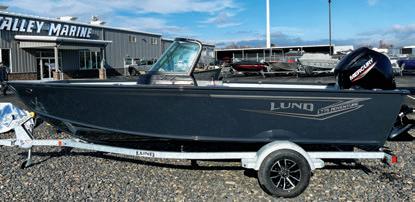

Newly Redesigned
2024 Lund 1775 Adventure Sport
Complete wood-free construction, Mercury 90HP Motor, New consoles, backlit switches, Tilt Steering, Pro Ride Seats, Redesigned port side tackle storage, 2-tier center rod locker, livewell, Multifunction Gauges, Bunk Trailer Galvanized, Wheel Upgrade, Top Hider, Sport Top.

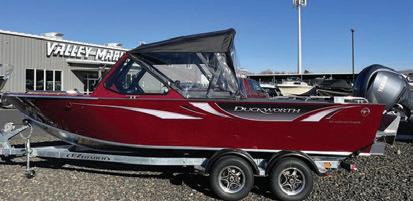
2024 Duckworth 20 Advantage
Exclusive full width, transom bench seat opens new entertaining options. Comfortably seat 4 or stretch out for sunbathing. Ample storage beneath. Call, text or email for current pricing and availability.
2024 North River 228 Pursuit
New model for 2024. Mercury 300 XL Pro XS Motor, Hydraulic Steering System, Boarding Ladder, welded 2 step with welded grab handle vertical (starboard), Deluxe Top Gun canvas folding top with side and back drop curtains, storage boot and bag, wash down with spigot, hose, thru-hull pick up and valve, Plus lots more. Call, text or email for current pricing and availability.
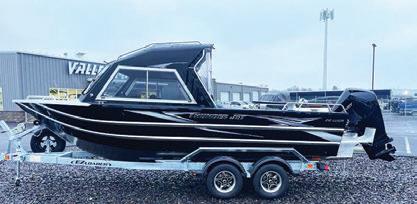
2024 Thunder Jet 210 Luxor
Equipped with all the right standard features and available with a half, 3/4, or full hard top, plus a welded 5-piece walk-through windshield, and our industry-exclusivetri-structure reverse chine hull with delta keel bottom to bring you through the toughest waters and most challenging climates. Call, text or email for current pricing and availability.

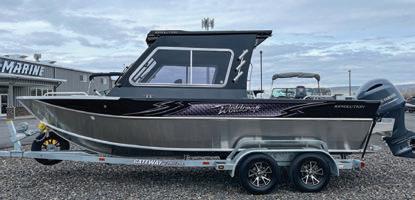
2023 Weldcraft 210 Revolution
Yamaha 200hp 4-stroke, Partial Hard Top with Gullwing Door, Washdown, Dual Wipers, Boarding Ladder, Suspension Seats, Rear Bench to Bed Seats, and More. CONTACT US FOR SPECIAL CLOSEOUT PRICE!

It was one of those happenstance encounters with an old friend whom I had bumped into one day a few years ago. We both shared a passion for fly fishing and after our “How are you?!” and “What’s new!?” reintroductions, we began talking fishing. As it was a hot day, we were joking about how we both wished we were casting a fly line when he briefly mentioned he had fished the previous weekend and did well on a size 14 Skwala.
It was late spring and though temperatures were warm and hatches were going on, I was intrigued about his day on the water. Turned out, he had fished a small stream that flowed out of a high mountain lake; normally, the water would have been running fast, but on this day it was fishable. The quick chat got me excited about that Skwala hatch he mentioned.
The small stonefly known as the Skwala emerges early in cold water, making it one of the first dry fly patterns of the season to try. Often still before the snow melts, Skwalas take flight. And even before they make their way to the water’s surface and spread their wings for the first time, they are plentiful in their nymph form. Trout love them above and below the surface.
The fact that my friend said he’d been
using a size 14, which is exceedingly small, told me he was targeting small trout. And with the stream being fishable, that meant it was on the smaller side. It is the trivial things that anglers often mention in casual conversation that tip their hand at locations and fisheries, and this was no different. I had an idea where he had fished the previous weekend, so the following week found me walking streamside with my 4-weight rod and a hatband brimmed with Skwala flies.
WHEN IT COMES to fishing small streams, most fly anglers make a simple mistake that costs them a lot of fish. They do not tailor their patterns to the fish, and I do not mean hatches or which bugs work best. Rather, the size of the fly. The reason my old buddy had used the size 14 Skwala was because of the hook size, not the size of the body. Small stream trout rarely get large – though it is a pleasant surprise to find big fish in these waters – so you must allow the fish to be able to be hooked. Much like how saltwater salmon anglers will use large hooks to keep shaker Chinook off the line, if you use a large hook, then a 6- to 8-inch trout simply cannot bite the hook. A larger 12- to 18inch trout can still be easily landed on small hooks, so it really benefits you to downsize flies when fishing small streams.
Besides keeping the flies small, the next thing is to use the right rod and lines. Small streams often mean short casts due to the






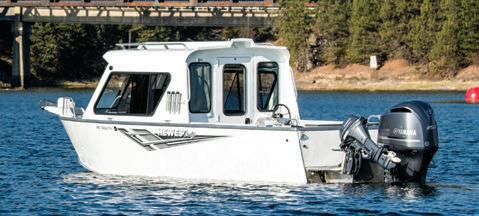



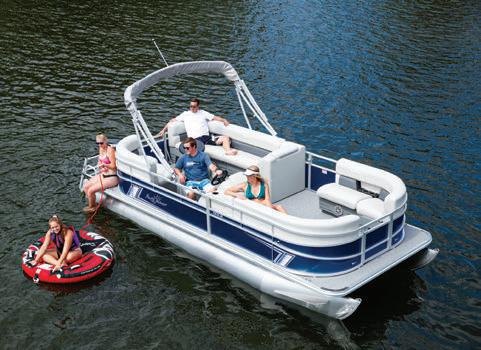















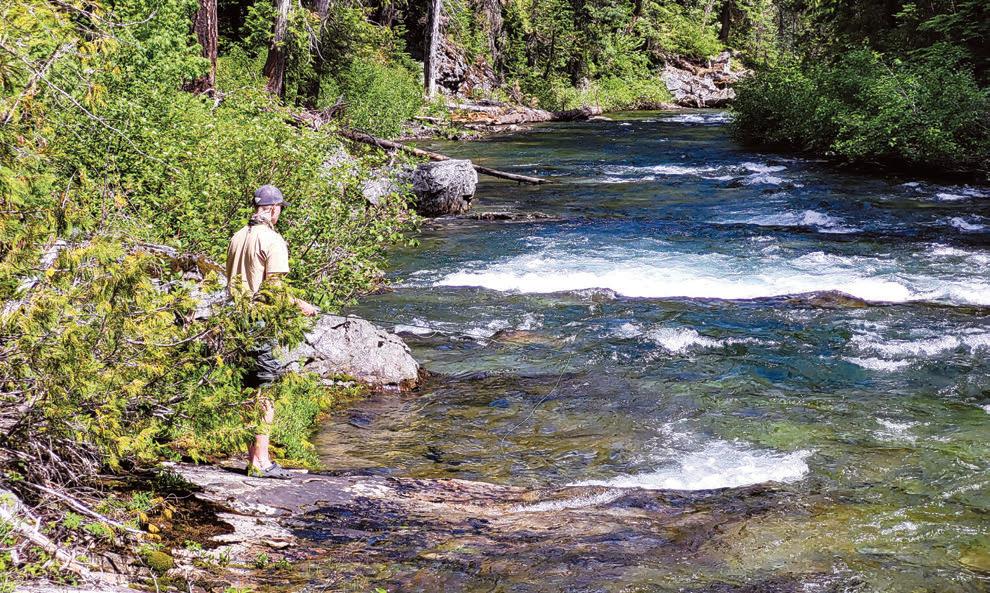
The tight confines of creeks means knowing how to roll cast will come in handy. Work deeper waters, whether slots or those created by boulders or downed timber, as well as riffles and overhanging brush with both wet and dry patterns. (JASON
BROOKS)thick brush lining their edges. When I was young, my father would take me up to Bridge Creek, a tributary of the Stehekin River in North Cascades National Park. This small creek ran clear and was full of cutthroat, rainbows and cuttbows. Most fish were small, around 8 inches, but the river did hold a few “monsters,” trout reaching the upper teens and even 20 inches. There was also the possibility of catching a bull trout, which grow much larger. The creek is accessed by hiking to it and then going down into a steep canyon – there’s not much room to cast or even land a fish.
One Christmas, my father bought me a 7½-foot 3-weight rod and matching reel. At first glance, the rod looked too small to fling a fly, but it was perfect for Bridge Creek, which was why he’d given it to me.
Since receiving that 3-weight I have picked up a few others, with a 9-foot, 4-weight being my favorite all-around rod. It is a bit long for small streams lined with brush, but I can cast a long way with it on backcountry lakes and larger rivers. When it comes to streams, I can often get by with
the rod and have found that the 4-weight is more forgiving than the tiny 3-weight. When I hike along a small stream, I often have both rods with me for versatility.
Casting will lead to more success, but sometimes catching these fish is as simple as dangling a fly in the water. This is where that 4-weight comes into play on small streams. After you learn to cast a fly rod, the next best thing you can do is master the roll cast. This universal cast is the one used most often on small waters. It is quick to flick the fly onto the water and works well in short distances with tight cover and no way to back cast. The roll cast is simple and in its purest form is a beautiful thing to watch; when you do it wrong, it often leads to a mess piled up at your feet. Learn to use the roll cast and you will catch more fish and have a better time fishing for them.
Look for trout in any deep water as well as cover, which can come in different forms. Sunken logs often create a deep pocket right behind them, and this is where fish will hide. Same with rocks and boulders. When it comes to bends in a stream, the outside
often has faster water, with the soft water on the inside of the corner. Look for the seam between these currents; this is where fish will grab your fly. Riffles are cover for small trout that are hiding from predators from above such as eagles, hawks and other birds of prey. Fishing the riffle will get you into more fish. Same with overhanging branches. Sometimes a well-placed fly just outside of an overhanging brush will get you the biggest fish of the day.
EVERYONE LOVES DRY fly fishing because it is fun to watch trout rise and chase after the fly, but for every trout you see come to the surface, several more are eating bugs under the surface. Two summers ago, I was fishing in a small creek that dumps into Lake Chelan. It runs down through a deep gorge from the mountains and has a kokanee run in the fall, but in summer it is the large cutthroat that anglers target.
I had tried several dry flies and had a few strikes, but another angler who was staying in the campground nearby was pulling fish after fish out of a pool. It was

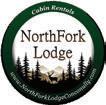






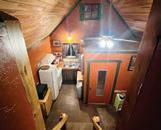




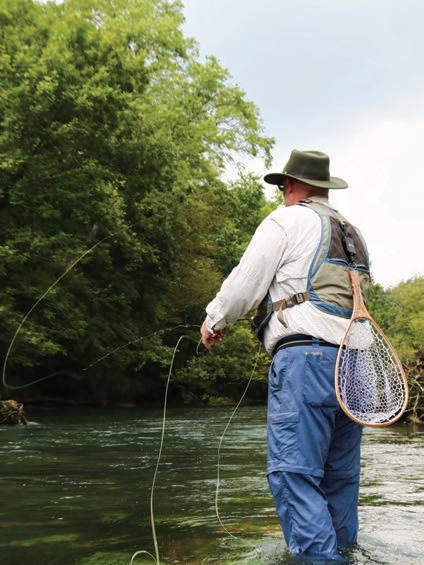









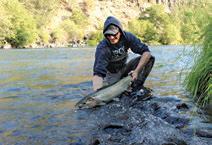

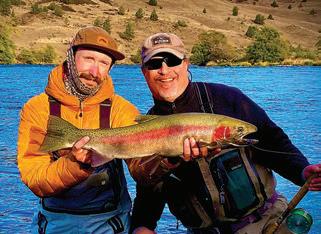
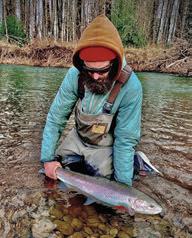


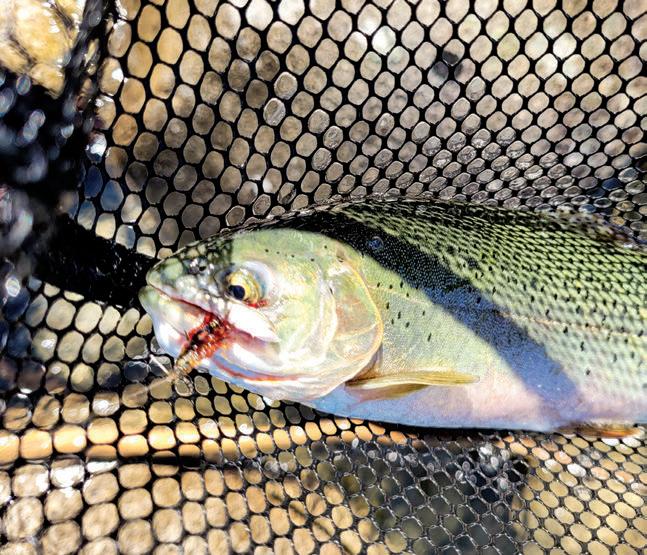
(JASON BROOKS)
Where some streams across the Northwest are open year-round, fishing season on others doesn’t begin till later this month, so be sure to check your state’s regulations before packing your fly box and other gear.
then that I noticed he was fishing a nymph pattern. Though the man was nice, he was not sharing what he was using, so I had to figure it out on my own. I pulled out a golden nymph and on the first cast landed a nice trout. I fished that fly until it fell apart and only the hook was left. When fishing small streams, do not forget to fish under the surface as well as on top of it.
You do not have to be an expert fly caster to fish small streams, as you are not trying to do a double haul and cover a lot of water. Instead, a short single-handed rod with a weight-forward line and a light tippet is all that is needed. Figure out the roll cast and look at the bugs around you, as they are what the trout are feeding on. And when you run into an old friend who also fishes, be sure to listen. May is here and the Skwalas have been hatching for weeks now. With this year’s well-below-average to average snowpack in the mountains of Washington, North Idaho, and Northeast and Northcentral Oregon, waters are already a bit low. It is time to hike along a small stream and catch some trout. NS

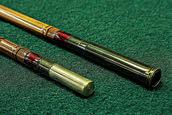



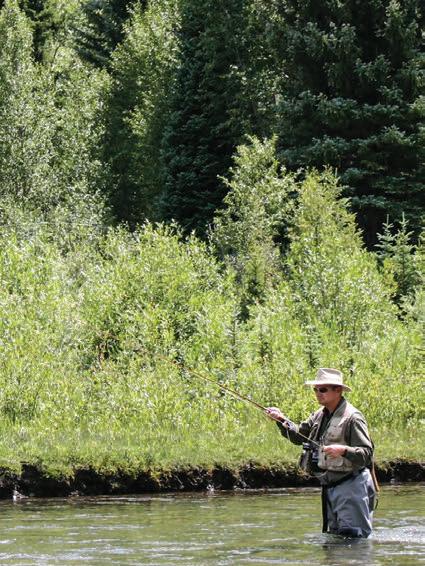
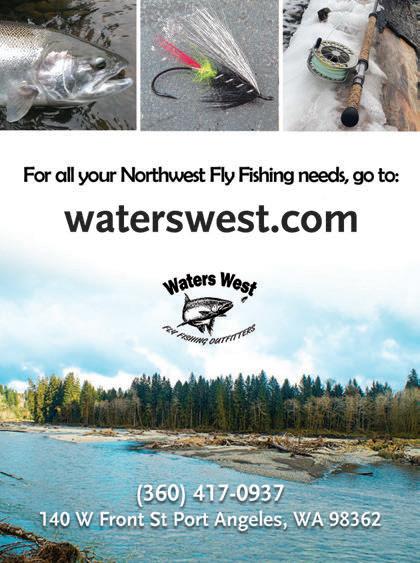



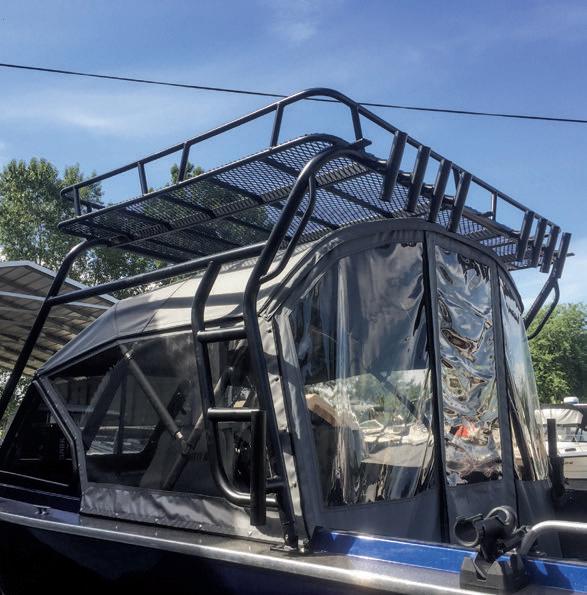
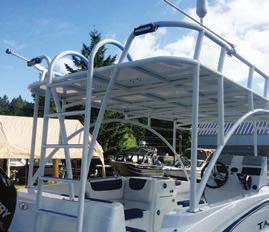



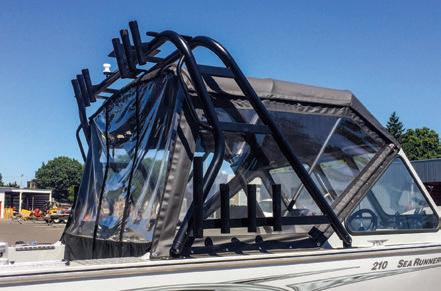






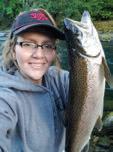
As I pick up the Oregon driver’s manual for my soonto-be 15-year-old son, I can’t help but gasp at the fact that this new chapter is upon us. Such individual magic is happening within the growth of my babes Nate and Ava right now. I’m like, wow! Where has the time gone? Unique, strong, smart, loving, funny, imperfect, yet absolutely perfect. I am proud to have these two to walk through life with.
As they are busy becoming their own persons right now, I can’t help but hope the adventures we’ve made have impacted them in a way that will last forever. I’m so thankful motherhood is part of who I am. Thankful I found a love for nature long ago and never lost it. Thankful timing was on our side and I was able to allow my babes to not only know nature, but to have true comfort in it. Living on an old ranch, much like my childhood, motherhood allowed me to reconnect with some of my favorite parts of being a kid, almost igniting old fires within me. Nature has always been a frontrunner in most every chapter of my life, so it just fit when it came to my ways of mothering. Each step, each chapter, it was bigger than us; it really was fate.
Somehow here we are, one decade into pursuing the rivers together and I think to myself, thank God we didn’t wait! There was so much good that came from that time, and in the blink of an eye, those chapters are now memories.
OUT OF ALL the ’hoods I have been a part of, there is none like motherhood. Nothing has ripened me into who I am more so than this role. Never have I known such an instant unconditional love, both giving and receiving, just so pure, so natural –everything I had ever hoped for. With

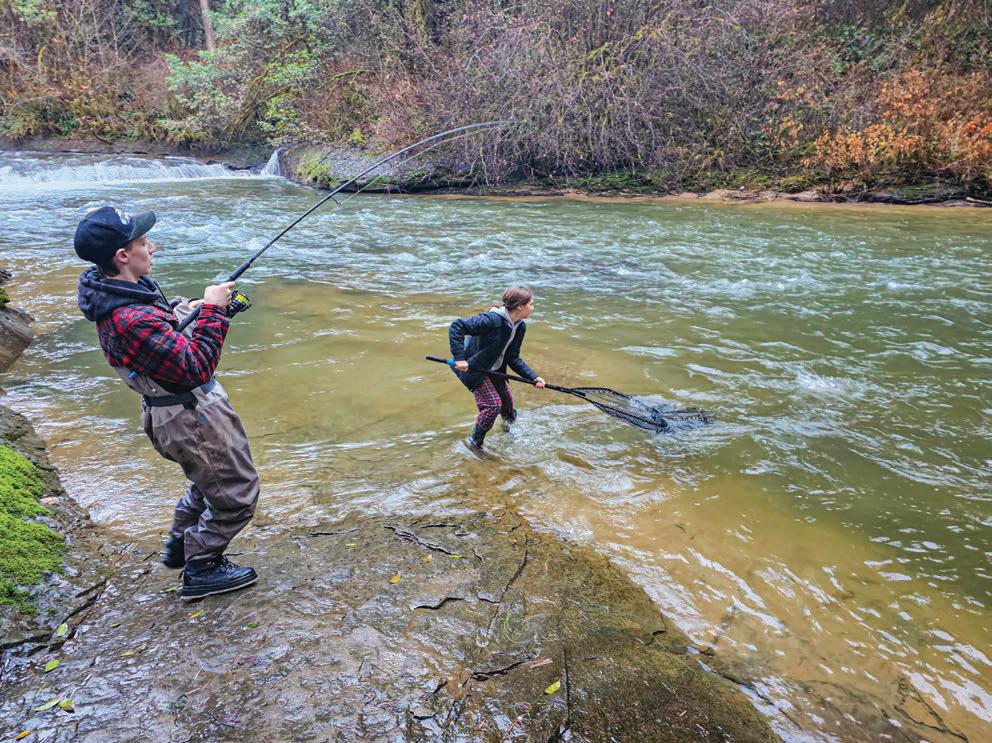
Nate and Ava work together to land a winter steelhead earlier this year. Where once they tagged along while their mom fished, the duo have become quite the young anglers, what Potter considers her “true success.” (SARA POTTER)
such a love, high highs and low lows are a given, yet as mothers we maintain this steady overflowing spring with enough nourishment for all, no matter the truths of our water table below the surface. My love for nature was a healthy way for me to nourish my children, all while restoring or maintaining my own flows. Something that started off so small, almost like the headwaters of a river, grew into something one of a kind. Seeing the pride in my children as they talk of their fisher mom and their childhood on the river, I believe I have been doing something right. My children have seen and experienced the beauty of nature and what it means to harvest and prepare their own food firsthand, more so than a lot of today’s children.
Being a woman on the river in today’s world has taught me so much. The most empowering lessons, though, were learned directly through nature, the fish and my children, though this pursuit is full of all sort of lessons. Never having had a fishing mentor during my own childhood, I was quite literally green when it came to fishing, especially on the river for salmon and steelhead. I realized how deeply fulfilled I felt when I was able to successfully trout fish with my then 1-yearold daughter and 3-year-old son. It was the perfect place to gain comfort and confidence. It was our first “nature to table” harvest, and I liked it! A lot! That tiny lake and those little fish brought out the best version of myself I had ever met and within
that summer I knew we were destined to be a fishy little family. I didn’t know how fishy, but knew the intrigue was abundant: We had this amazing slice of planet Earth, no schedule and nothing was stopping us. We were going to fish.
AS I REFLECT over this past decade, thinking back to the magical milestone moments and heart-crushing ones too, the one constant throughout them all has been my babes! They indeed saw perseverance firsthand. That never-give-up mentality wasn’t something I necessarily preached to them, but rather I practiced it on the banks of the river for them to see.
I can’t help but believe that our fate was set. Unlike so many others in pursuit

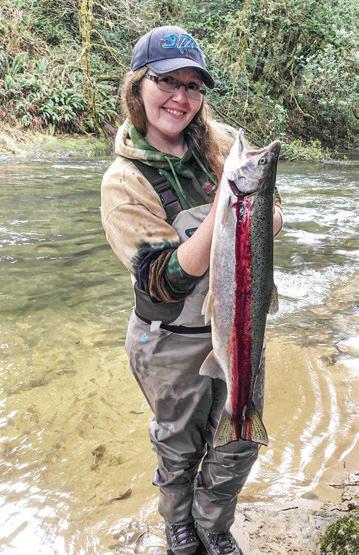
Potter poses with a landmark fish, her 100th steelhead since taking up the sport. Sharing catches on social media for the validation of strangers is far less important to her now, though she still does post about her and her kids’ experiences. (SARA POTTER)
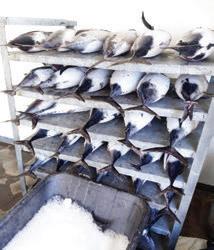
of steelhead, I was only four casts into my bank fishing career when I hooked a hottie! And when I say four casts in, it truly was my second time bank fishing but the first time I knew my knots and created a rigging worth fishing. Drift fishing, tap-tapping along, I felt the bottom and it really was love at first feel, not to mention the radical chrome rocket of a fish that reached out and grabbed me. Nate and Ava were right there with me as I fought and landed that maddest fish, grasping onto my very first river harvest, my babes grasping onto me, and that was a priceless motherhood moment.
My largest springer to date – once again, my babes and my drift. That fish smoked me like no fish had ever smoked me before. There they were, tucked up in the rocks away from any danger; they watched it all! Man, that fish was strong! As that kindest man netted me up, the fight was over but I was still shaking in my boots; I was damn near puking from the adrenaline of it all, as I hadn’t ever encountered a battle like that! I will never forget what a studly feeling it was to leave

the rocks of that mighty river with my pack on my back, Ava on my hip, their bag of everything on my shoulder, my 22-pound springer in one hand, rod in the other. This momma was loaded!
It was on that day my best little helper emerged. Nate, freshly turned 5 years old, hustled beside us, hauling out the net even though it was as big as him. He was smiling ear to ear and so very proud of our giant fish! They both were! I was blown away by the fish, but mostly proud in knowing we were capable of such accomplishments!
My largest summer steelhead was truly a dream come true, and again my babes were there for it. It was also the first time I ever tagged out on summers. Going three for five that beautiful evening, life was good. Learning and catching by leaps and bounds, I knew we were where we belonged.
IN LEARNING SO much about myself and my own abilities, it seemed natural and good for me to share the adventure of our stories through social media. In the beginning it was actually more important

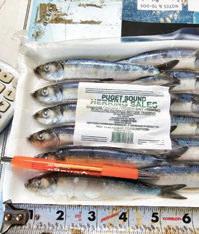
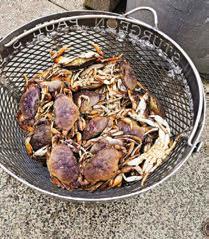
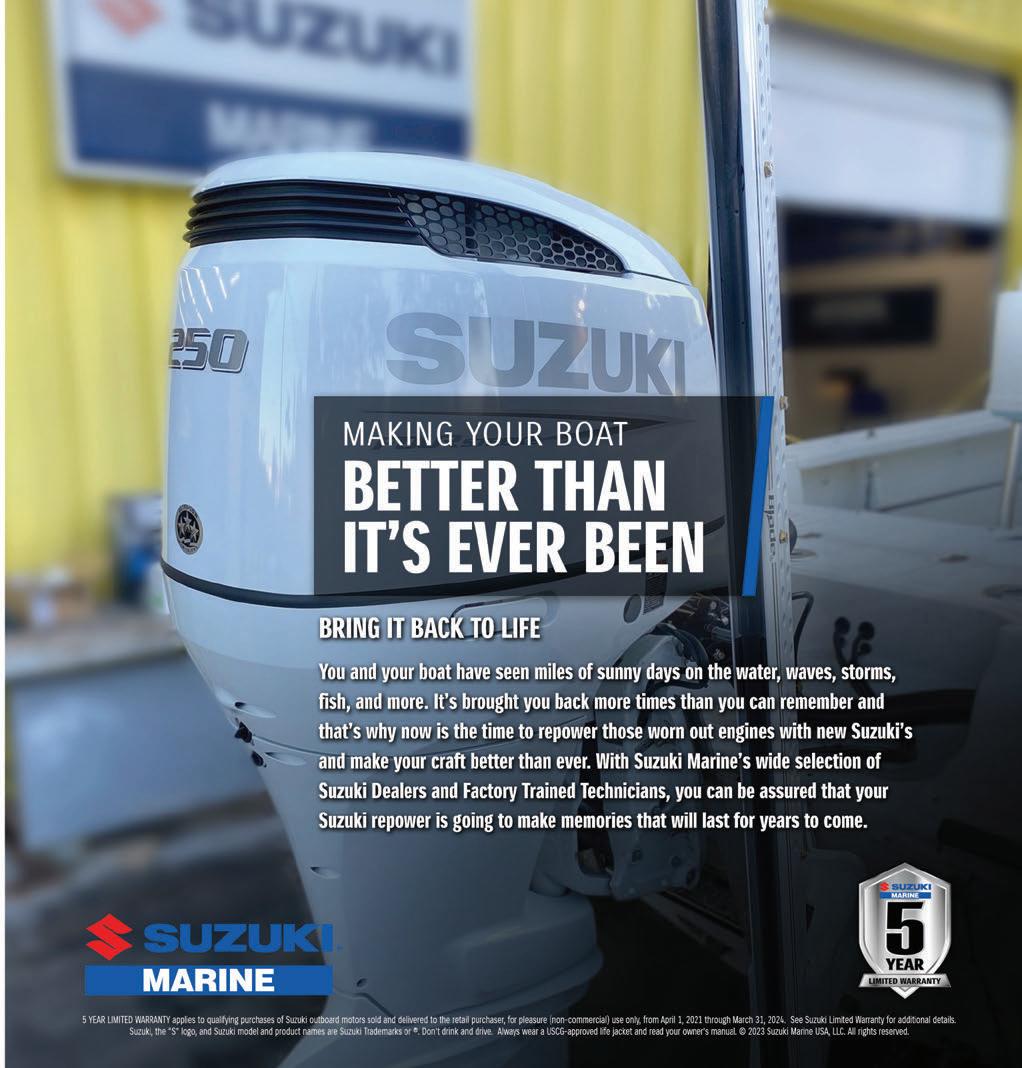

OREGON
EUGENE Maxxum Marine (541) 686-3572 www.maxxummarine.com
PORTLAND Sportcraft Marina (503) 656-6484 sportcraftmarina.com
WASHINGTON
EVERETT Performance Marine (425) 258-9292 perform-marine.com
MOUNT VERNON Master Marine Boat Center, Inc. (360) 336-2176 mastermarine.com
SHELTON Verle’s Sports Center (877) 426-0933 verles.com
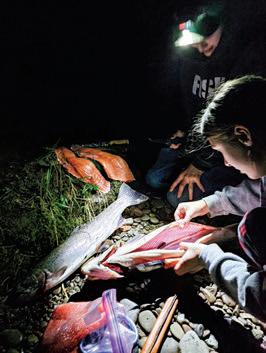
“My children have seen and experienced the beauty of nature and what it means to harvest and prepare their own food firsthand, more so than a lot of today’s children,” Potter writes. (SARA POTTER)

to me than I would like to admit, but it was exciting in a new type of way. I had finally found something that felt so right and I was actually good at it. I had become accomplished in our abilities and somewhat seasoned as a river mother and I wanted to share it.
To this day, I enjoy sharing our love for nature, each other and the tugs we find along the way. I just no longer let it be a guiding force. I have found I enjoy keeping some things secret, keeping them safe, I guess. Validation from strangers does nothing for me now. The validation I seek, if any, is from those who truly know me, not just figments of me. One decade into this sport, I have found my desires have changed. To some I may not be as successful as I was when I shared and shared and shared. But I know me and who I am and why I fish. I have spent a quarter of the years of my life on the river, nine-tenths of Ava’s, and no matter what, I know we are better because of it. I know the unbreakable bond I created with my children through the pursuit of fish. In today’s world, there’s nothing more valuable!
When my 100th steelhead landed on the bank, so much in my life had changed, but you can bet your bottom dollar my children were on that bank with me. I could count all of these incredible moments and write a book. As a mother, it is even more incredible knowing I have been able to share with them the how and the why that ultimately led to their first catches. Salmon for Nate. Steelhead for both. Salty fish, summer ones, winter-runs. My babes learned as they grew and here we are. The fisheries we have embraced since day one are something to smile about, as there are quite a few. I love wondering what will come next.
Seeing my children become capable of fishing independently and wanting to continue pursuing it is my true success. I feel great joy seeing their riggings, testing their knots and listening to the reasons why they will fish that lure. These conversations feed my soul; these are the talks that matter. Through their successes, I feel as if I have accomplished far more than I ever dreamed possible. I hope they know that chasing the fish with them has been my greatest pleasure and privilege in life. My heart is on the river and I couldn’t change it, even if I tried. NS



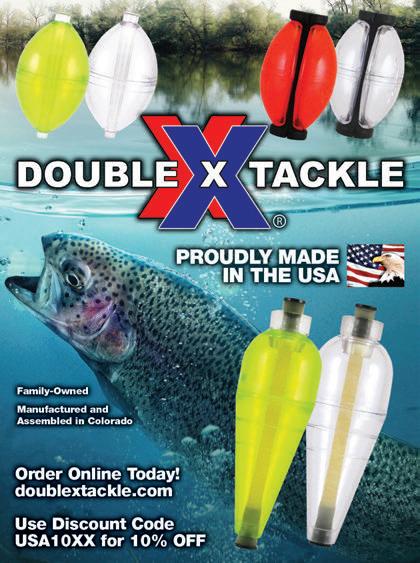

This month will find halibut anglers heading out of harbors from Newport to Westport, Neah Bay to Depoe Bay and beyond. Oregon anglers can fish seven days a week, while Washington’s salty dogs can set sail three days a week. (ANDY WALGAMOTT)

To me, a guy originally from Ohio and having grown up on a diet of crappies, yellow perch, walleye and channel cats, halibut are thing of mystery. One, they look weird, all flat, with their eyes on one side of their noggin or the other. And two, the waters they call home are, to me, as deep as the Mariana Trench, which, if you’re interested, is approximately 36,037 feet deep. That’s an exaggeration, of course, but 500 feet or 7 miles. Same difference, eh?
But out here in the Northwest, Pacific halibut and the pursuit thereof
Flattie managers at ODFW and WDFW share thoughts on 2024’s fishery expectations, Washington’s new six-fish limit, and more.
are popular critters and activities, both of which are highly regulated by federal agencies with monikers like the Pacific Fishery Management Council and the International Pacific Halibut Commission, the latter being a cooperative effort, i.e. convention between the US and Canada, with its objective, per the IPHC website, being “to develop the stocks of Pacific halibut in the Convention waters to those levels which will permit the optimum yield from the fishery and to maintain the stocks at those levels.” The IPHC is, then, the watchdog guarding coastal halibut populations for the sustainable enjoyable of all who would partake.
They’re a complex species, halibut are, with intricate population maintenance and management procedures. Complex, too, are the seasons and fishing boundaries, or at least they are to my freshwateroriented way of thinking. Washington’s 2024 ocean season opens on May 2 in Marine Areas 1 through 4 (Puget Sound’s fishery began last month and continues through June), with a onefish daily bag, no minimum size and a recently boosted six-fish annual limit.
But it’s not an every-day fishery on the Pacific. Each marine area has it own quota and is open on varying days, and then there are bottomfish, i.e., lingcod


and rockfish, restrictions specific to those fishing for halibut. Your best bet, and for the sake of brevity here, is to consult the Washington Department of Fish and Wildlife’s halibut pages at wdfw.wa.gov.
Oregon’s ocean halibut fishery includes three regulatory subareas: the Columbia River (Leadbetter Point, Washington, to Cape Falcon, Oregon); Central Coast (Cape Falcon to Humbug Mountain); and Southern Oregon (Humbug Mountain to the Oregon/
California border). Oregon’s 2024 halibut fishery begins on May 1, and is open seven days a week or until the quotas, which vary depending upon the subarea, are met. For complete regulatory details, consult the Oregon Department of Fish and Wildlife’s website at dfw.state.or.us.
Whew! Now, where were we? Ah, yeah. Halibut.
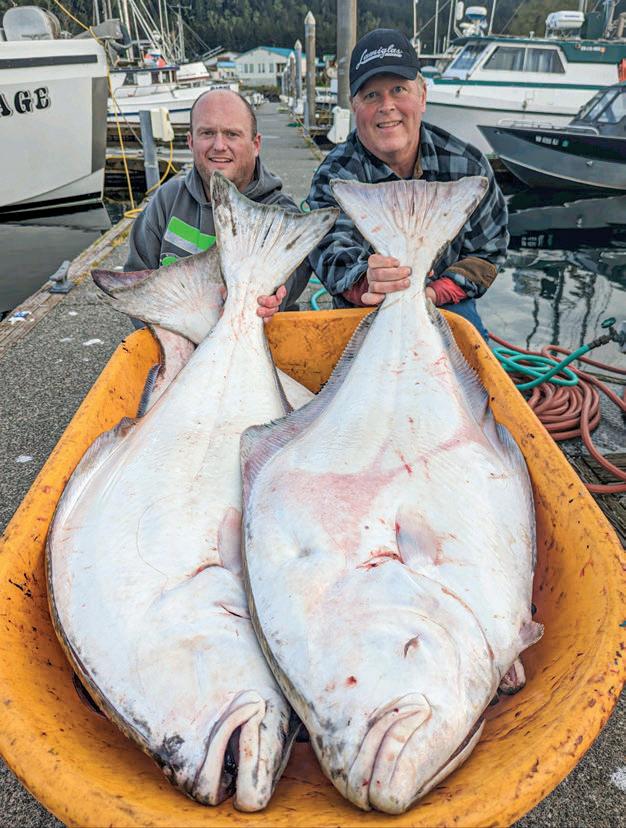
of managing halibut; however, Northwest Sportsman was able to corral fisheries professionals from both sides of the Columbia to get their take on the 2024 season.
First up, Lynn Mattes, who oversees the Marine Fisheries Management Section for ODFW.
“This section manages all the commercial and recreational marine fisheries, except for salmon, for the state of Oregon,” said Mattes, who went on to explain that setting seasons and quotas for halibut is a rather complex process, with a number of different cooks in the proverbial kitchen.
“There’s an international step,” she said, “a federal step, and then there’s a state step,” the latter conducted this year on April 19 by the Oregon Fish and Wildlife Commission, and resulting in the finalization of the season specifics. Whew!
Next, Lorna Wargo, a 30-year veteran with WDFW, began her stint with the agency as a field biologist and now serves as the coordinator for the state’s Intergovernmental Ocean Policy Group.
“Most of my work,” Wargo told me, “focuses on ocean-related issues, primarily around recreational fishing, including bottomfish and halibut. I’m also involved with our Dungeness crab fishery and lead our efforts on our conservation planning relative to whale entanglement in crab gear.”
Understandably, the general public presents Mattes, as well as ODFW at large, with any of 1,001 questions concerning halibut, particularly in the days just prior to the May opener. However, is there one inquiry Mattes fields on a regular or traditional basis?
“One of the main ones is ‘Where can I find the fish?’” she began. “But another one we’re asked is the size of the fish.”
As Mattes explained, Oregon imposed a minimum size restriction on their halibut until the mid-1990s. Today, some still believe the state should hold anglers to a minimum, say, 32 inches.



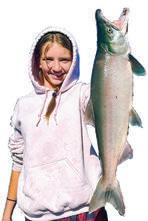

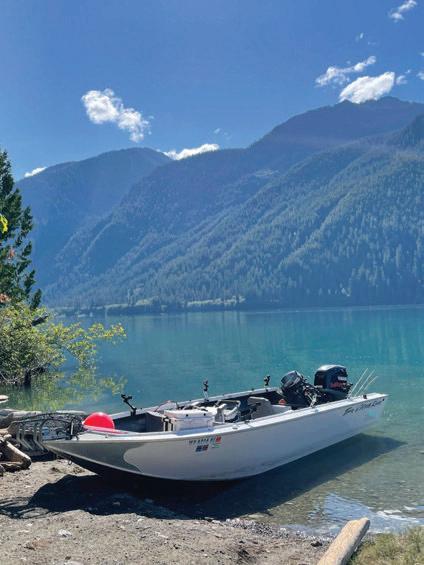

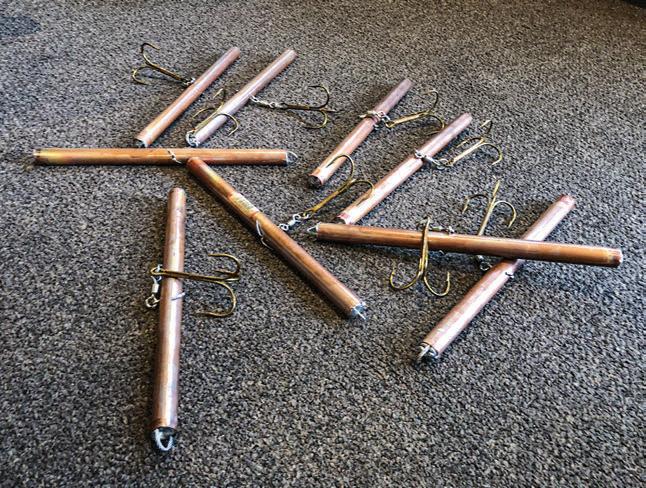
“We
do get a lot of questions about that,” she went on. “Oregon, though, is on the southern end of the (Pacific) halibut’s range, so they don’t grow as big down here like they do off the Gulf of Alaska, Homer or Kodiak. And over the past 30 years, the age and size of (our) halibut has been getting smaller, say, from back in the ’70s and ’80s, and most males don’t get to 32 inches down here off the U.S. West Coast. So a 32-inch minimum size restriction would (create) a defacto female-only fishery, which we don’t want.”
On the Washington side, Wargo’s most frequently fielded halibut question involves when.
“The dates,” she said, without hesitation. “‘When is halibut (fishing) open?’ I would say 95 percent of the calls I get ask that question. It’s really clear that people are planning their vacations around halibut fishing. That, and ‘What else might I do around that time?’ And they (the calls) start in December. We have preliminary dates we announce in November, and so the calls will start in December. We usually have those (dates) solidified in February.”
REGULATIONS AND REGULATORY changes from year to year are to halibut fishing what the rotund fellow in the red-and-white suit is to Christmas, but can anglers expect anything new and different in 2024?
“The only minor (regulatory) change is … last year in July,” ODFW’s Mattes said, “we only had access to every other week as an ‘open week’ for backup dates. (This year), we changed some language, so if there’s enough quota remaining, we have the availability to be open every week for the all-depth fishery. It just allows us a little more flexibility and a little more opportunity, depending on how the season goes.”
According to Wargo, Washington ’but anglers do have one significant regulatory change of note for this year’s fishery.
“We’ve gone to a six-fish (season) bag limit,” she said. “There is a lot of stakeholder support. We’ve been hesitant to take that action during the past couple years. It’s been requested, but we’ve been very cautious. Coming out of the pandemic, fishing dynamics have changed significantly, so we’ve had to work with some
uncertain ideas about how the fishery might take place.”
Here, and for just a moment, allow me to compare the rules surrounding the West Coast’s halibut fishery to the annual waterfowl regulations, of which I’m quite familiar. If you ask the US Fish and Wildlife Service, they’ll tell you the complaint they hear most often about the duck and goose rules is that they’re overly complicated. Days. Hours. Legal shooting times. Limits within limits and seasons within seasons. Drake this. Hen that. Open and closed areas.
Well, I glanced through the current halibut rules and let me tell you, to the layperson, which I am when it comes to halibut, we’re not talking My First Dick and Jane Reader here. I was curious, then, if the managers themselves, looking through the eyes of the general public/angler, might find the halibut regulations a bit, well, challenging to comprehend.
“Yes,” acknowledged Wargo. “I would say across (the whole of) fishing regulations, whether it’s halibut, salmon, bottomfish or crabbing, that (complexity) is a common characterization. We’re trying to carve out opportunity, and that takes a lot of nuance. ‘Simple,’ then, might not provide as much opportunity. So we could be simpler, but then people might not have as many options for fishing.”
“For instance,” she continued, “instead of saying (the fishery is open) ‘two weeks in June,’ we’ll just close all of June. But I definitely think it’s difficult to understand the regulations, and what’s more, to understand the why they’re so difficult. And with halibut in particular, the thing I hear most often is that people aren’t sure if halibut count toward their bottomfish limit. It’s a one-fish-per-day (halibut) limit, and that doesn’t count toward an angler’s bottomfish limit.”
Perhaps not surprising, Mattes’ response to the same regulations question echoed that of Wargo’s almost word for word.
“We’re working to make (the halibut regulations) as less



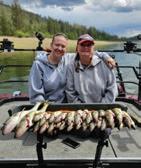


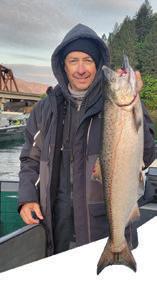





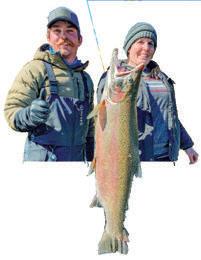
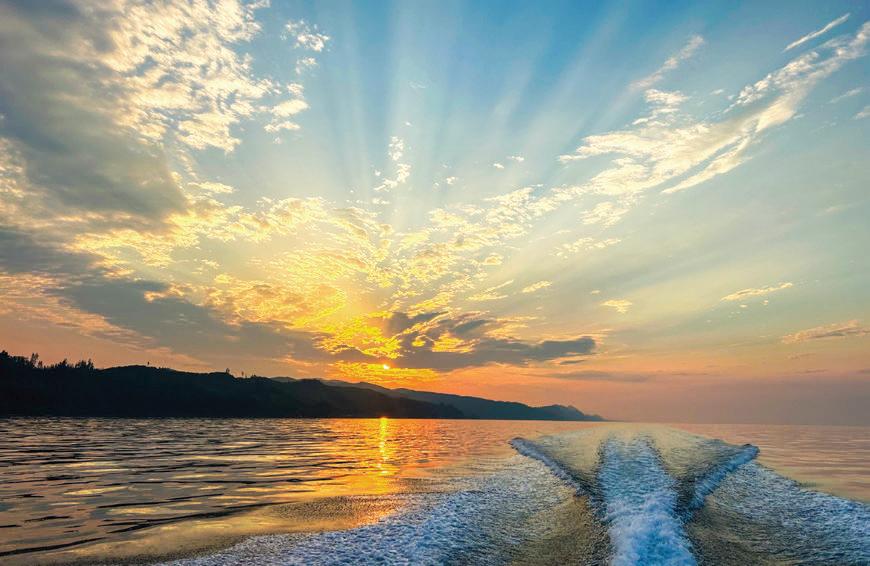
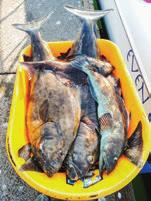

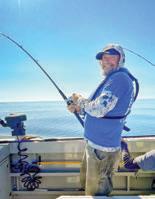
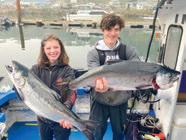
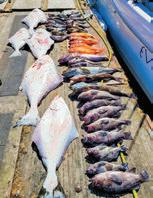
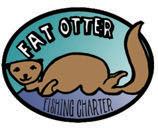
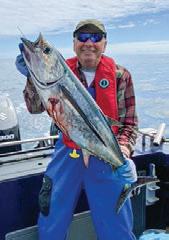
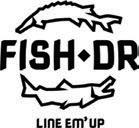

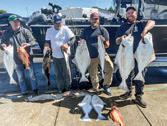

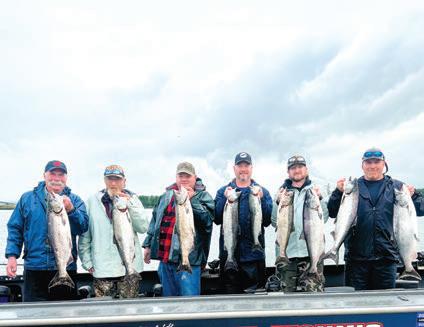


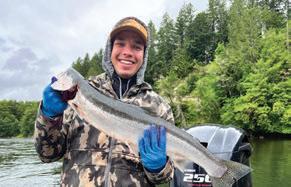
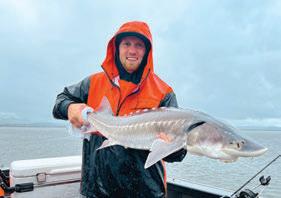



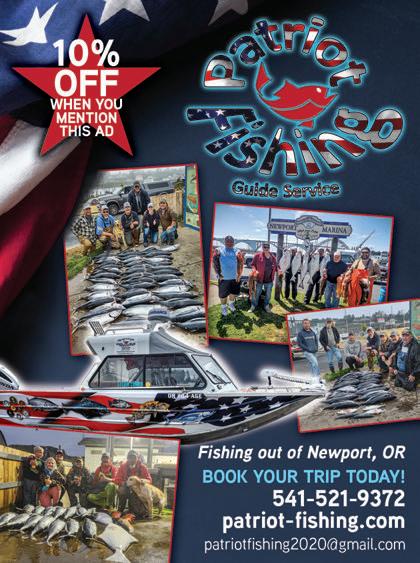

complicated as we can,” she began. “Unfortunately, as you’re trying to find more opportunity, there are times when the rules have to be a little more complicated.”
The main complication, per se, off Oregon waters, according to Mattes, is one of what I’ll call simultaneous opportunity, or more simply, what I can fish for and retain while also fishing for and, hopefully, retaining my halibut.
“People ask, ‘What else can I do on the same trip, along with halibut?’” she said. “That’s where the confusion lies, and that has to do with bottomfish. Off Oregon, we have a midwater rockfish fishery that targets yellowtail, widow and canary rockfish, and that has a 12-fish bag limit this year. So, anglers can combine halibut with that long-leader gear fishery, getting two halibut and 12 rockfish, or they can do the regular bottomfish fishery and get five rockfish, greenling, cabezon and two lingcod. And it’s by boat, so a boat as they’re leaving (the dock) would have to decide, ‘OK, we’re
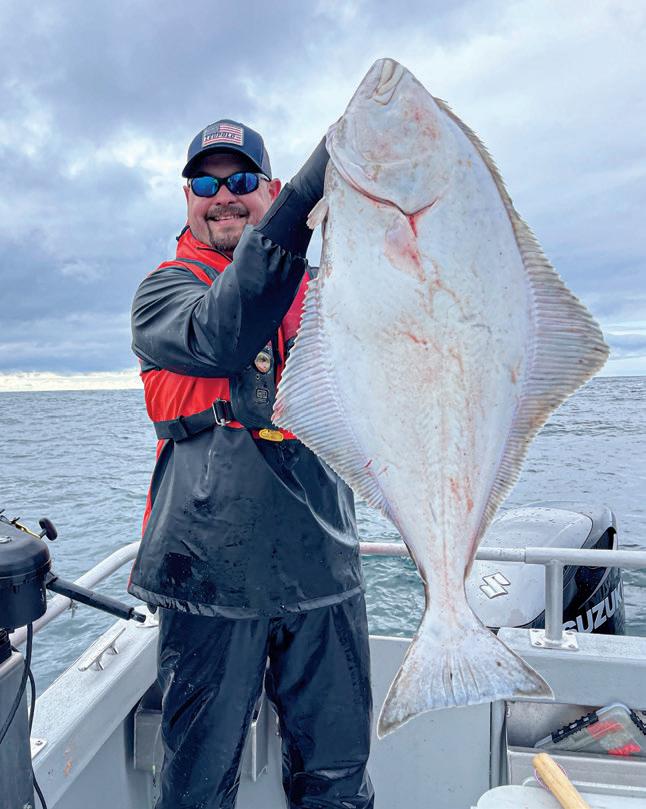
going halibut fishing and we’re going to try to get lingcod and our five bottomfish, or we’re going to do this other long-leader gear fishery. You can’t mix and match those two.”
I ALSO ASKED both managers to look deep into the crystal ball each obviously has sitting on her desk, and give Northwest Sportsman readers a glimpse into what anglers might expect once they venture onto the ocean in their search for one of these fine-eating flatfish.
“Off the Oregon Coast,” Mattes said, “we’re fishing primarily on the 2012 and 2013 year-classes, so those fish are 11 and 12 years old now. The average size of the fish (over) the past four years has been going up, say, 2 to 4 pounds a year, and that’s because those year-classes are getting a little bigger and a little bigger. So we expect the average weight to go up a little bit this year; however, the IPHC’s survey work isn’t showing a strong year-class coming behind that 2012 year-class until (maybe) 2018, meaning that 2012 year-class is going to have to support the bulk of the fishery for a while. So the fish anglers are going to run into this year are going to be a little bigger than in the past couple years, which is good. The numbers are still good; it’s just worrisome what’s coming behind the breeding and recruitment since that 2012-13 year-class.”
And off Washington’s shores?
“I would say similar to last year,” Wargo came out of the gate. “I wouldn’t say exceptional – probably more average. We’re (currently) shifting from a year-class that was larger (2005); those fish are aging out or have almost aged out, so we have subsequent year-classes (2012 and ’15) that in abundance are smaller year-classes.”
“I don’t know,” she went on, “how noticeable that will be in this fishery and we do have a stable quota, but it could mean (perhaps) not as productive fishing this season.” NS
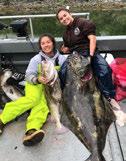
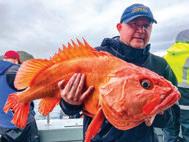
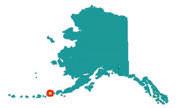

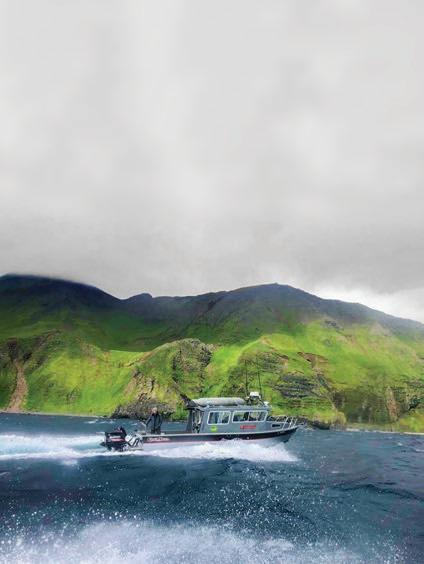
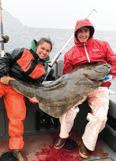
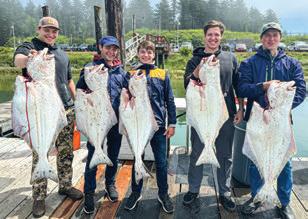

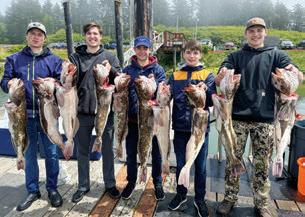
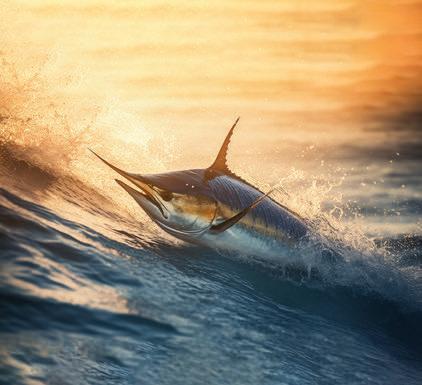
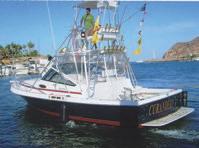
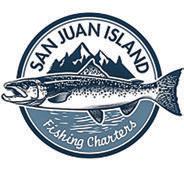


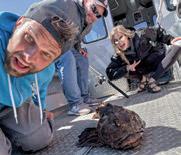
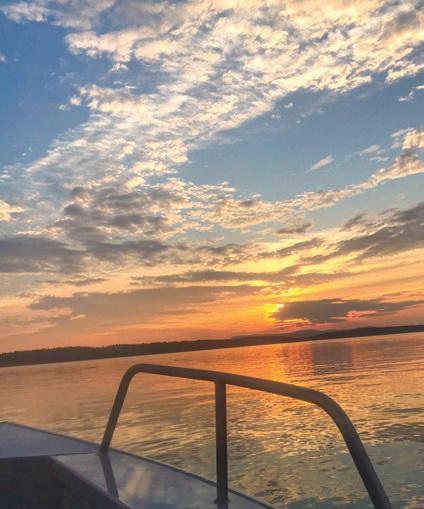


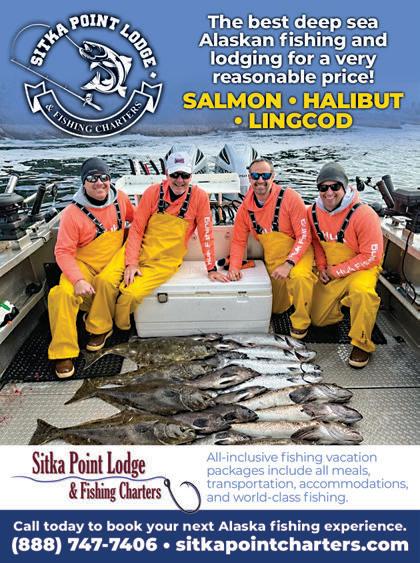

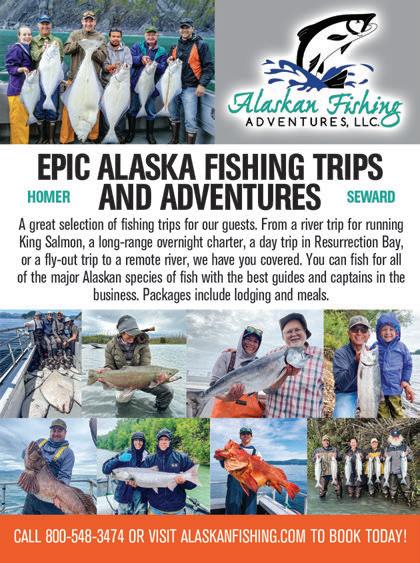

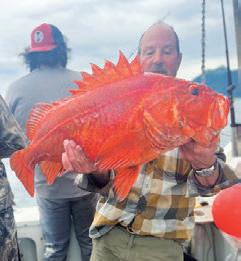
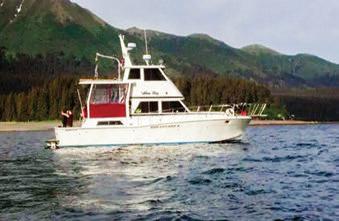
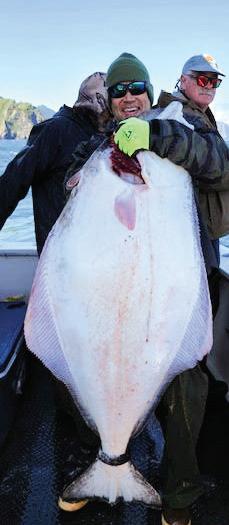
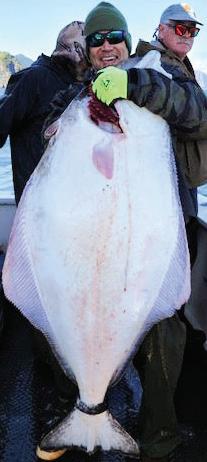




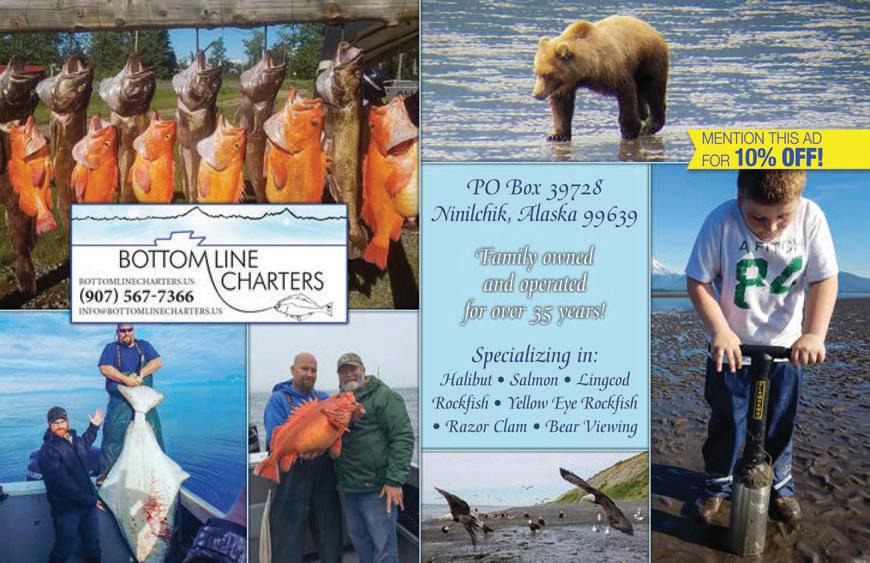
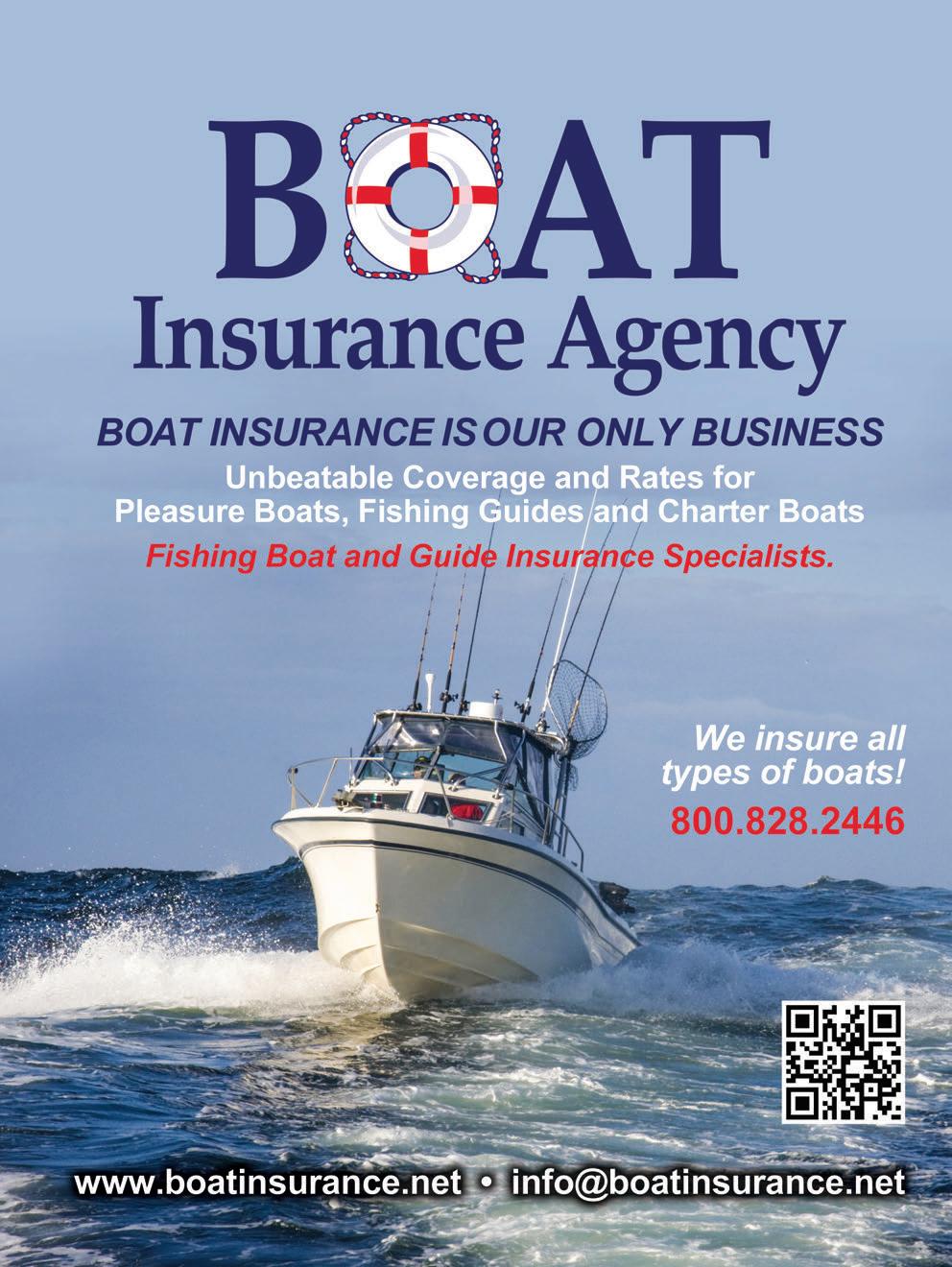
May’s a great month to get kids out for panfish, perch, bass and more, and here’s how to find success.By Jeff Holmes
It’s a loosely held secret that the coldest months offer some of the year’s best trout, kokanee and perch fishing in the Inland Northwest. But without significant gearing up, powerful heaters and/or raging beach fires, it can be tough to lure all but diehards onto beaches, boats or ice without a lot of effort and expense of time, energy and money.
However, as the region’s weather and waters warm significantly in May, trout and kokanee fishing remains excellent, and active-biting spinyrays come alive. Catching can be fast and furious in pleasant fishing conditions, which is why May marks the beginning of the best season to recruit new anglers, especially kids. There’s not much more fun than taking kids fishing.
May offers that sweet spot when the fishing is good, the weather is usually great and the landscape couldn’t look prettier. Ospreys power dive in front of us and carry fish back to nests. Ducklings and goslings bob around with extreme cuteness. Redwinged and yellow-headed blackbirds and other songbirds trill, fight and gather food in the reeds and along brushy shorelines. On the hillsides surrounding many Inland Northwest lakes, turkeys gobble, deer graze and all manner of other riparian wildlife are conspicuous against a verdant, green backdrop. May is a great time to get fair-weather angling friends, spouses, significant others and, better

(JERRY HAN)

yet, kids on the water to enjoy nature and reel in squirming trout and kokes. However, when temperatures soar during summer, most lake temps get uncomfortable or even deadly for salmonids, sending them deep and making them reluctant to bite throughout summer except under cover of darkness.
That’s where spinyrays and their large numbers and extreme willingness to bite provide an overlooked opportunity to hook new anglers on fishing and to train them to operate simple and inexpensive fishing gear. A pond or lakeshore teeming with pumpkinseed and other sunfish, perch, crappies, bluegills, juvenile largemouth and smallmouth bass, bullhead catfish and other species offers a training ground where extreme numbers of bobber downs result in a cornucopia of catches. Teaching kids or other newcomers to the sport how to reel in fish, remove hooks from their mouths, bait hooks, kill fish, release fish and
to just interact with fish is invaluable. Simple red-and-white bobbers, split shot and snelled Danielson and Eagle Claw hooks baited with worms were my – and many an angler’s – gateway drug and remain extremely effective recruitment tools.
ALL SPINY-RAYED SPECIES are native to east of the Mississippi but have long since found their home in the Pacific Northwest. Most species were brought here via rail car, and robust populations of bass, perch, walleye, sunfish, crappies and even grass pickerel were first established in lakes and ponds along early rail lines. They have since spread practically everywhere in the Northwest through sanctioned stockings, illegal bucket biology, as eggs on the legs of birds, and in the bilge of boats. Like most alien species introduced to nonnative environments, spinyrays flourished in our waters and established a permanent foothold. In fact, in most stillwaters, there are too many
fish, which results in stunting due to competing for not enough food. Killing lots of panfish from most lakes has nothing but a positive impact. Of course, check the regulations because a small handful have size and bag limits on bluegills and crappie and more commonly on bass.
No matter how big your boat is, how honed your skills are or how long your list of angling accomplishments is, there is joy to be found plunking bait or dangling worms below red-and-white bobbers with kids. Fast action is a key to keeping kids’ and other neophyte anglers’ attention, as is the variety of species you might catch fishing bait under bobbers. Here are some species that can be found almost everywhere in the Pacific Northwest and that make ideal quarry for those not expecting much and those, like me, who get nostalgic about reeling in scores of fish in warm weather in cool places. All of these fish turn up in the catch when you dangle a chunk of worm or a nightcrawler below a bobber.



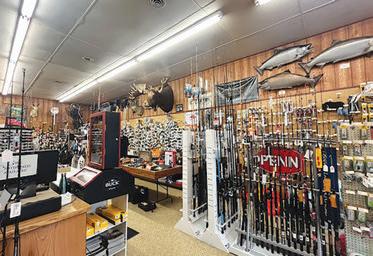

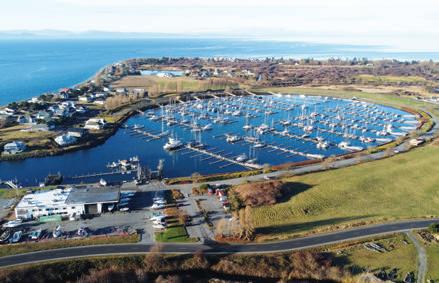

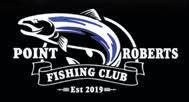
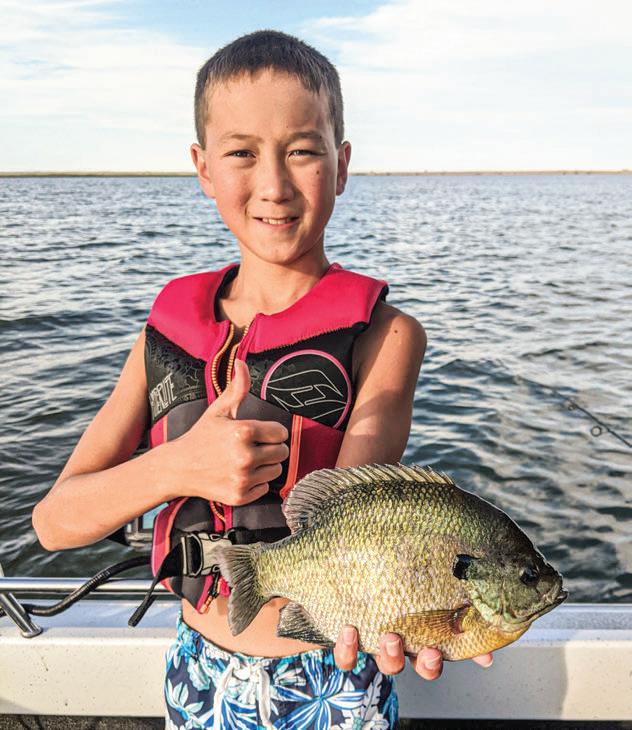
PUMPKINSEED SUNFISH ARE perhaps the most common and widely distributed panfish in the Northwest. Rarely exceeding 8 ounces in weight and with a Washington state record of a whopping pound, pumpkinseeds are overpopulated in most lakes but are among the most voracious little spinyrays. They will eagerly bite almost any bait or tiny jigs and are delicious when, under rare circumstances, people remove their tiny filets from their bony bodies. Pumpkinseeds were a big part of the first chapter of my fishing story. When you want to put kids or other total neophytes on nonstop fish, the beautifully colored pumpkinseed sunfish is an ideal quarry.
Between the good ol’ red-andwhite bobber and a worm, the plethora of plastics on the market and easily castable lures like plugs, spinners and spoons, you can’t go wrong in pursuit of bluegills, crappie and other warmwater species.
(JERRY HAN)and meaty little fish that are the favorite freshwater fish flesh of many. They can be found shallow and within range of bait dangled below a bobber, but they can also be found to depths of 30 feet in the heat of summer, making them better targets of plunkers than bobber lobbers. If you look for and find a strong concentration of perch, bringing kids or other newbies to fish over them usually results in fantastic fishing.
CRAPPIE CAN MOSTLY be found in shallow water in May before they descend to greater depths in the summer as waters warm. They are less available than other spinyrays, and crappie enthusiasts are among the most tight-lipped angling group. That’s because crappie are among the most delicious and desired panfish, and their range and numbers have decreased as a result of overharvest but especially because of competition from other nonnative gamefish. If you can find a concentration of crappie close to shore, they are as fun to catch as any of the spinyrays.

BLUEGILL SUNFISH ARE less common than pumpkinseeds but are similarly widely distributed. They get way bigger than pumpkinseeds and can regularly reach or top a pound in some fisheries. A 1-pound or larger bluegill is arguably the pound-for-pound fighting champ of North American freshwater fish, but most are significantly smaller. Usually schooled up close to shore, they can be ideal for newbies and kids and are arguably even better tasting than fan favorite yellow perch.
YELLOW PERCH ARE by far the most popular ice fishing quarry, but they are underappreciated and underpursued during much warmer months. Yellow perch are extremely widely distributed
BOTH SMALLMOUTH AND largemouth bass are super aggressive and available to kids dangling worms below bobbers. They often occur in the catch alongside efforts to catch sunfish and perch, but it’s also possible to target large concentrations of juvenile bass. They tend to be conspicuous, schooling fish when young, and getting kids on them can be quite easy and lucrative. There are no catch or size restrictions on bass in any Columbia River tributary, but restrictions apply on many other waters, so do check the regs.
Fishing a whole nightcrawler has accidentally resulted in largemouth to 4 pounds for me and smallmouth to 5 pounds. But they will also bite smaller baits and also lures. Smallmouth are far faster growers and better breeders than largemouth, so retaining smallmouth is a better idea. They also taste better than largies. Landing a bass while concentrating on perch and sunfish is a huge bonus and a point of excitement for kids.


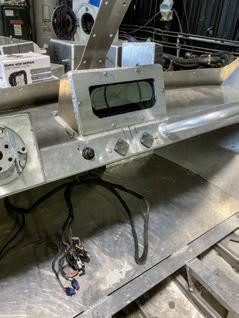
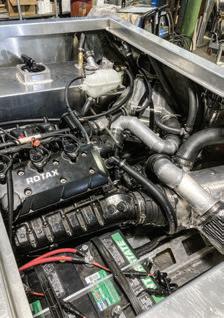




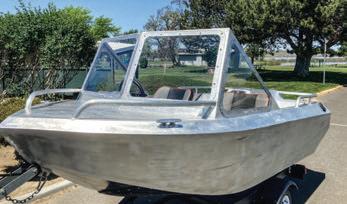
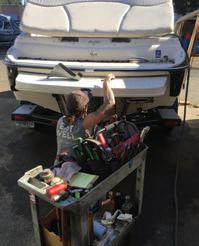
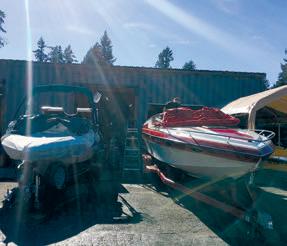


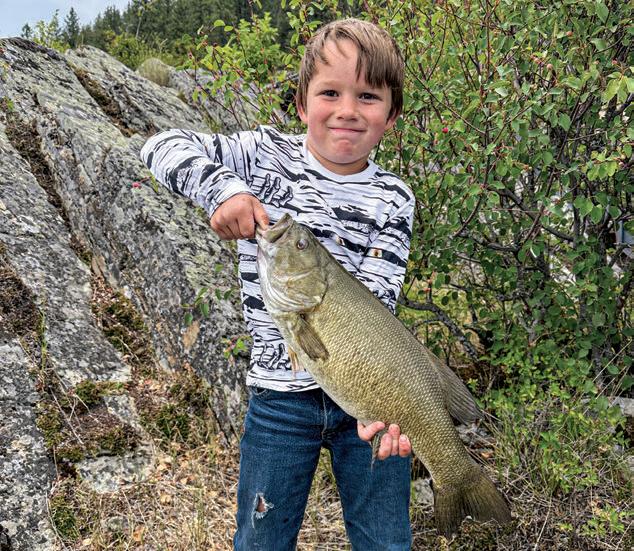

WHETHER YOU’RE SEEKING to recruit kids, buddies, family members, dates or whomever, you can’t go wrong with a cheap, active and super-fun red-and-white bobber throwdown. Even if recruitment is less on your mind and seeking the tolerance of a fairweather spouse or significant other is more on your radar, watching bobbers go down and accumulating a big cooler of fish is fun, ethical and lucrative. There’s a time and place for catch and release, and you can teach kids conservation ethics perhaps by releasing largemouth, but serving a delicious fried fish meal motivates kids and newbies and inspires them to continue to fish. Sunfish, perch and especially bluegills are delicious morsels, and small bass, especially smallmouth, can be delicious too.
Cleaning them, however, can be a real chore for untrained or busy anglers. For those who are not deft with a 4-inch Rapala filet knife or a scaler, an alternative exists. Buy some cold-water Arctic cod and cut small chunks reminiscent of the size of the fish your kids caught. Dip those cod chunks in a delicious batter or coating and perfectly fry them and serve them with homemade fries. Or, more ideally, bleed and ice your kids’ catch and put in the time fileting a bunch of pumpkinseeds, crappie, bluegill, perch or little smallmouth. Fry them beautifully and pair with fries or other kid favorites and their favorite dipping sauces. My folks served me both ocean fish and sunfish and perch as a kid with homemade fries and tartar, and it clearly connected the feast with great times watching red-and-white bobbers drown.
Last year, I spent a couple hours in a Columbia River boat basin in Tri-Cities hauling tiny smallmouth bass after bass onto the launching dock with a 7-year-old and then served her fried lingcod nuggets I advertised as smallmouth. I’d have fileted those bass, but they were 3 to 5 inches. She didn’t care and likes fishing as a result. NS



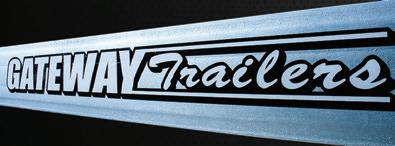






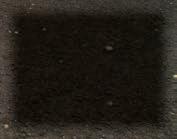

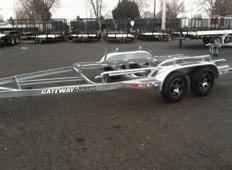
The vast region where the Snake and Clearwater meet plays host to solid May spring Chinook
Story
and captions by Jeff HolmesYakima’s claim to the title of “The Palm Springs of Washington” is vulnerable and as faded as the 40-year-old sign bearing that slogan that still stands sentinel as motorists enter the city from the north. Yakima is a great place to visit, especially for those from the Wetside of Washington seeking dry, pleasant weather in spring. And in fairness, Yakima is gateway to some awesome hunting and fishing, but it’s awfully close to the 6 million people living in Pugetropolis, which tends to lead to crowded wildlands relative to
landscapes further to the east.
For me and my family, as well as the thousands of sportsmen, golfers, baseball players and track athletes seeking early spring conditions, the real Palm Springs is Clarkston and its sister city across the Snake River in Idaho – Lewiston. The LC Valley is a sportsman’s paradise year-round, but it is especially sublime due to early spring weather and diverse outdoor opportunities in generally uncrowded conditions. It reaches its crescendo of awesomeness in May.
Home to the great confluence of the Snake and Clearwater Rivers, Clarkston and Lewiston and the
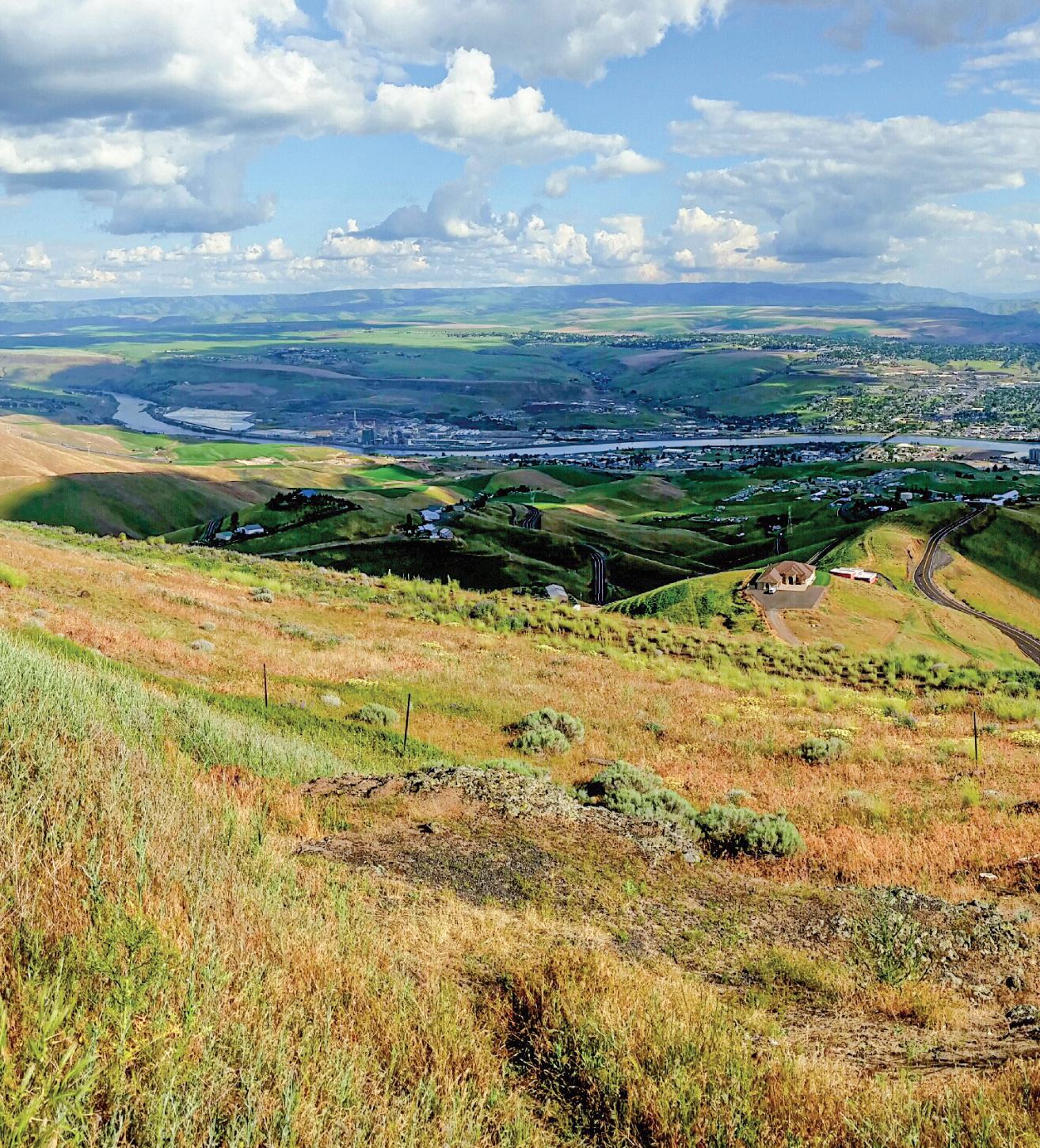
surrounding wildlands and waters offer vast and lucrative harvesting and catch-and-release opportunities in May. I wrote about a few of these opportunities last May while also highlighting the cornucopia of outdoor options across Washington and Oregon during this special month. May in the Northwest is home to razor clamming, spring Chinook angling, halibut and deepwater lingcod opportunities, excellent coldwater and warmwater fishing in the region’s lake and rivers, turkey hunting, and much more. Of course you won’t find any razor clam beaches or halibut in or around the LC Valley, but you will find excellent
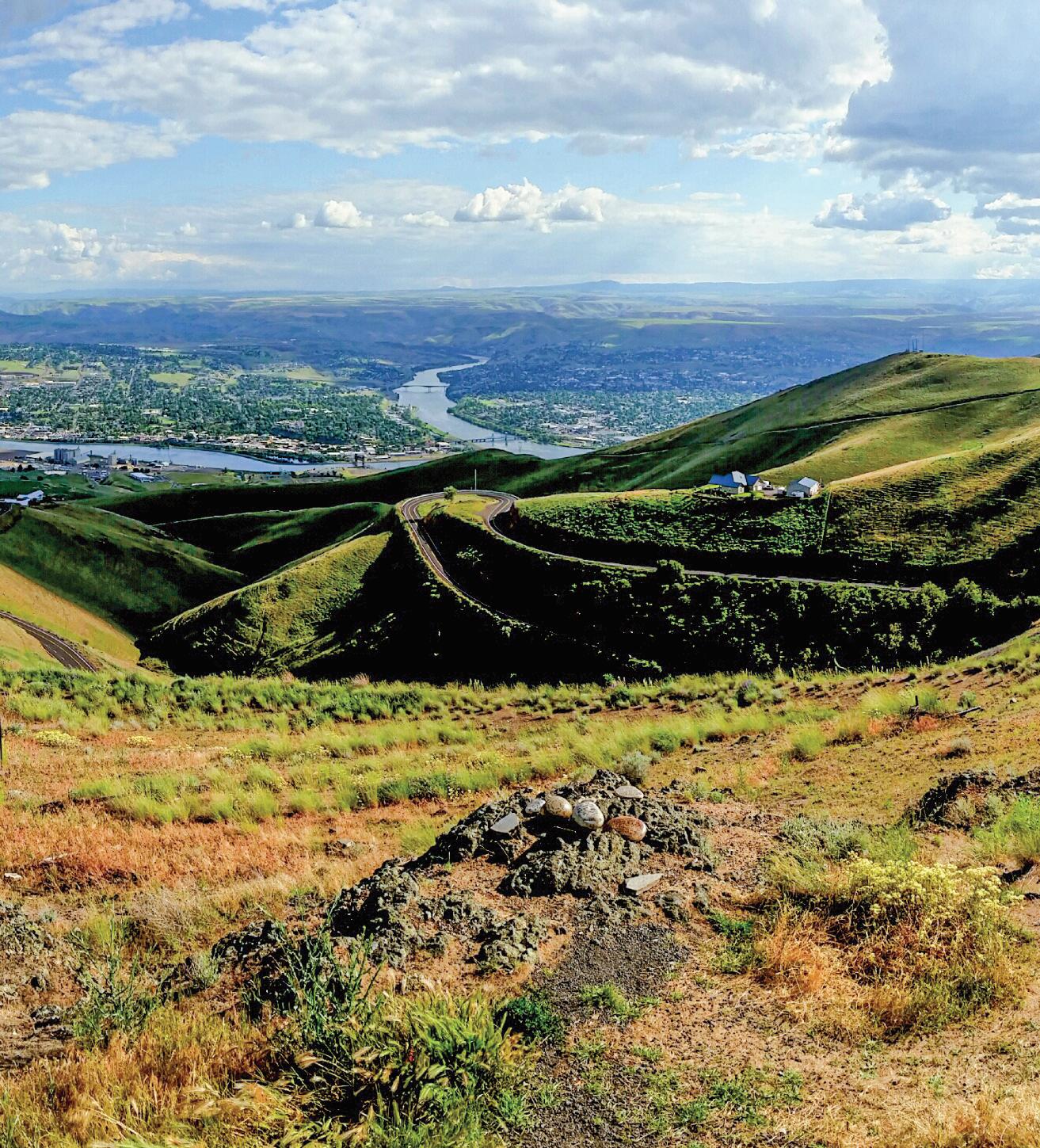
springer fishing, the best smallmouth bass angling in the nation, record numbers of Rio Grande turkeys that have benefitted from successive mild winters and the Northwest’s best morel mushroom hunting. There is an overwhelming amount to do in the big small towns of Clarkston and Lewiston and plentiful harvest opportunities waiting for you this May.
SPRING CHINOOK NUMBERS are projected to be down slightly from last year’s surprisingly good run, but there will be sufficient numbers to make for good fishing. Idaho’s Clearwater and its tributaries are the backbone of the
Columbia River springer run. The area offers some of the best harvesting opportunities in the Northwest, and these fish show up in fantastic shape and still set barbecues aflame as their rich fat drips onto coals and burners. These springers are headed for the mountains of Idaho and Montana.
Just to the south, a short drive from the LC Valley, the Salmon River also offers reliable springer fishing and will produce again in 2024. Meanwhile, the Washington and Oregon Departments of Fish and Wildlife sometimes open up springer fishing in the Snake at the confluence, literally in Clarkston, and in portions of Hells Canyon, respectively.
Some years, the Grande Ronde and Imnaha Rivers and Lookingglass Creek in Oregon also open.
There are plenty of guides available in the LC Valley who can get you on springers, and one of the best choices is Toby Wyatt’s Reel Time Fishing (reeltimefishing.com). I like to watch the progression of the main run up the Snake and book or take my own boat just as a big push is entering the Clearwater. Not only are these fish essentially bearing the same quality of meat as those landed in the Columbia Gorge and mid-Columbia, they are snappy and constrained into a narrow chute when they first enter the
Clearwater in Lewiston. Fishing here can be extremely lucrative. Since these fish won’t spawn until September or even October, they will remain in great eating condition as long as Idaho allows the season to run. Don’t hesitate to book a trip or to private fish upstream near Orofino or even further up in the system all the way into late June if fisheries managers allow it.
The Clearwater and Salmon drainages opened April 27 for Thursday-Sunday hatchery spring Chinook fishing, while Idaho’s Snake is open seven days a week.
NEXT YEAR YOU could very well see me or another writer detailing the new walleye fishery in the LC Valley, since fish have now been caught there and all the way up to Riggins on the Salmon (see The Big Pic, page 28, for more). But for now, smallmouth are still the warmwater king here, and big spawning pushes of them make their way up the Clearwater, Grande Ronde and Salmon Rivers out of their wintering depths on the Snake. I’ve fished for bass in all of these rivers, especially in the Snake, and there is more habitat and more places to fish than an angler could reasonably visit in a lifetime.

When the big push of spring Chinook shows up to Idaho this May, many anglers will wait in ambush in a disorganized hogline above the railroad bridge in Lewiston. Fishing here can be the fastest springer action in the Northwest due to a narrow river and the tendency for these fish to be snappy when they hit the Clearwater. (KNIFE PHOTO CONTEST)
This 21.5-inch smallmouth bit Toby Wyatt of Reel Time Fishing’s (reeltimefishing.com) jig on the Grande Ronde River a few springs back as we waited briefly for a shuttle to show up. That day featured fantastic bass fishing, which anglers can also enjoy on the Clearwater, Salmon and Snake Rivers in May. For the biggest smallmouth on the continent, Dworshak Reservoir and its kokanee-eating smallies are about an hour from Lewiston and just a few minutes further from Clarkston. (JEFF HOLMES)
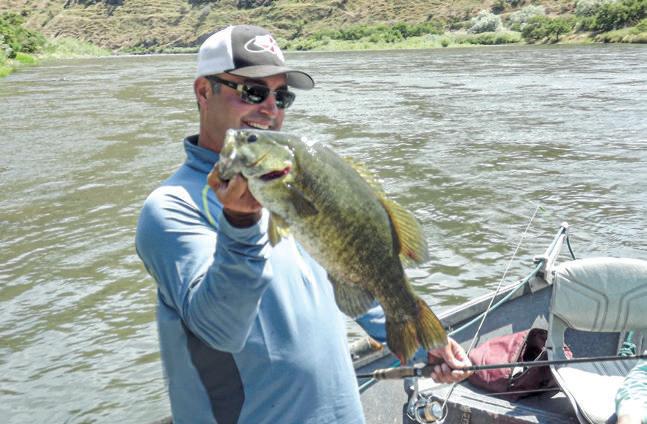
Guides offer smallmouth trips on all of these rivers, but a semi-competent bass angler or even a total newbie can likely find and catch fish here. Arm yourself with different plastics imitating crayfish and plastic and hard baits imitating salmon and steelhead smolts. The preferred bait can change from day to day, but one thing is sure: When smolts are present in big numbers, smallmouth put them on the menu.
Meanwhile, less than an hour from Lewiston, Dworshak Reservoir is the continent’s undisputed factory for big smallmouth. Nowhere in the world is producing bigger smallies than this forested, largely unpopulated reservoir, with fish pushing 10 pounds caught recently, along with

tacoma, wa
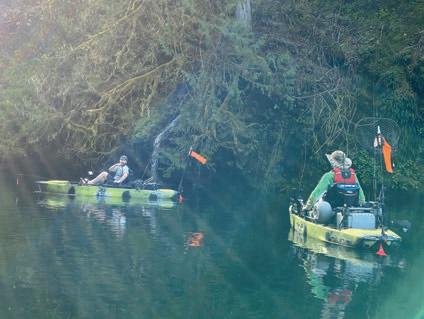
- 6 hour guided trips
- 3 passenger per trip
- Open 7 days a week
- 4 fully decked out hobie pro angler 360s
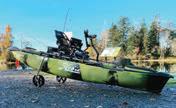
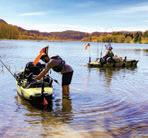
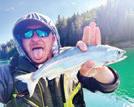


for reservations call
(253) 244-2528
or fill out a guided trip request form on
feraloutfitter.com

sculpin tubes and jigs generate bites from creating subtle flashes and movements from the jig’s innovative pectoral fins
opening the fins by dropping the jig only a few inches keeps you in the zone and stimulates strikes
made in palmer, alaska, these jigs are designed to be alaska tough


Drastically improve performance and steering of bow-mounted electric trolling motors with the LeeLock Magnum Skeg. The use of bow-mounted electric trolling motors for salmon trolling is a game changer. Not only does this skeg improve performance, it makes bow-mounted electric trolling motors much more efficient. Your batteries will run longer on a charge. The LeeLock Magnum Skeg can be a vital part of your trolling motor system!
The skeg is made of anodized 5052 aluminum. The size is 8 3/4 inches high by 10 inches wide and it’s 3/16 inch thick. The anodization keeps the aluminum from corroding in fresh- and saltwater. The LeeLock Magnum Skeg is available to fit most Minn Kota and MotorGuide (pictured) motors. It comes with clear PVC-coated stainless steel hose clamps. Call 360-380-1864 or write info@ leelock.com if you have any questions about fit.



This new Leelock Motor Mount is designed for the Minn-Kota Quest series of motors. The mount will fit in any of the LeeLock Anchor System Bases. The mount will be available angled to the port or starboard side. Simply slide your Motor Mount on the base and lock it in with the pin. An optional locking pin is also available to prevent the motor from being stolen.
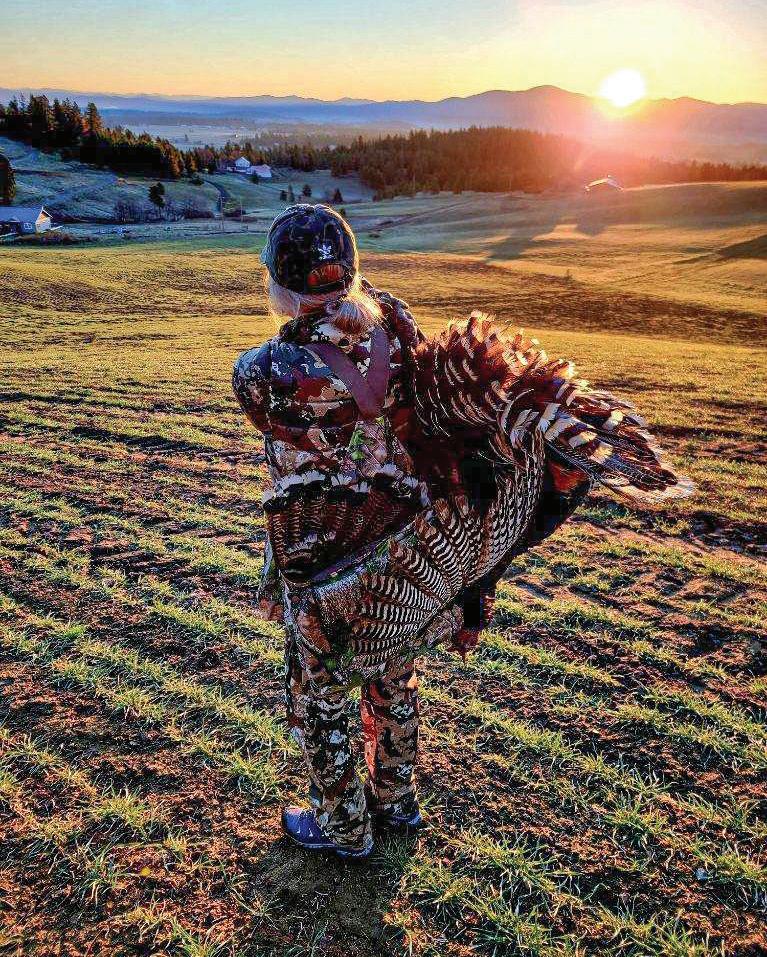
many 6- to 8-pounders. Kokanee populations are booming, and so are the lake’s kokanee-gobbling trophy smallmouth. I’ve fished Dworshak several times throughout my life, covering all of the reservoir except the portion immediately above the dam. My trips have always been wonderful and in summer and with abundant smallmouth to catch, but as Reel Time Fishing guides and other Dworshak experts know, May or even earlier is prime time for prespawn and spawning female bass.
Dworshak has very limited
The Inland Northwest now features some of the very best turkey hunting in the nation, with birds broadly distributed across the region. Never before have more birds been available than this spring in the mountains surrounding the LC Valley after successive ultramild winters, and they could give Northeast Washington – the most turkey-rich part of the Inland Northwest and where Kennewick’s Taylor Hester bagged this bird – a run for its money. Taylor is married to Tri-Cities fishing guide TJ Hester of Hester’s Sportfishing (hesterssportfishing.com). (TJ HESTER)
services, is home to relatively few boat launches and is a giant body of water that deserves respect. But with that disclaimer behind me, Dworshak and its vast boat-in camping opportunities are amazing. If you go, you’ll likely have the run of the lake in May, including its many boat-in campsites. Booking a trip with Wyatt or another guide is a great way to ease the learning process.
TURKEYS HAVE GREATLY expanded their footprint over the years in the Inland Northwest, and mild winters always
catalyze their spread. This April near Snoqualmie Pass, a chorus of jakes exploded in the trees just beyond where I was shouting at a one-eyed pug named Winky I was babysitting – ahh, yes, the things we do for love.
Whether it’s the Cascades, the TriCities area or the scablands of Eastern Washington and Eastern Oregon, turkeys are now almost everywhere.
That’s especially true in the Blue Mountains near the LC Valley. Decent to good numbers of turkeys have lived in the foothills of the Blues for decades, but birds can now be found from river valleys to the highest elevations. With the vast public lands of the Umatilla National Forest and WDFW’s Chief Joseph, Asotin Creek and WT Wooten Wildlife Areas, among other public lands, there is tremendous access to hunt these big, tasty birds this May.
To my eye – and I’ve spent vast and obsessive amounts of time in and around the Blues my whole life – there have never been even close to this many birds running around. During a March drive from Clarkston to the Grande Ronde at Troy, Oregon, and then back to the LC Valley in part on backroads through Asotin County, I saw at least 400 turkeys, which is easily three to four times more birds than I’ve seen in this area on any previous drive. I was blown away, and moreover many of these birds were on public land or on property bearing WDFW’s “Hunt by Written Permission” signs. Other than occasional turkeys killed by coyotes, bobcats, cougars and motorists, there appeared to be zero winterkill. Birds were spread from 4,000 feet down to the canyon floors and widely distributed.
The winter was similarly mild in the mountains of Idaho along the Clearwater River in close proximity to the LC Valley. Never before have the odds of scoring a May turkey been better in the region, and doubling up on turkeys and morels is a real possibility.
SPEAKING OF MUSHROOMS, for whatever reason, last year was a poor year for morels across the Northwest. There



Early signs are good for morel picking this spring, which I’ll test a little early this year due to mild temperatures and warmer-than-normal soil temperatures in late April. Every year May is the sweet spot for morels in the Blue Mountains and in the mountains of Idaho east of the LC Valley. This picture, taken in the Umatilla National Forest, illustrates some prime morel habitat outside of a burn area. Lots of grand firs, needle liter, sparse vegetation and filtered, indirect sunlight are all part of the recipe for finding these tastiest and most expensive of Northwest mushrooms.
(JEFF
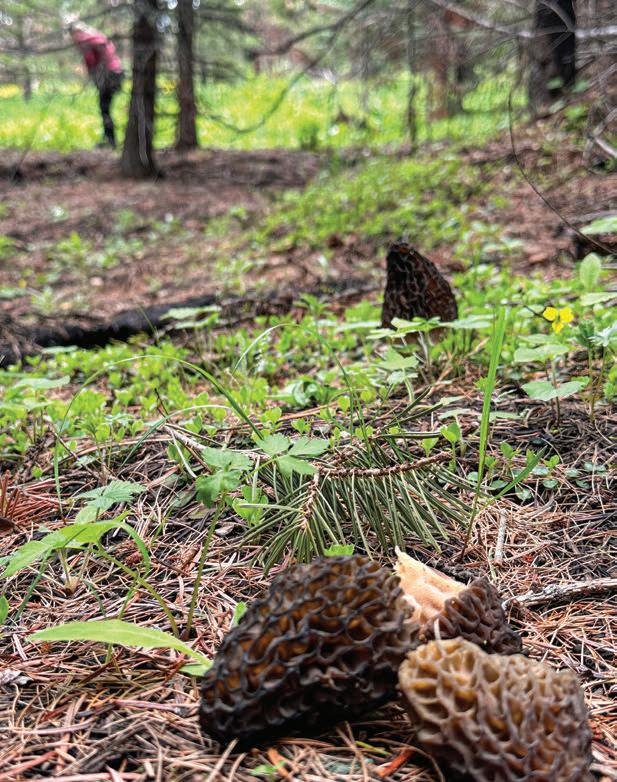
were bright spots, for sure, as there always are, but picking was generally slower regionwide. Meanwhile, this slow year was on the heels of the best year for picking in at least a decade.
It’s difficult to demystify the magic of morel mushrooms, but thinking too hard about them instead of following some basic principles and covering ground will always lead to no or very few morels. Early indications in mid-April reveal that mushrooms are popping up a little earlier and at a little higher elevations than is normally the case. All signs point toward a lucrative May, and both
the Blue Mountains in Washington and Oregon and the mountains in Clearwater Country to the east in Idaho should produce beautifully this year in new burns, old burns and in no burns at all. Use onX Maps and their map layers showing last year’s and historic wildfires to narrow the search, but do not subscribe to the theory that morels only grow in and around burn scars. I have picked bucketfuls from old burns and places that have not burned in many years.
Of course, it is true that the greatest ’shroom spectacles I’ve seen have been within the footprints of
burns. The biggest blonde morels, my favorite, generally seem to occur naturally or in older burns as opposed to fresh burns from last year. In the mountains around the LC Valley, remember that morels emerge first at low elevations and gradually the bloom extends upward. Old firs –especially grand firs – that morels favor are good starting points. Look for filtered light with good cover, swales on hillsides and pine needle litter. Elevations from 4,000 to 5,000 feet in May in the Blues and other mountain ranges in Oregon and Idaho is perfect. If you find old, inky, degraded morels, change elevation or look for a different directional aspect or more shaded areas close to moisture.
Be safe and carry rain gear, bear spray and/or a pistol, a survival kit and sufficient food and water, and slowly amble through the mountains. You’ll jump grouse, find sheds, notice cougar and wolf kills and see wildlife and the fine details of the forest you might otherwise miss moving at faster speeds. Pay attention to where you find morels and use those lessons to your advantage. There’s hocus-pocus rumors about the need to pick into a mesh bag to disperse spores throughout the forest as you walk, but you can ignore this. Pick into what you want, but I like a hard-sided receptacle to protect the mushrooms. There also a lot of nonsense about how pulling a morel out of the ground will result in no mushrooms growing in that spot again. That said, it makes way more sense to carry a small knife to slice the stems to free the honeycombed little marvels from the earth. Doing so results in a cleaner stash of ’shrooms, meaning less cleaning and a better product.
DISPERSED CAMPING EXISTS throughout the Blues and elsewhere near the LC Valley – as well as two public parks pretty much in town (Hells Gate State Park in Idaho and Chief Timothy Park in Washington) – but I am a big fan of staying in town. Why? Both Clarkston and Lewiston are

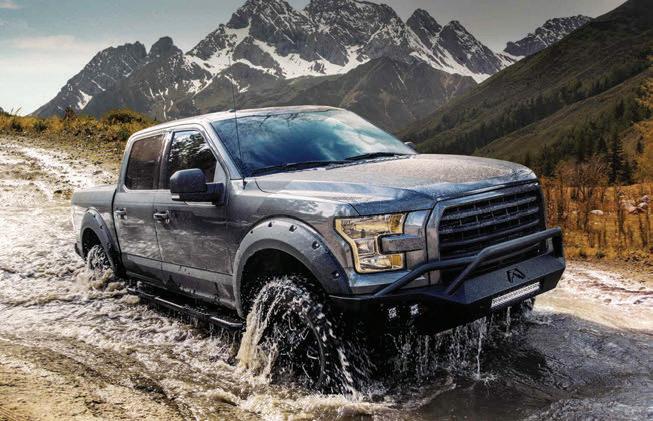





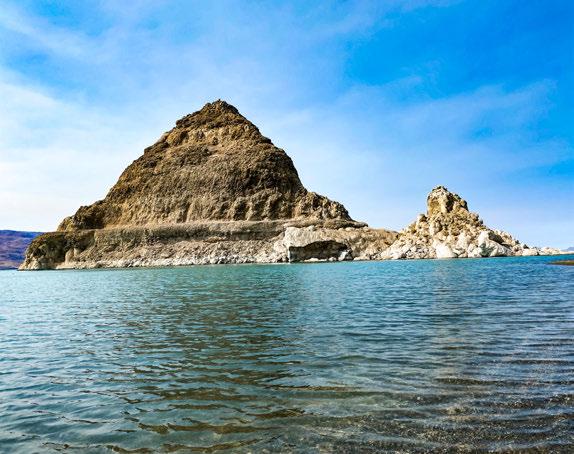



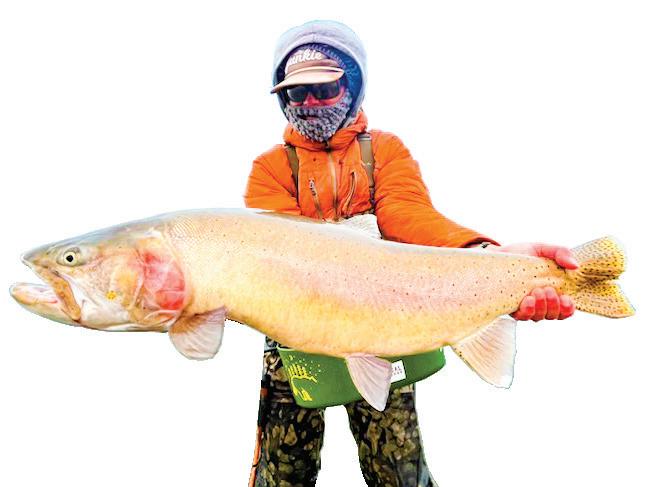

small towns with character and bigcity services. I have been enamored with them for years, and I make many trips a year to indulge in the outdoors during the day, followed by indulging in comfortable lodging, great dining and kooky bars at night. While I’ve stayed in more than half of the hotels in town, I continue to return to the Hells Canyon Grand Hotel (hellscanyongrandhotel.com) in Lewiston because of the giant, comfortable rooms, close proximity to everything in the valley and safe parking lot where I like to stash my truck and boats. I typically enlist the area’s fleet of female taxi drivers (Discount Cab) to haul me around while in town. The one time I strayed from Discount, I ended up in an old SUV enjoying a ride with a cat that had a litter box in the back. At least he was a friendly cat.



Clarkston’s Skate Pierce is owner of the two best bars I know of in all of Eastern Washington, Hogan’s and The Drinky Box. Both have topnotch drink selections and serve excellent food, the latter serving gourmet hot dogs (“glizzies,” as the kids call them these days) and the single best macaroni salad I’ve ever had. On the seventh day when God rested, he may have whipped up this salad. Along with these two gems, there are other excellent and affordable dinner restaurants, including my favorite in the valley, Sautee on 6th, and two strong sushi bars. For breakfast, try Mystic Café, Waffles and More, and Hazel’s Good Eats.
If you prefer to camp, count on the valley’s stores offering full provisions, including sporting goods. As I put the finishing touches on this article last month, I planned to head to the LC Valley in late April to look for morels emerging early from some of my honey holes in the Umatilla National Forest. I’ll likely also tote my shotgun along as I hunt mushrooms in case an unwary gobbler or jake reveals himself, and I’ll throw a couple of travel bass rods in my truck and some plastics. I get as excited to visit the valley as I do anywhere in the West.

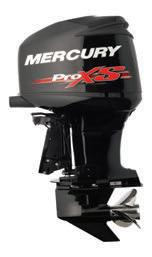
CONNECTICUT
Connor’s and O’Brien Marina Pawcatuck, CT connorsandobrien.com
Defender Industries Inc. Waterford, CT defender.com
O’Hara’s Landing Salisbury, CT oharaslanding.com
MASSACHUSETTS

Captain Bub’s Marine Inc. Lakeville, MA captainbubsmarine.com
Doug Russell Marine Worcester, MA WorcesterBoating.com
Everett Bayside Marine 1111 Craftsman Way Everett, WA 98201 (425) 252-3088 www.baysidemarine.com
Action Marine & Watersports Inc. Holyoke, MA actionmarineholyoke.com
Bill’s Outboard Motor Service Hingham, MA billsoutboard.com
Essex Marina LLC. Essex, MA essexmarinallc.com
McLellan Brothers Inc. Everett, MA mclellanbrosinc.com
Merrimac Marine Supply Methuen, MA merrimacmarine.com
Nauset Marine-Orleans Orleans, MA nausetmarine.com
Obsession Boats East Falmouth, MA capecodboatcenter.com
Portside Marine Danvers, MA portsidemarine.us
Marine Boat
Riverfront Marine Sports Inc. Salisbury, MA riverfrontmarine.com
503 Jacks Lane Mt Vernon, WA 98273 (360) 336-2176 www.mastermarine.com
South Attleboro Marine North Attleboro, MA www.sammarine.com
Wareham Boat Yard W. Wareham, MA wareham-boatyard-marina.com
NEW HAMPSHIRE
Dover Marine Dover, NH dovermarine.com
Winnisquam Marine Belmont, NH winnisquammarine.com
RHODE ISLAND
Billington Cove Marina Inc. Wakefield, RI bcoveyc.com
Jamestown Distributors Bristol, RI jamestowndistributors.com


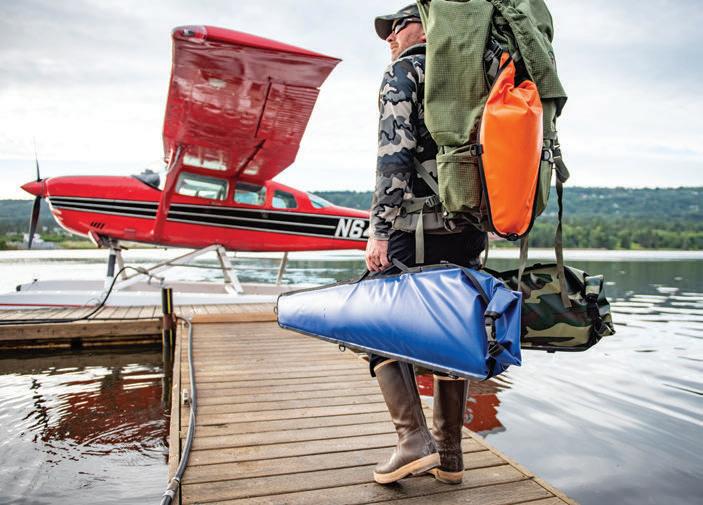






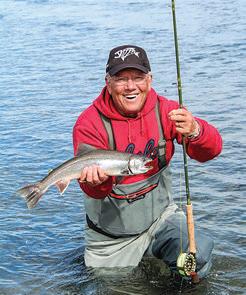

Our remote Alaskan fishing lodge is situated on the upper stretches of the beautiful Egegik River. You’ll watch some of Alaska’s most stunning sunrises, complete with a distant, active volcano. We are a fishing camp specializing in coho fishing, brown bear viewing, and flyout fishing adventures to even more remote destinations in the Last Frontier.
The Egegik River is touted by many experienced anglers as the best silver salmon stream in all of Alaska. Becharof Lodge On The Egegik River was the first fishing lodge to become established on the breathtaking Egegik River, and is less than a 5 minute boat ride from some of the best fishing holes on the entire river.
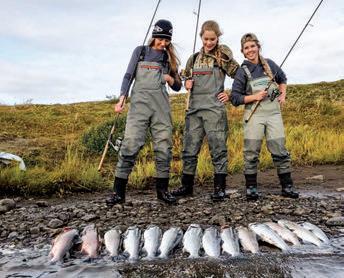


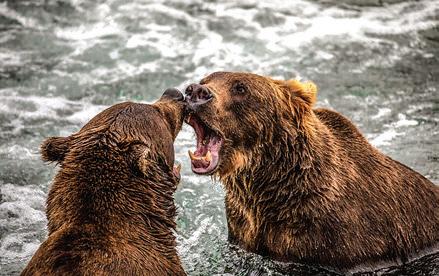
Included in your fishing trip:
• 6 days fishing/5 nights stay in camp
• Experienced, fully guided fishing.
• Comfortable cabins furnished with beds, cozy comforters & bedding.
• Home cooked meals, snacks, and nonalcoholic beverages.
• Transportation from the lodge to prime fishing holes on the Egegik River.
• Freezing and vacuum sealing of your fish, up to 50 lbs., per angler.






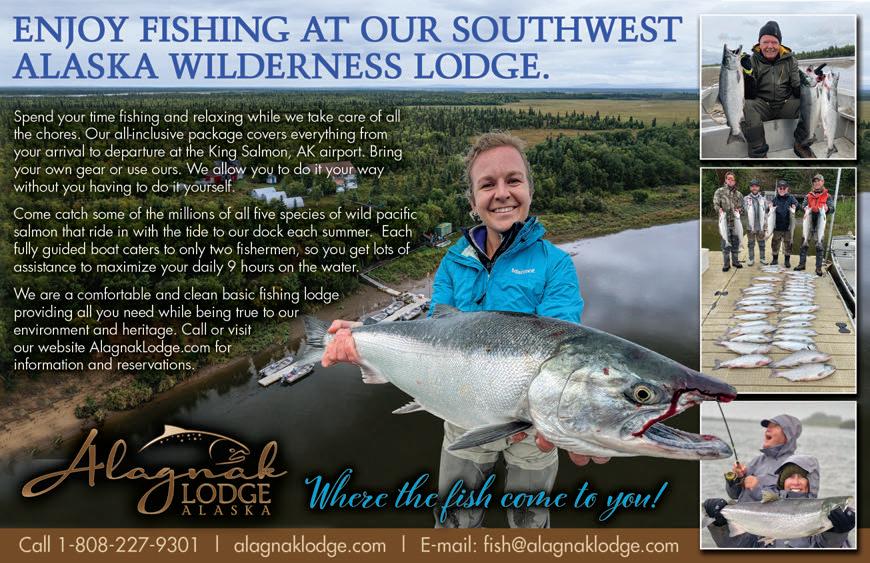

THE PREMIER SPORTING GOODS STORE ON PRINCE OF WALES ISLAND FOR ALL YOUR FISHING, HUNTING, AND CAMPING NEEDS! KNOWLEDGEABLE STAFF WILL LET YOU KNOW WHERE, WHEN AND HOW!

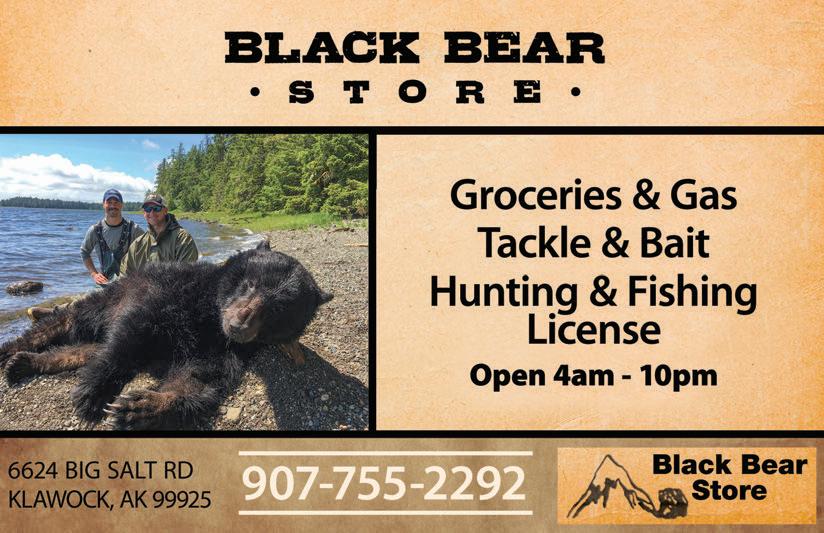

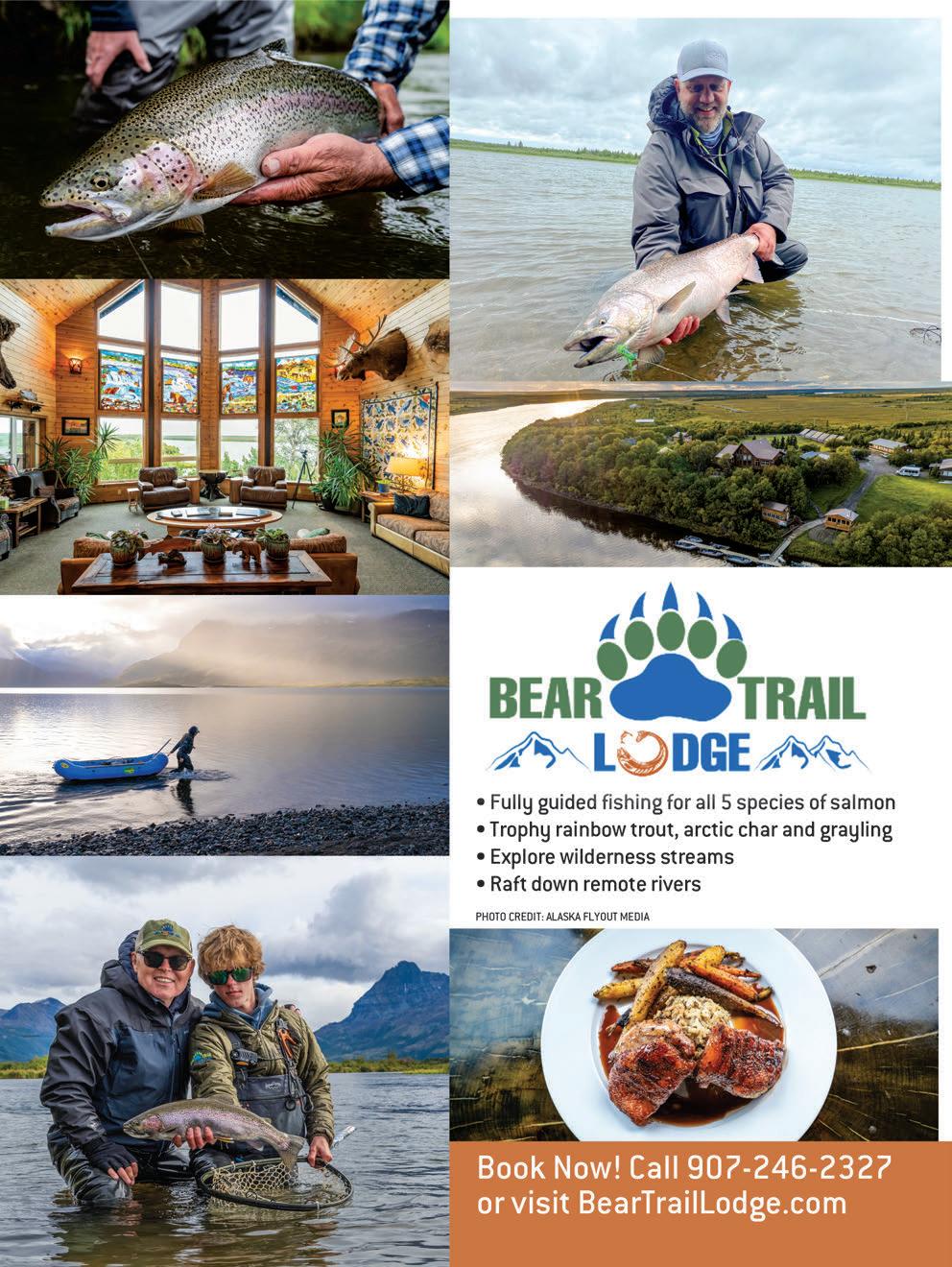
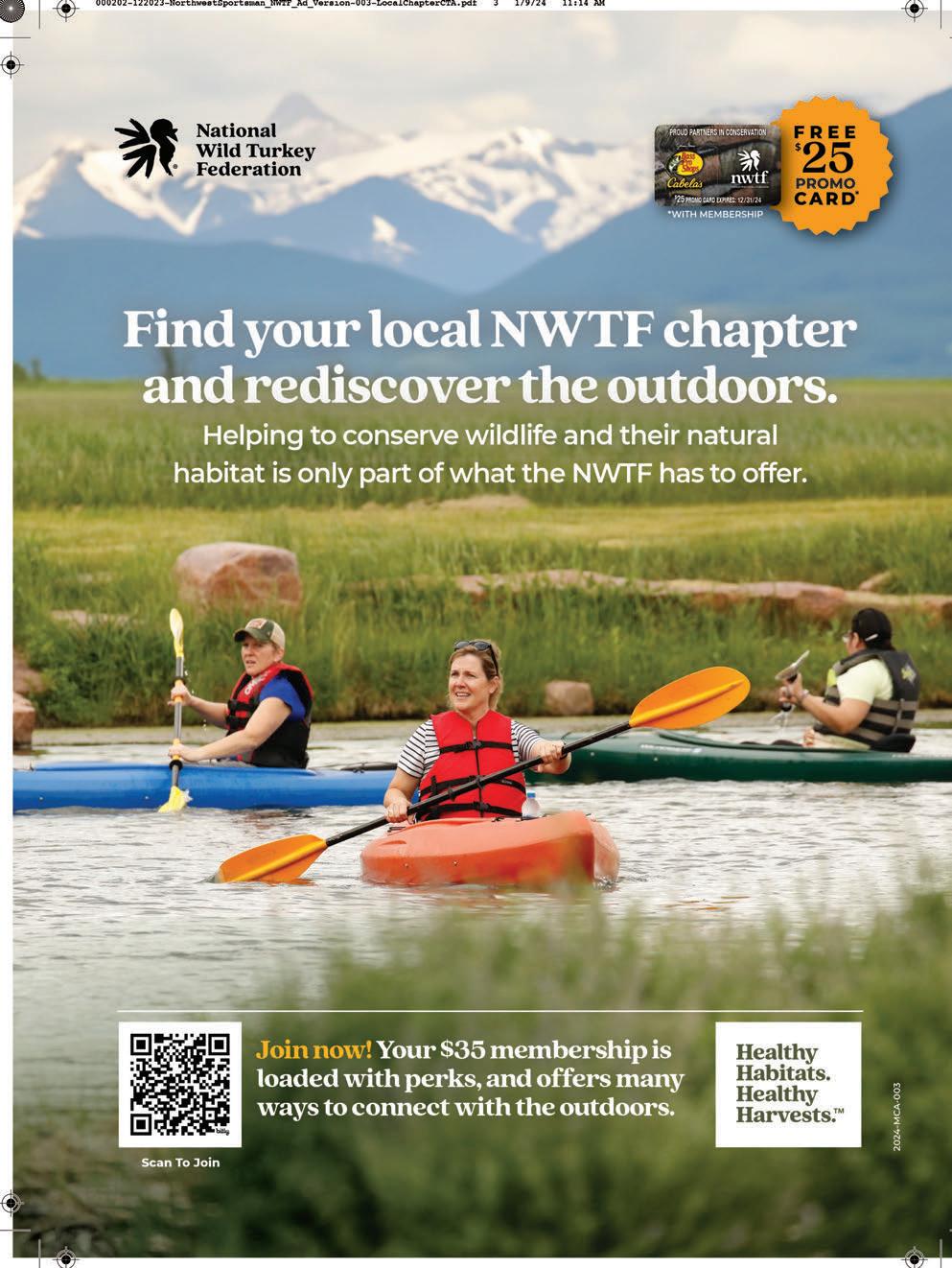

Spring turkey season runs through May 31, so there is still plenty of time to get out there to the places detailed in this column and in the magazine last month.Weather conditions have improved and you’ll have increasing daylight hours to get the job done.
Even if you didn’t make April’s opener, May actually offers the bulk of hunting time and opportunity, although with everything in full bloom and more people heading to the outdoors, you will have to pay attention to where folks are … and the birds have moved away from them.
For example, it will likely be tougher to find birds up along the Teanaway River valley as hiker traffic becomes increasingly heavy.
The smart money is still on turkey central – Northeast Washington – from northern Spokane County up through Stevens County, and I believe the southern slopes of Bethel Ridge west of Yakima might pay off. By now I suspect South Cle Elum Ridge will have seen plenty of traffic, east of the Five Corners junction on USFS Road 3350. The hills around Liberty east of Highway 97 in Kittitas County should also remain a good gamble.
Vegetation is greening up, so you may want to shift camouflage accordingly with more green patterns, and as I mentioned last time, don’t be shy about mixing different camo patterns together.
At what range can you shoot? That is a question for which there is no pat answer, but anything within 35 to 40
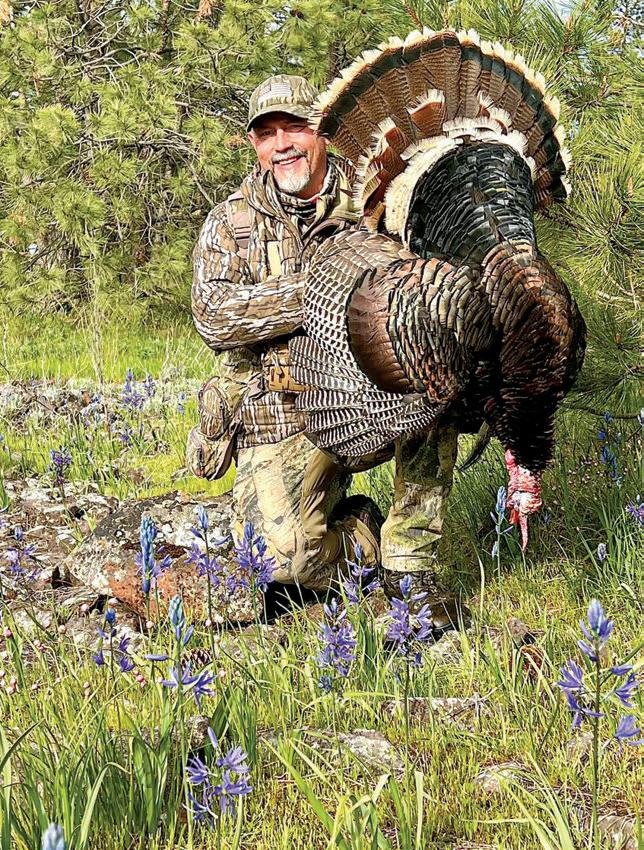


yards is doable for many folks. The closer you can coax a bird, the better, and much will depend upon the choke and load you’re using. This is where patterning your gun/load combination prior to the opener is critical.
If you are using decoys, it might be prudent to check the distance with a rangefinder from the decoy to your blind. Then you will know for sure if a tom struts in close just how far your shot will be.
SHIFTING GEARS, THE folks at Marlin (Ruger owns them) recently unveiled a couple of new lever-action rifles, and I’m guessing they will quickly gain acceptance from folks looking for something new.
The SBL Series Model 1894 is done in stainless steel with a polished finish. Chambered for the .44 Magnum/.44 Special, this levergun is an eyeful. Weighing 6.3 pounds, the Model 1894 has an overall length of 33.25 inches. The 16.1-inch cold-hammer-forged barrel is cut with six lands and grooves on a 1:20inch right-hand twist. It is threaded at the front end for whatever accessory one may wish to mount. The front sight is fiber optic with a Tritium ring, while the rear sight is an adjustable Ghost Ring.
The stock is gray laminate with a thick recoil pad on the butt and a narrow forend, both the grip and forend are handsomely checkered, and this rifle is fitted with a loop lever to accommodate gloves.
Marlin builds this rifle with a crossbolt manual safety, and the traditional half-cock is also present. The tubular magazine holds eight cartridges. The MSRP is $1,529.
There’s more. The company’s Dark Series Model 336 should appeal to folks who don’t care for semiauto rifles or didn’t buy one prior to Governor Jay Inslee’s ban, which is being challenged in federal court by the Second Amendment Foundation, where I work, and others.
Marlin’s Dark Series 336 is chambered for the .30-30 Winchester, which has never lost its usefulness, especially in Washington and Oregon. This model has a nylon-reinforced polymer stock and handguard-type forend, and the stock features M-Lok attachment slots, flush cup sockets for QD sling swivels and an integral cheek riser, which comes in handy if you mount a scope.
The cold-hammer-forged alloy steel barrel measures 16.17 inches and is also
topped with a front fiber optic sight with Tritium ring, and an adjustable Ghost Ring rear sight. It is cut with six lands and grooves on a 1:11-inch right-hand twist. Overall length is 35.5 inches.
The threaded barrel will accept an accessory, and comes from the factory with a radial muzzle brake installed. The tubular magazine holds five cartridges, and like the SBL, the action features a cross-bolt safety and the traditional halfcock safety.
The barrel, receiver and other major components wear a graphite black Cerakote finish, while the bolt and lever have a nitride finish.
THIS IS THE time of year when outdoorsmen and -women head for the wilds, whether for camping, backpacking, casual hiking or maybe a long-awaited trek to Alaska. If you’re heading off the pavement, take a gun, for any number of sudden emergencies.
Down here in the Lower 48, if you choose a sidearm, my suggestions lean toward revolvers in traditional chamberings. Those would include the .357 Magnum, .41 Magnum, .44 Magnum, .44 Special and .45 Colt.

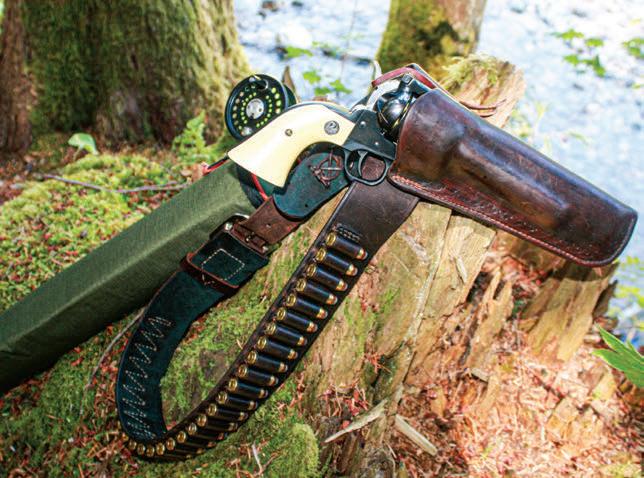
If you’re fishing or recreating in bear and cougar country, it’s a good idea to have at least a sidearm handy in the event of an emergency. Below are two popular calibers for carrying in the woods, .41 Magnum and .357 Magnum. (DAVE WORKMAN)
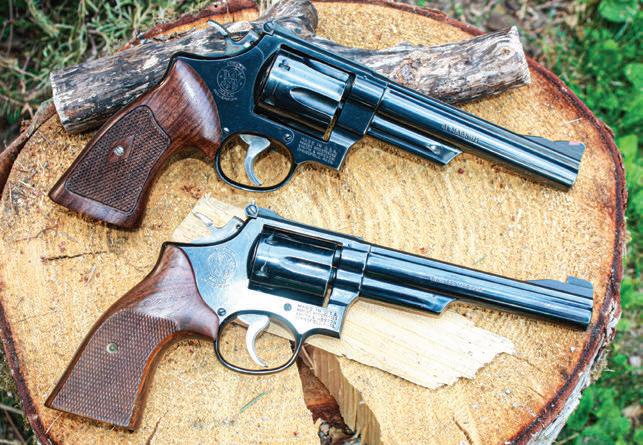
Any of those calibers will handle pretty much any trouble you might encounter on the trail, but if you choose to carry a rifle instead, make sure it is relatively lightweight, has a good sling, is of reasonable caliber (either of the two Marlin models profiled above should fill your needs) and you have a hunting license. I’ve been recently laying in my
firewood for next winter, and that takes me up into the gravel-road country of Washington’s west-central Cascades. On those treks, I keep a revolver handy because it’s the better choice for the backcountry. All you need is loose ammunition to make it work, while the semiauto pistol requires a magazine, and should something happen to that
magazine, you could be in trouble. If you pack a semiauto, always have a spare magazine; two spares are better. My suggestion covers two calibers only: 10mm and .45 ACP.
For those headed north to try their luck along any of the many salmon rivers in Alaska, the choices might also include big wheel guns chambered in one of the following calibers: .454 Casull, .460 S&W, .475 Linebaugh, .480 Ruger or .500 S&W. These are really big cannons, but they will put the hurt on anything you might encounter up in the bush.
Of course, there are still folks who prefer such things as a Mossberg 500 in 12-gauge with a pistol grip, or a .45-70 Guide Gun, a .444 Marlin or some other big-bore emergency tool. Personally, I prefer a handgun, carried in a chest-type shoulder holster, which keeps the gun right there if needed.
WHY AM I focusing on this? About two months ago, a mountain lion attacked one of five women who were mountain biking not far from my home in eastern King County. About six years ago, and not even 4 air miles from that incident, another healthy cougar attacked and killed one of two cyclists, mauling the other in the process.
Both of these animals were killed by game wardens responding to the scene.
Last month on social media, someone posted a photo of a cougar spotted in Seattle’s Magnolia neighborhood. I see coyotes frequently in Bellevue, and remember two summers ago when the Forest Service had to close a campground on the Snoqualmie River because of bear problems, exacerbated by several dumb people who left food on their picnic tables.
The time has come for outdoorsmen and -women to start lobbying the state legislature to change the law and repeal the ban on hunting apex predators with hounds and allow hunters to bring things back into balance. The ban was adopted nearly 30 years ago and when cougars attack people, show up in residential neighborhoods and bears become nuisances, it’s time to change things. They’ve lost their fear of us, and that’s not


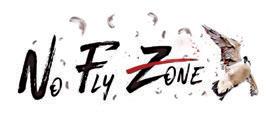

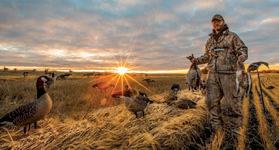
BOOK
• WATERFOWL
• SANDHILL CRANE
• SNOW GOOSE
• CANADA GOOSE
• SPECKLEBELLY
GOOSE
• BLACK BEAR
• WHITETAIL DEER
• UPLAND
306-380-6204 • noflyzone.info@gmail.com nfzwaterfowl.com



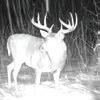
healthy for the critters or us.
More recently than the attack here in Washington, a mountain lion attacked and killed a man in California. It was not the first fatal cougar attack in the Golden State, where it has been completely illegal to kill the big cats for decades. According to KCRA News, the attacking cougar was located in El Dorado County and “euthanized.” That’s a sanitary term for killed.
The legislature must act because the hound hunting ban is state law. Since this was passed by initiative, the ban can be repealed by legislative action. Sure, there will be a fight featuring whiny fur huggers, upon whose hands the blood is smeared.
Opponents of changing the law back to a common-sense approach to predator management will correctly state that such attacks are rare. But why should they happen at all?
Make this a campaign issue because state lawmakers are running for re-election and others running for office the first time should be quizzed on this, up to and including candidates running for governor. You can bet Bob Ferguson would continue appointing people to the state Fish & Wildlife Commission. What about Republicans Dave Reichert and Semi Bird?
Indeed, it may be a good exercise just to quiz gubernatorial candidates on general fish and wildlife management.
Keep this in perspective. You may be a hunter, may be an angler, but you are also a taxpayer and a voter. You have a chance to influence resource management by electing people who will make necessary changes. NS


Hide Tan Formula has been used successfully by thousands of hunters and trappers across the U.S. and Canada. No more waiting several months for tanning. Now, you can tan your own hides and furs at home in less than a week, at a fraction of the normal cost. Our Hide Formula tans deer hides either hair-on for a rug or mount, or hair-off for buckskin leather. Tans all fur skins – muskrat, mink, beaver, fox, coyote, raccoon, squirrel, rabbit, etc. It also applies to bear, elk, moose, cowhide, sheep and even snakeskin. Hide Tan Formula is premixed and ready to use and produces a soft, supple Indian-style tan in five to seven days.
One 8-ounce bottle will tan one deer hide in two medium-sized fur skins. Bear, elk, moose and caribou require three to six bottles. Complete instructions are included. You’ll be amazed how easy it is!
Tanned hides and furs are great to decorate your home or camp and also to sell for extra income. Tanned hides and furs are in demand by black powder enthusiasts, American Indian traders, fly tyers, country trading posts and many crafters. Our products are proudly produced and bottled in the U.S. for over 20 years.
Available at Cumberland’s Northwest Trappers Supply in Owatonna, Minnesota.
Call (507) 451-7607 or email trapper@nwtrappers.com. nwtrappers.com
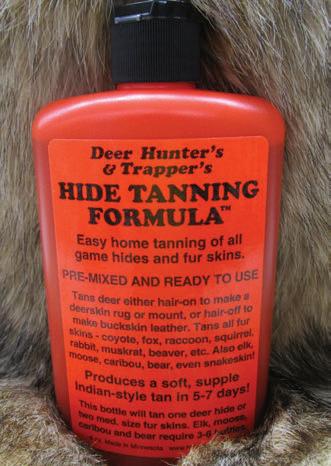





As the snow slowly recedes up the hills and the grass starts to green, my imagination starts to wander. I bet Horseshoe Meadow Trail is clear now … Do you think the morels are popping yet? I wonder if Thunder Peak is snow-free?
The mountains call to me, and I must go.
I start rearranging my hunting gear. No longer am I stuffing shotgun shells and decoys in a day bag to chase thunder chickens. I’m packing for overnight trips. I’m packing for bear hunting.
And each spring I do the calculus on my backpack. What can I go without? What would make life miserable not to have? What would be stupid not to bring, even if I have never used it? What are the must-haves, the nice-to-haves and the luxury items?
Even after weeding, my backcountry hunting pack is still heavy. I can spend two nights outdoors with 45 pounds on my back, my trusty .270 included. Not bad, but not great either.
The thing is, I like to sleep like a princess while camping in the woods. I bring a sleeping bag, a liner, a sleeping pad, a bivy bag and a tent. How dare I! I could cut 2 whole pounds off my setup if I just froze at night and slept on the ground. But my inner Danny Glover from Lethal Weapon comes out: “I am too old for that …”
I could also spend thousands of dollars on ultralight Stone Glacier gear … that I would certainly ruin or lose. I just don’t have the stomach for that investment yet.
Conversely, my dad (who is about to turn 69!) was recently texting me about
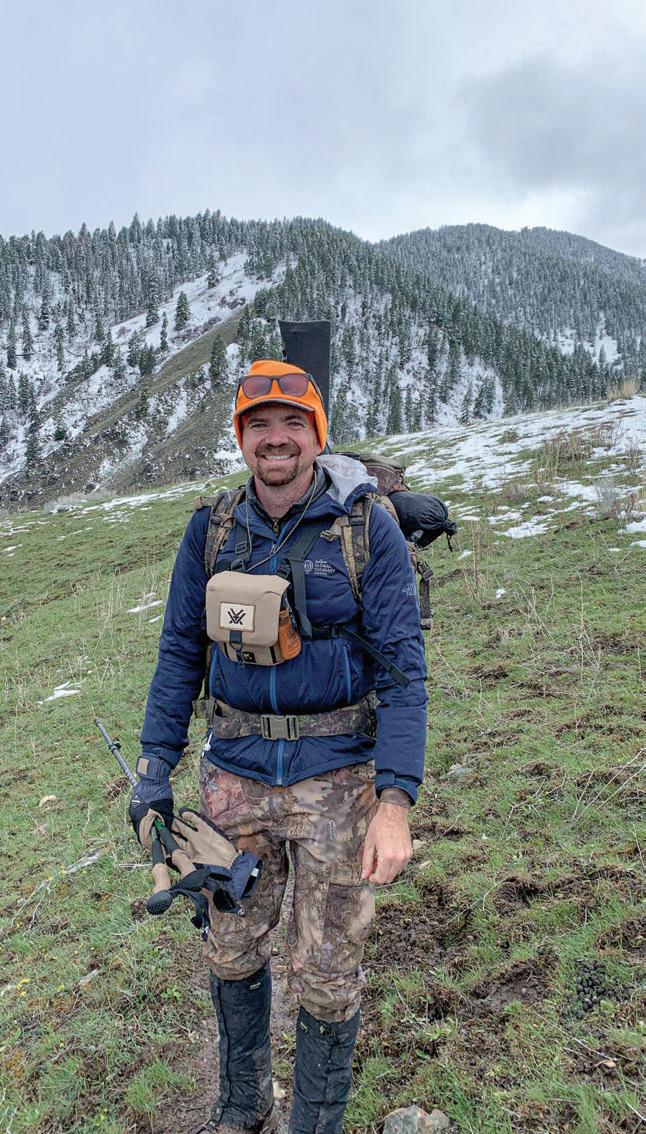
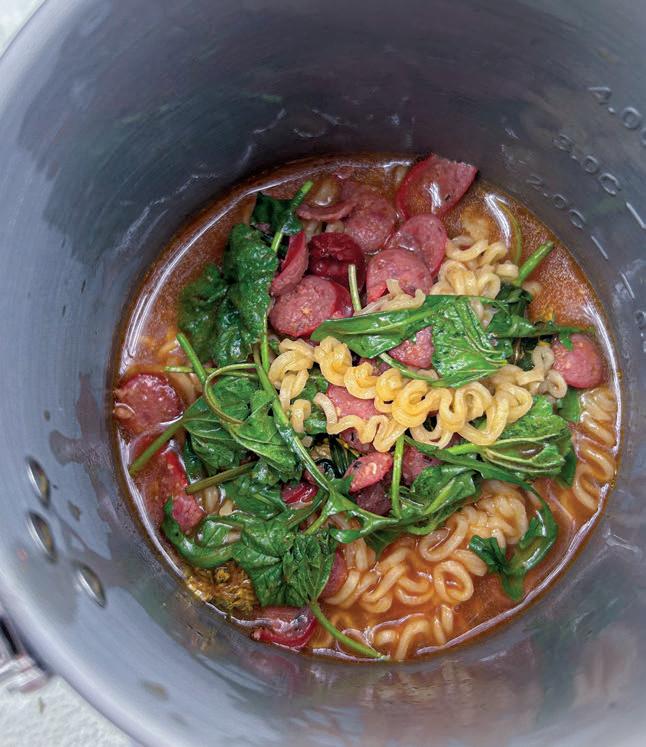
how heavy his two-day backcountry pack was. Twenty-seven pounds, he bragged –at least before the chorizo and tortillas. I clearly must be doing something wrong.
WHILE I MIGHT be packing my sleeping quarters improperly, one thing I do tend to get correct is my food. I do very well packing both delicious and lightweight food. I learned many a lesson from my fellow chef friend Steve Weston, including that backpacking food does not have to suck. (See his book In The Wild Chef on Amazon for more.) You can make your own meals with a little planning and a lot less money.
Case in point. Each year I pack some “upscaled” ramen as a lunch item. I use the cheap stuff – the 50-cents-a-packet stuff. Why? Well, it is easy and very lightweight. It is also a blank slate for cooking. You can do just about anything with it. Want to make a curry? Add some curry powder. Want a spicy dish? Add some chili flakes. Having a calorically dense item like ramen available to make into a variety of different meals is perfect for backpacking.
But don’t stop there. Even if you aren’t backpacking, you can upscale ramen. If weight is not an issue, add all sorts of things, from fresh meat to fresh veggies. It really is a blank slate. Here’s a closer look.
Sometimes things come from desperation. This is an example.
While hunting for bears in 2023 I created a version of the dish below. This one is “better” in so far as I made it in my home kitchen and with clean hands, not over a jet boil, but I am actually not sure it tasted any better. There is just something about enjoying a salty, spicy broth with slurpy ramen noodles while on the side of a green hill glassing for spring bruins that makes my week.
1 package instant ramen
1 cup “wild greens” – look for dandelions, curly dock, wild onions, mint (see my March 2024 column for more gatherable items)
½ cup (1 stick) dried convenience-store meat stick
½ tablespoon dried gochujang (Usually sold as a paste, you can dehydrate it to wonderful effect. Use 1 tablespoon if you are using the paste.)
Water (however much the package of ramen requires)
Bring the water to a boil and add the dried gochujang paste and meat stick. Then boil noodles according to package instructions. When noodles are done boiling, add the “greens” to the mix and stir. They will cook nearly instantly. Let mix stand for a few minutes to avoid lip burns, and then enjoy! –RK
Weight matters in the backcountry, so the lighter your pantry and food bag, the better your back will work the following week. Sometimes you need to think about space and utility. Below are a few tricks for adding flavor without the weight!
Soy sauce packet, sweet chili sauce packet, chili sauce packet: I have no shame. I will ask for extra sauce packets sometimes when I go to a certain pandathemed restaurant with the boys. I then stash those in the pantry bag I take with me hunting and it is an easy addition to a ramen meal.



Red chili flakes, togarashi, chili powder, dried gochujang, curry powder : A little bit of these seasonings go a long way toward making something delicious. Packed in a few of those snack-sized Ziploc bags, these spices can really elevate a trip!
Dried/cured meat: No refrigerator, no problem. Beef sticks, jerky and cured sausages all make great additions to ramen. I have even used a Slim Jim and Old Trapper. Dried meat adds that extra little kick of protein to the salt and carbs. Game changer!
Dehydrated vegetables: The bulk section of your local grocery store will often have a dried veggie medley. Usually, it is some sort of soup mix. A little bit of this in the broth can make you feel almost like you are slurping down a salad.
If neither weight nor refrigeration is a consideration, the sky is literally the limit with ramen. These noodles are universal. You don’t even have to go Asian with all the cuisine types. When I googled for some additional ideas, I saw people doing shepherd’s pie and spaghetti, as well as stuff I had never even thought of – some dude added the crunchy noodles to his taco meat. Uncooked ramen in taco meat?!? It actually looked awesome and I am going to give it a try.
Eggs: A hard-boiled egg in ramen is a delight. You can fry an egg and put it on top and get deliciousness too. Basically, add an egg if you can.
Grilled/simmered meat: I often feel like fresh meat is what makes a meal. Adding fresh grilled meat to the ramen makes it more of a meal. Whether you use chicken, pork, fish or game, really, it all tastes good with ramen.
Fresh veggies: Add some broccoli to the broth as it boils. You will not be disappointed. Some crunch, some greenery and some flavor all make it very tasty!
The kitchen sink: If you served me a beer, then a bowl of ramen with an egg, grilled meat and some veggies, I would be in heaven.
Toss some dehydrated spices on top and man, oh, man, you’re living the good life! NS



I’d planned on writing my May column on a buddy and how he’s training his German wirehaired pointer pup to hunt for shed antlers. Donn
Walgamuth lives in Redding, California. I’ve known him for nearly 10 years and I always love being around him and his dogs. He’s calm, never raises his voice, isn’t animated and his dogs respect him. They watch every move he makes and eagerly anticipate what’s coming next.
He’s got the most important part of training down – building the relationship.
Walgamuth has a new GWP, Hemi. When Hemi was 3 months old, I spent a couple days withWalgamuth as he taught the pup to shed hunt. He tossed out a white deer shed and Hemi retrieved it. Walgamuth gave him a treat and Hemi wanted more. The toss-and-fetch game progressed into Walgamuth’s hiding the white shed in tall grass, then taking Hemi downwind of it. He walked Hemi into the shed, the pup picked it up and Walgamuth gave him a treat.
Three months later I chatted with Walgamuth. He’d been sending me photos
of all the sheds Hemi and his older dog, Kuiu, age 9, had been picking up.
“The best one was Hemi finding an elk shed,” Walgamuth began. “He smelled that thing in tall grass and thick brush and just kept digging and digging and getting after it! It was amazing to see a 7-month-old pup work that hard, but sure enough, he pulled out an old, white spike shed and ran it right to me!”
THAT’S THE MOMENT the direction of this month’s column changed.
“He smelled that shed?” I asked.
“Oh yeah,” Walgamuth confirmed. “It had rained much of the night and there was a
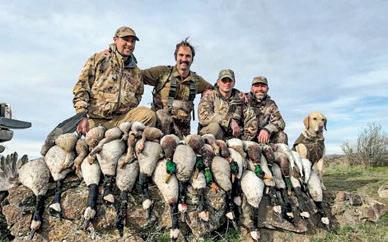
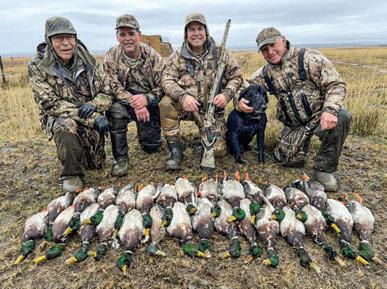

slight breeze in the morning; it was perfect for hunting old sheds.”
Having only sight-trained my dogs to hunt for old, bleached-out sheds, I asked Walgamuth to expand on his trick.
“Thirty years ago, my black Lab found an old shed and I put it in the truck,” he elaborated. “Pretty soon the truck smelled like musty socks. I looked around and learned it was the shed. I tossed it out and he immediately picked it up. I tossed it further and he brought it back, fast. He was loving it. That afternoon we worked the wind and my dog found more bleached sheds, and all of them were wet and smelled like dirty socks.”
That’s when Walgamuth discovered you could use a dog to hunt for old sheds.
In 1994, he started using his Labrador retrievers to shed hunt. In 2009, he switched to German wirehaired pointers for the job.
“These dogs can cover ground,” he confirmed. “One day last year we found 65 sheds.”
Walgamuth had two adult dogs then. Sage, his pride and joy, passed away at 141/2 years old. That’s where Hemi came in.
Kuiu, Walgamuth’s 9-year-old GWP, is a shed-hunting machine.
“These dogs are pretty independent.
Hemi has learned to hunt sheds on his own, without the help of Kuiu,” Walgamuth said. “Hemi is already more into winding sheds than Kuiu is.”
“Kuiu is strong on seeing old sheds, which is great; they complement one another well. As white sheds weather, they hold moisture and we love hunting those on misty days,” he stated.
You know that if we can smell a wet, bleached shed, a dog can sniff it out. One weekend Walgamuth’s dogs gathered 88 sheds, about three-quarters of which were white, old sheds.
“As soon as the dog delivers a shed, I give them a treat and they’re right back on the hunt,” he shared. “They’re very driven and will hunt all day.”
Walgamuth started training with treats. He’d toss a shed in the yard, then later hide it. When the pup brings back a shed, it’s rewarded. The reward is given quickly, calmly, and the dog is right back on the hunt.
He said he and his dogs find a lot of matched sheds.
“Once a pup finds a shed, I’ll mark the spot, then we work in circles,” he shared. “We’ll work a 400- to 500-yard radius looking for the other shed. If they don’t find it by then, we move on. Deer can drop
their antlers days apart, but a lot of times we find the matches close to one another.”
Right now, Hemi ranges about 200 yards. Pretty soon he’ll be out to 500 yards, then to 800. Walgamuth runs tracking collars so he can keep track of where his dogs are when losing sight of them.
THOUGH THE GRASS is growing tall and days are warming up, hitting a moist May morning could result in your pup finding some old sheds. Get some old sheds wet and practice in the yard. Toss them first, then hide them. The dog needs to learn what they’re hunting for.
If shed hunting in dry habitats this time of year, watch for rattlesnakes. If it’s going to be a hot day, stop early. Also keep an eye out for ticks and always check your dog for them. Be sure and take plenty of water. And remember, just as with upland birds, early morning and evening will be best for shed hunting on hot days, as that’s when most of the scent is near the ground. NS
Editor’s note: Scott Haugen is a full-time writer. See his basic puppy training videos and learn more about his many books at scotthaugen.com. Follow his adventures on Instagram and Facebook.
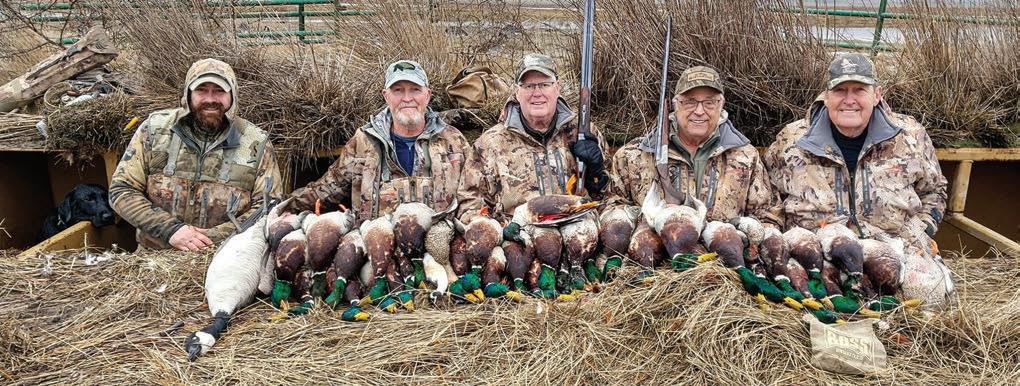



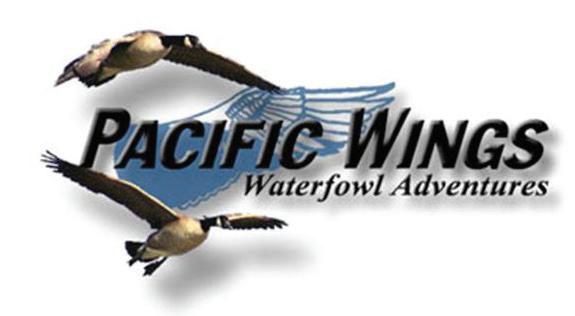





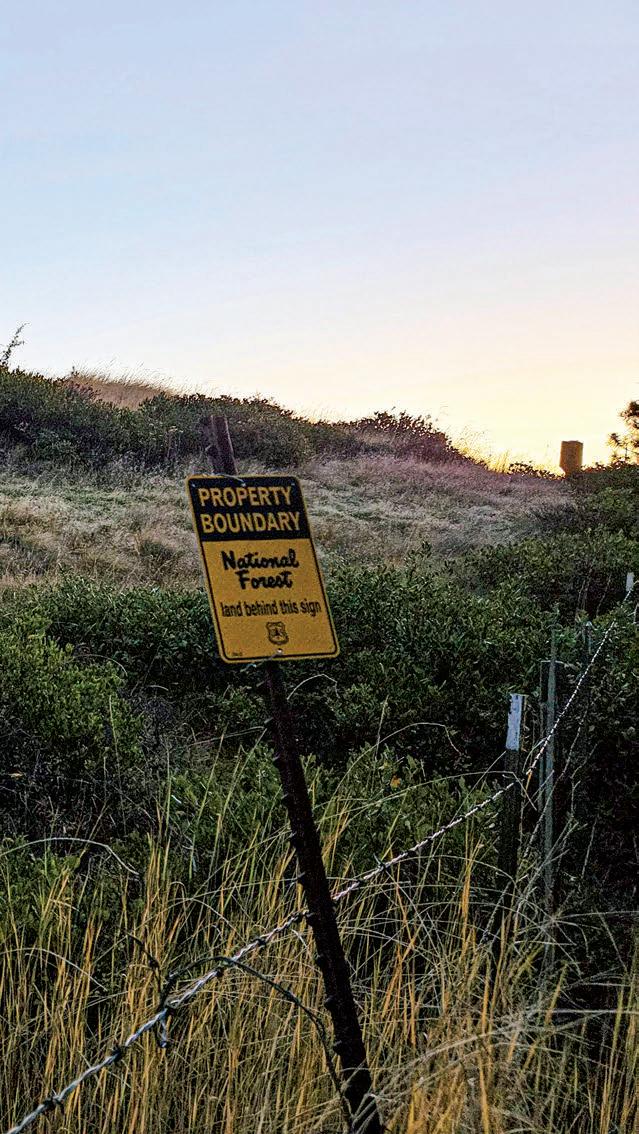

How many times have you been out in the field and found yourself surrounded by other hunters? I cannot even count how many times this has happened to me. For this reason, I have now found myself doing whatever I can do to avoid other hunters 90 percent of the time. My family, friends and I just like being in areas with fewer people and less pressure on the animals. For this same reason, we are strategic in which hunts we apply for and what seasons we hunt.
But sometimes being around other hunters is unavoidable, especially with the number of people on YouTube promoting how easy it is to be a backcountry hunter. My friends who are outfitters in different wilderness areas of Idaho and Montana have consistently been seeing more and more people each year, which 100 percent correlates with the increase in backcountry hunts being promoted on social media.
If you hunt public land regularly, you will without a doubt find yourself in a situation where you will venture into an area that someone thinks they own. In these situations, it is not worth it for me to be in an area someone has claimed and may appear aggravated and irritated by my presence. Given the world we live in today, I find it better to just leave and find my own spot with no one around versus trying to push my luck with someone who may be unpredictable.
However, on the flip side, public land is considered everyone’s land, so should it really be first come, first serve? No one has the right to say they own a spot. But you will find some areas that generations of families have hunted for years or camped in the same spot for decades, and so on. This could be another situation where you may find someone irritated by your presence. Whether it is right or wrong, I would urge anyone just starting out hunting to avoid these types of situations. They could certainly leave a bad taste in your mouth, especially if you have any youth hunters along with you.
NOT LONG AGO, I found myself in a situation with a gentleman who had hunted an area of public land for 20-plus years. He
Fellow sportsmen can develop a sense of ownership of federal, state or other open land from their long connections to it. Many are still more than willing to share, but for some it becomes “their” spot and can lead to confrontations. Sometimes it’s best just to walk off and find a new area than argue. (ANDY WALGAMOTT)
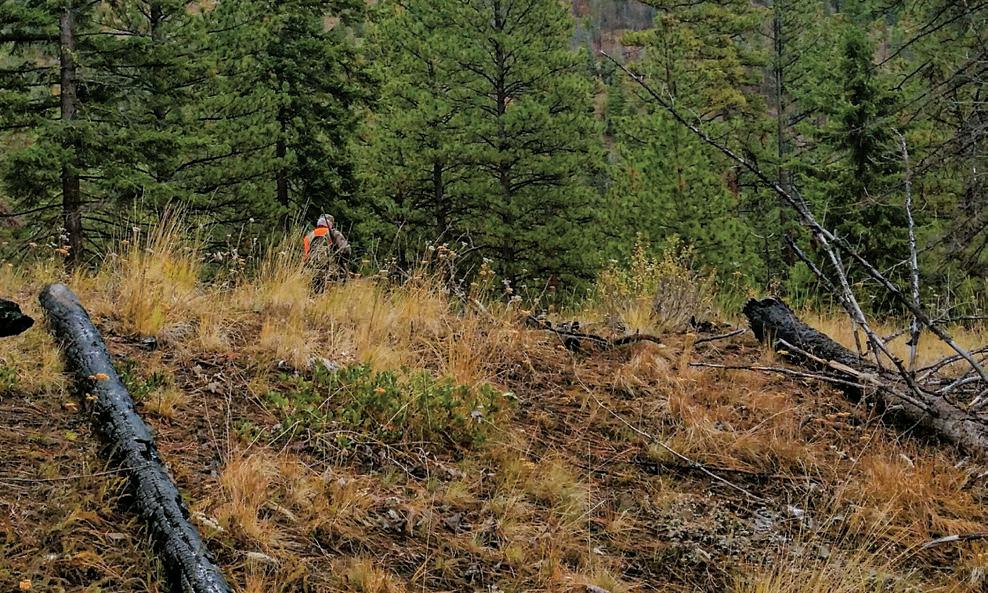
got upset at me and some of my friends for being in “his” spot. There had been some miscommunication and misinterpretation of comments from the night before, which most likely contributed to him being upset, but I still found myself in an uncomfortable situation that could have potentially been avoided.
In the end, it all worked out and the gentleman was more willing to let us hunt that same area. But even though we knew it held a lot of elk, my wife and I chose to hunt a totally different spot starting from scratch. It did not take too long before we found ourselves in a new area full of elk. After our morning hunt, we met up with my friends and I told them about the spot, so we formulated a game plan to spread out and hunt it that afternoon. Not even an hour into the hunt, one of my friends was able to notch a tag. Another friend bagged one in the last hour of shooting light.
We could’ve put our foot down and kept hunting the area we’d originally gone to with the aforementioned gentleman, since it was all public land and who has
the right to tell us we can’t be back there. But that would have been zero fun for me and especially my wife, who is the most nonconfrontational person in the world. She would rather sit in camp than have any sort of confrontation. Even though at first my friends wanted to continue hunting the original area, my explanation to them was that there were elk everywhere in the unit, so there was no reason to deal with someone who was obviously irritated by our presence.
THERE ARE OTHER situations you may encounter while hunting public land, including locking your eyes on a bull or a buck and happening to catch someone else in pursuit of the same animal. In this situation, the correct thing to do is to back out or stay put to make sure that you do not mess up the hunt for the other individual or individuals who are pursuing that animal. Never in a million years would I try and make a play on something that someone else was actively pursuing, even if I had the upper hand to harvest the animal. To me, it is 100 percent unethical
to shoot something out from underneath someone else. This can also lead to unnecessary confrontations, and the other person would have a right to be upset.
Confrontations in the field are a no-win situation for anyone. My two young boys – Ryland, age 6, and Barrett, age 4 – are already tagging along with my wife and I on some hunts, so the last thing I want them to be exposed to is an incident where there might be a chance of someone being upset or having an argument.
It also has a lot to do with safety. I honestly do not trust a whole lot of people, especially in the world we live in today. It is incredibly sad but true that people are out for themselves and could care less about anyone else. Given that it’s hunting, guns are also on hand, and unfortunately sometimes alcohol may also be involved. For me, alcohol is a no go in the field. But the truth is, there are a lot of folks who drink while they are hunting. Alcohol can cloud people’s judgment and could potentially lead to them making stupid mistakes, so definitely consider these factors when it


One of author Dave Anderson’s golden rules is to not pursue deer or elk that he can see are being actively hunted by another person. Shooting at the same animal can result in heated arguments when it comes time to claim the carcass, making the situation best avoided. (ANDY WALGAMOTT)
comes to confrontations. Be respectful, understanding and open-minded to avoid disputes while in the field.
But if you ever find yourself in a situation where you are uncomfortable, do not be afraid to reach out to law enforcement or game wardens. Do not try to be
the sheriff yourself. This is especially true if you find someone over the top of your game that you just shot. I have never experienced this but have heard many stories of people claiming someone else’s harvest. Get a license plate and call it in.
A handy tool to have enabled while in the
field is onX Maps’ tracker. I always have my tracker on once I have boots on the ground. I mark where I make shots and where the game was. Primarily, it makes it easier for big game retrieval, but it can also provide evidence to law enforcement if you ever find yourself in a situation with someone trying to claim your harvest. I do not ever want to experience this, but have heard enough stories that I am aware it could happen.
IN THE END, be a good person. Use your head and treat others how you want to be treated. It is crazy that we even have to say all this. There are a lot of people out there who have eyes on us. They are looking for any type of ammo to use against us to remove and/or limit our rights and ultimately take hunting away. Instead of fighting against each other, we need to work together for the betterment of our heritage. I want to see my boys hunting one day and have them pass on this great hobby and way of life to their children, but this will only happen if we hunters work together and be respectful of each other in and outside the field. NS




Over 50 Years Of Service To The Trap & Fur Industry
Cumberland’s Northwest Trappers Supply is your one-stop trapping supply headquarters, featuring one of the largest inventories in the U.S. We are factory direct distributors on all brands of traps and equipment which allows us to offer competitive prices. Give us a try. Our fast, friendly service will keep you coming back. Request A Catalog Or Place An Order By Phone, Mail Or On Our Website
If you get in the area, visit our store!




Hide Tan Formula has been used successfully by thousands of hunters and trappers across the U.S. and Canada. No more waiting several months for tanning. Now, you can tan your own hides and furs at home in less than a week, at a fraction of the normal cost. Our Hide Formula tans deer hides either hair-on for a rug or mount, or hair-off for buckskin leather. Tans all fur skins – muskrat, mink, beaver, fox, coyote, raccoon, squirrel, rabbit, etc. It also applies to bear, elk, moose, cowhide, sheep and even snakeskin. Hide Tan Formula is premixed and ready to use and produces a soft, supple Indian-style tan in five to seven days.
One 8-ounce bottle will tan one deer hide in two medium-sized fur skins. Bear, elk, moose and caribou require three to six bottles. Complete instructions are included. You’ll be amazed how easy it is!
Tanned hides and furs are great to decorate your home or camp and also to sell for extra income. Tanned hides and furs are in demand by black powder enthusiasts, American Indian traders, fly tyers, country trading posts and many crafters. Our products are proudly produced and bottled in the U.S. for over 20 years.
Available at Cumberland’s Northwest Trappers Supply in Owatonna, Minnesota.
Call (507) 451-7607 or email trapper@nwtrappers.com. nwtrappers.com




